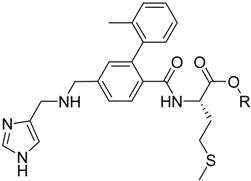Prodrugs for the Treatment of Neglected Diseases
Abstract
:Introduction
Chagas’disease
Sleeping sickness
Leishmaniasis
Malaria
Schistosomiasis
Tuberculosis
Sickle cell disease
Antichagasic prodrugs
Prodrugs of primaquine and nitrofurazone
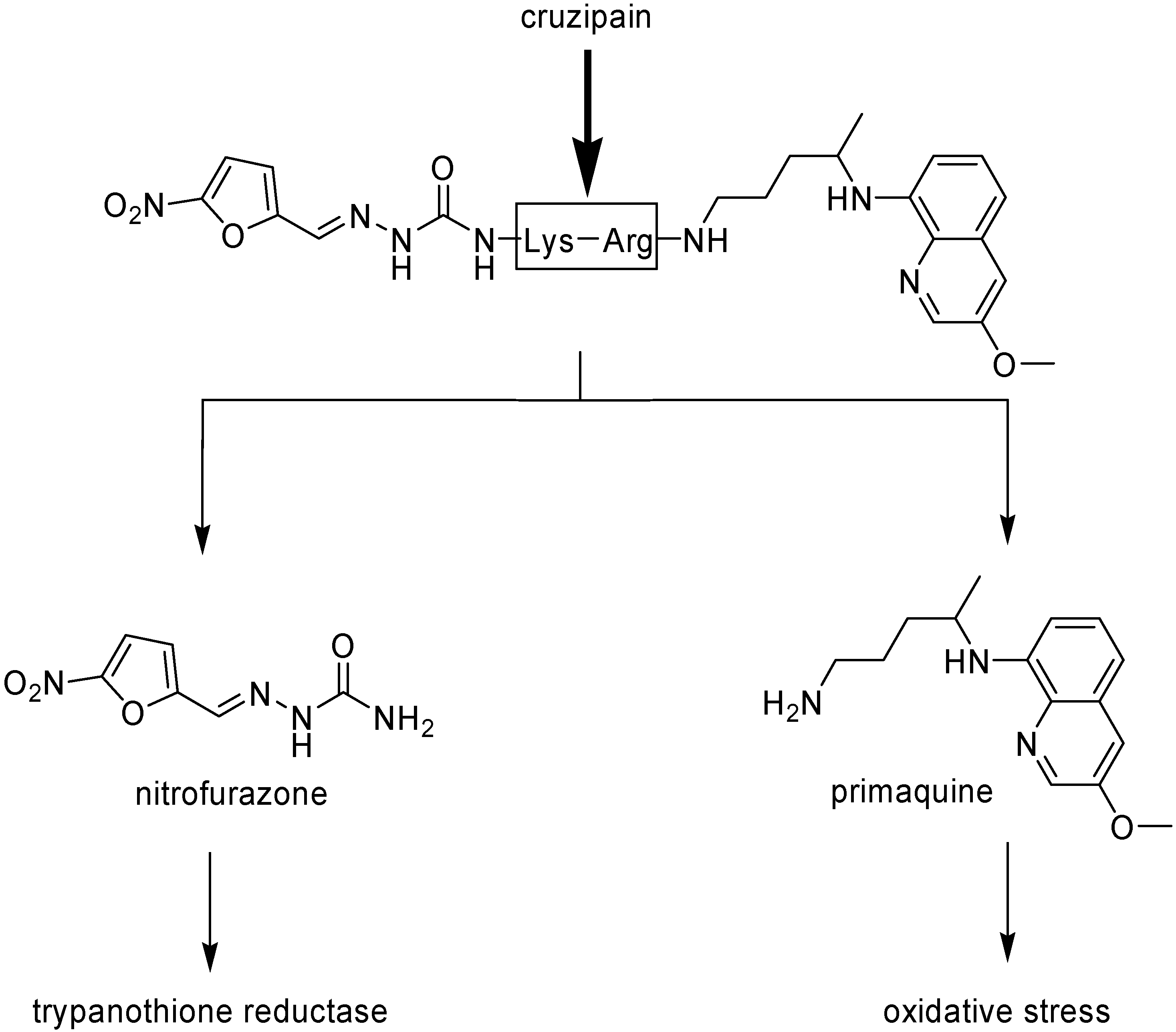
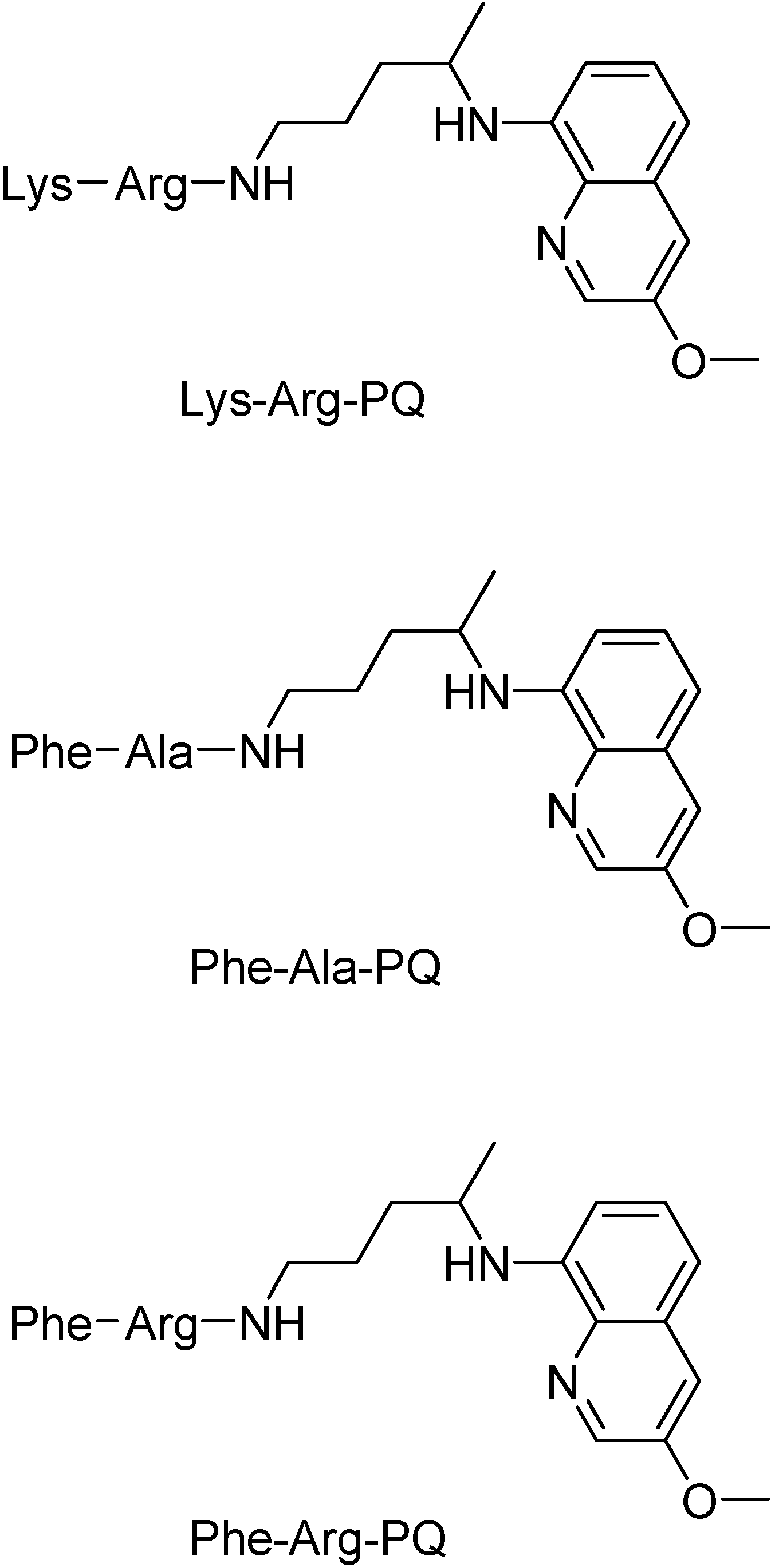
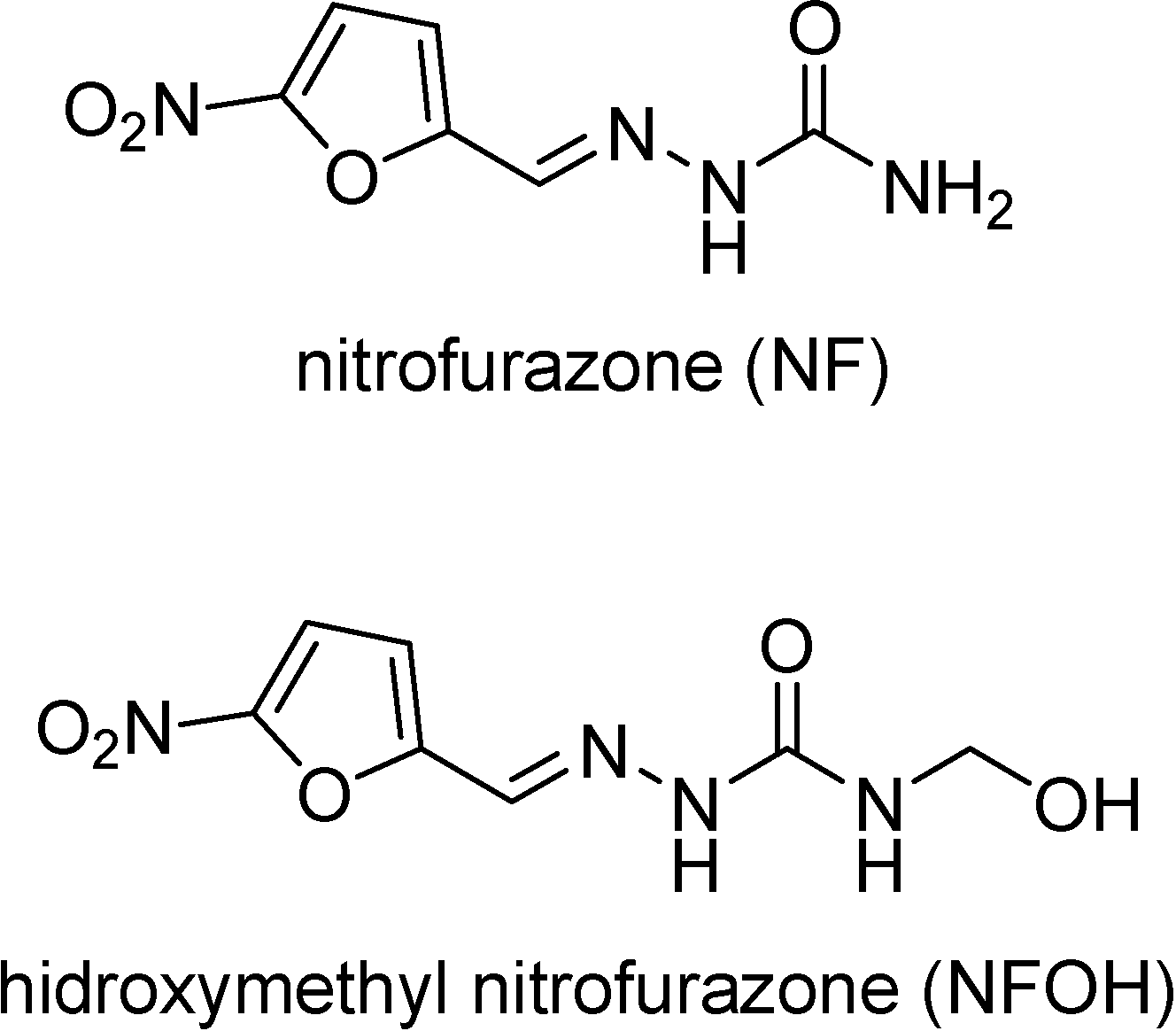
Prodrugs of N-isopropyl oxamate
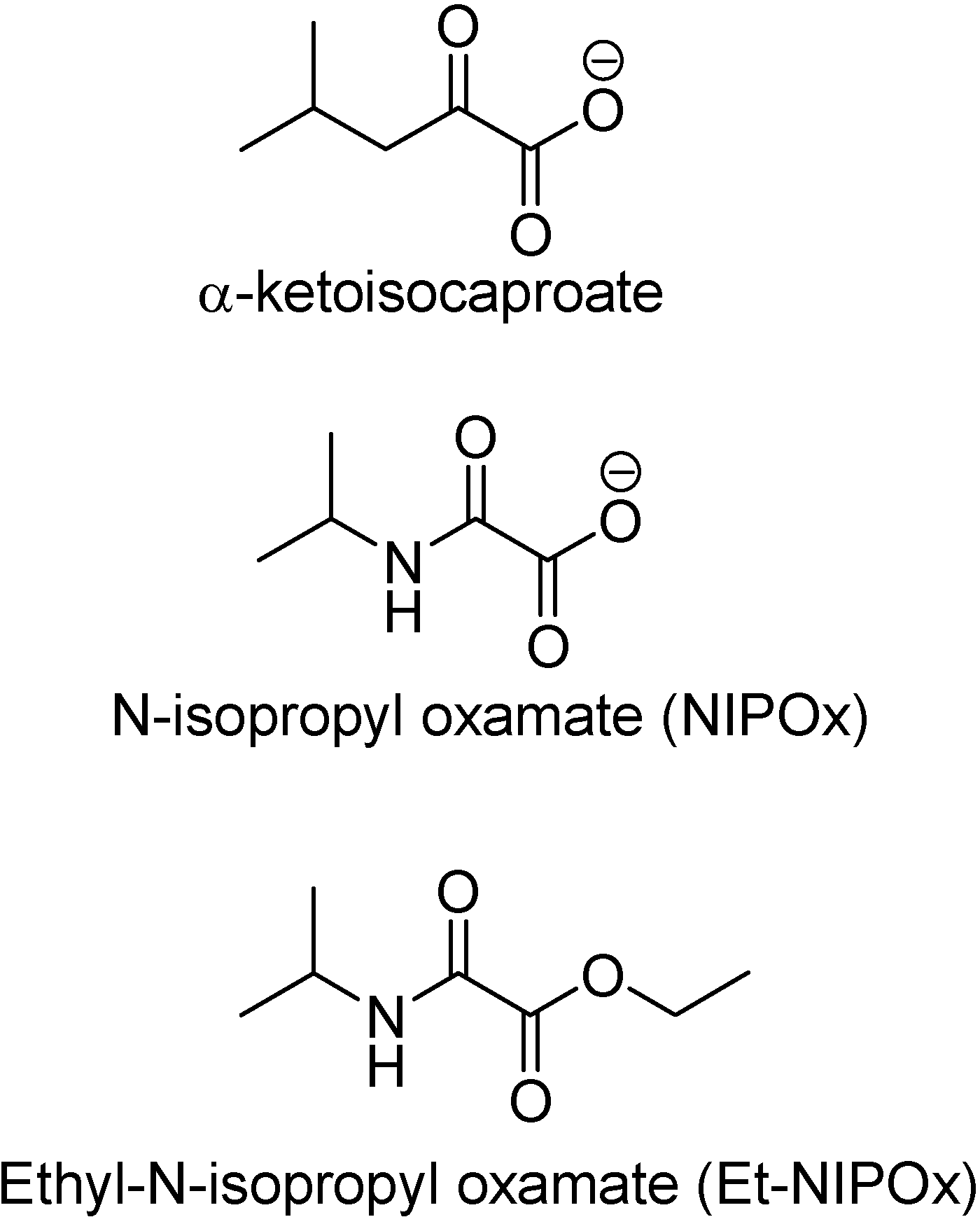
Prodrugs for Sleeping Sickness
ADEPT approach and mAb-drug conjugate for treatment of African trypanosomiasis
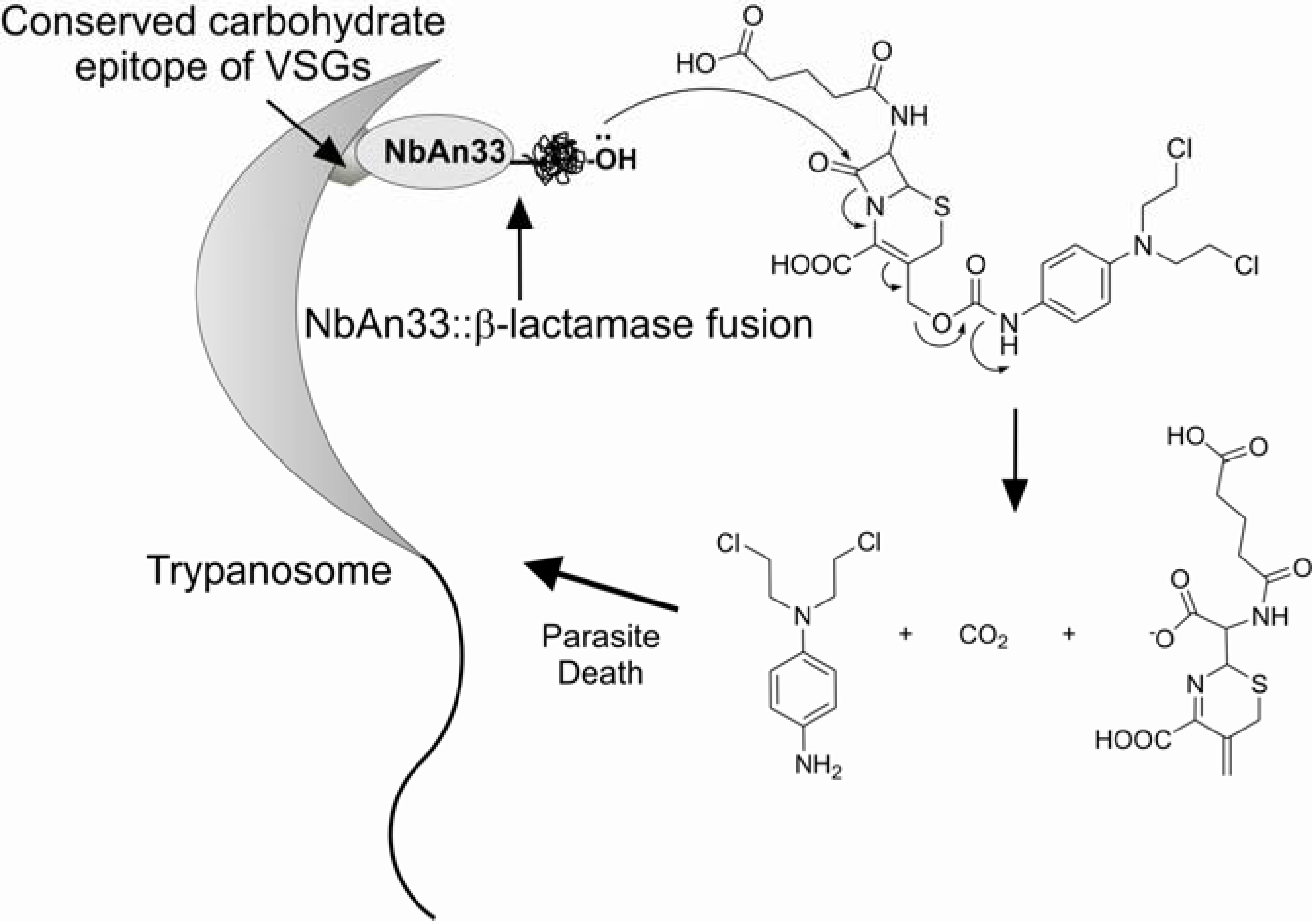
Prodrugs of aromatic diamines
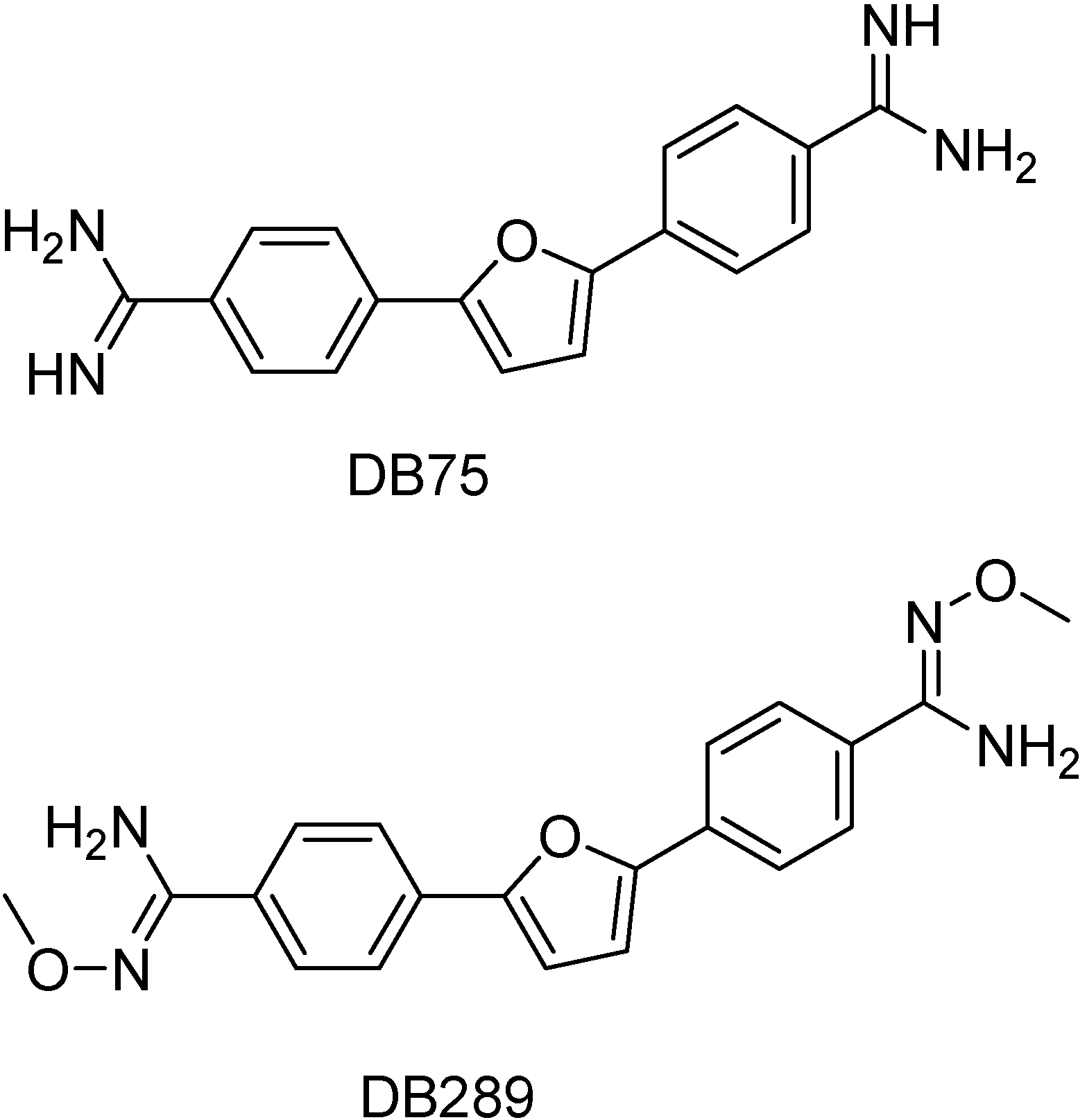
Prodrugs for Leishmaniasis
Glutathione prodrugs

Thermolytically activated oligonucleotide prodrugs
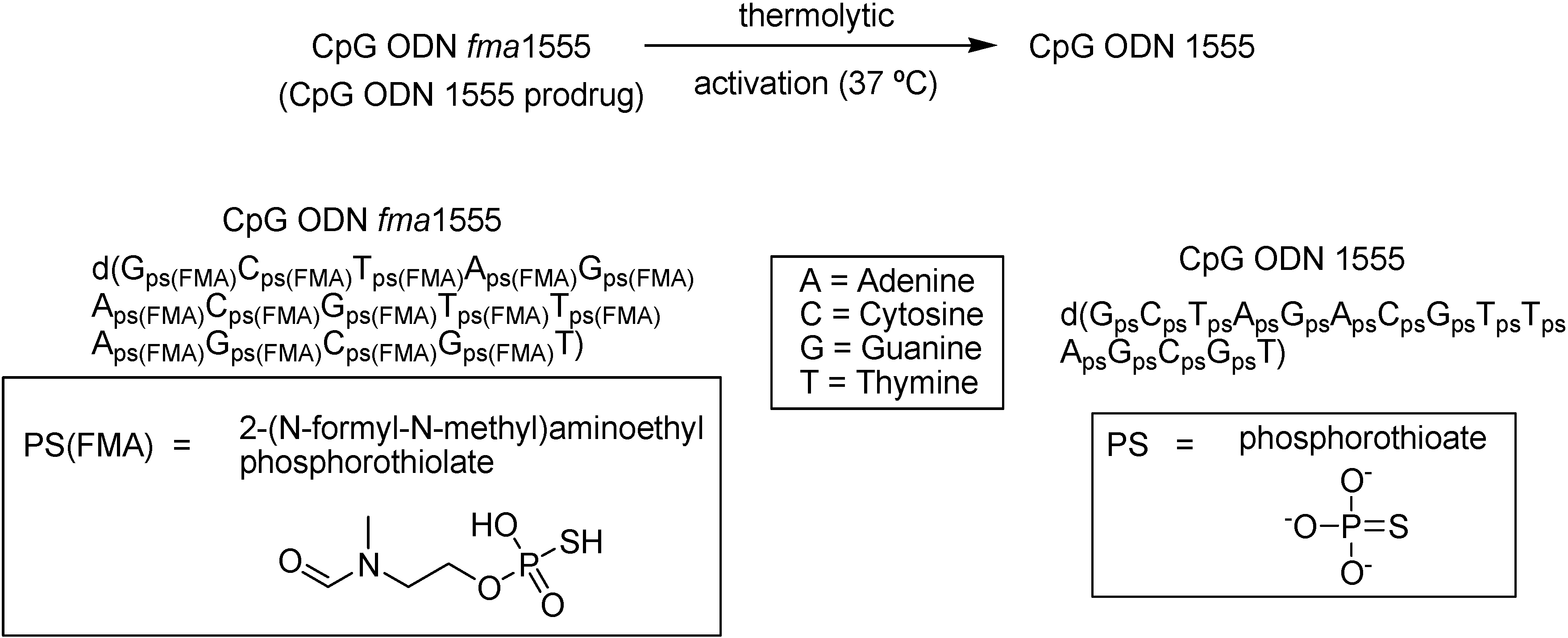

Pyrimethamine polymer prodrugs
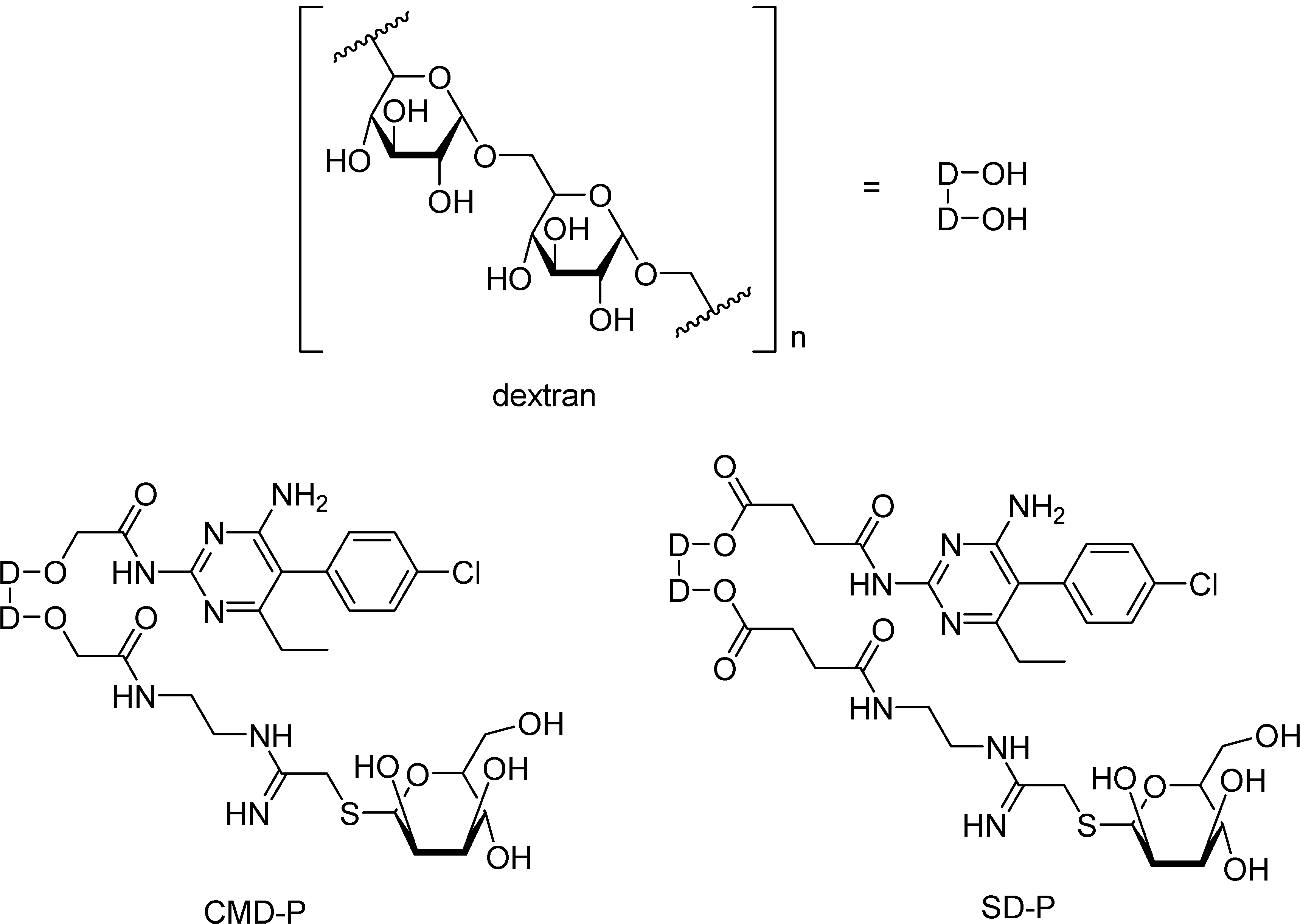
Prodrugs of buparvaquone
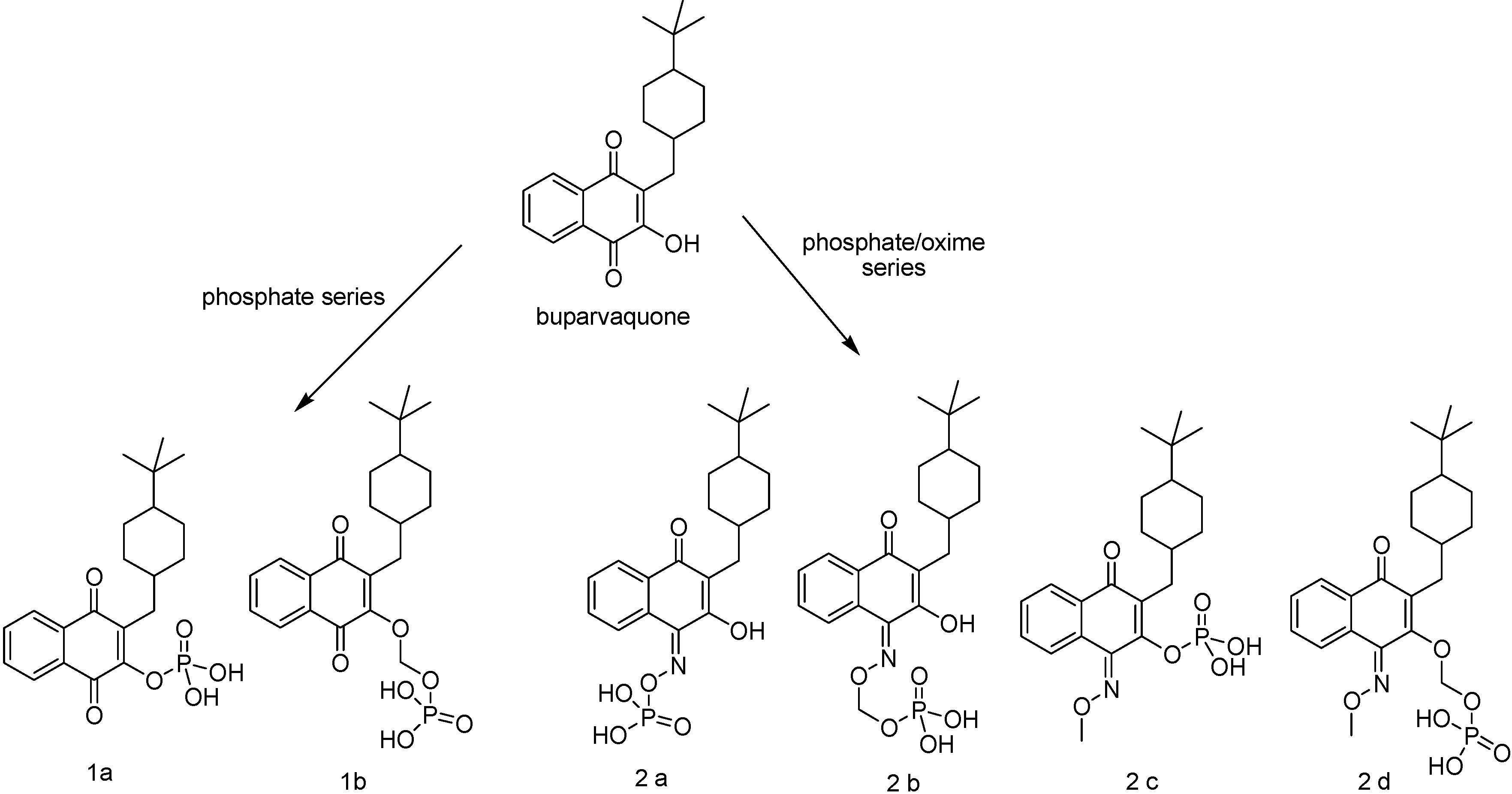
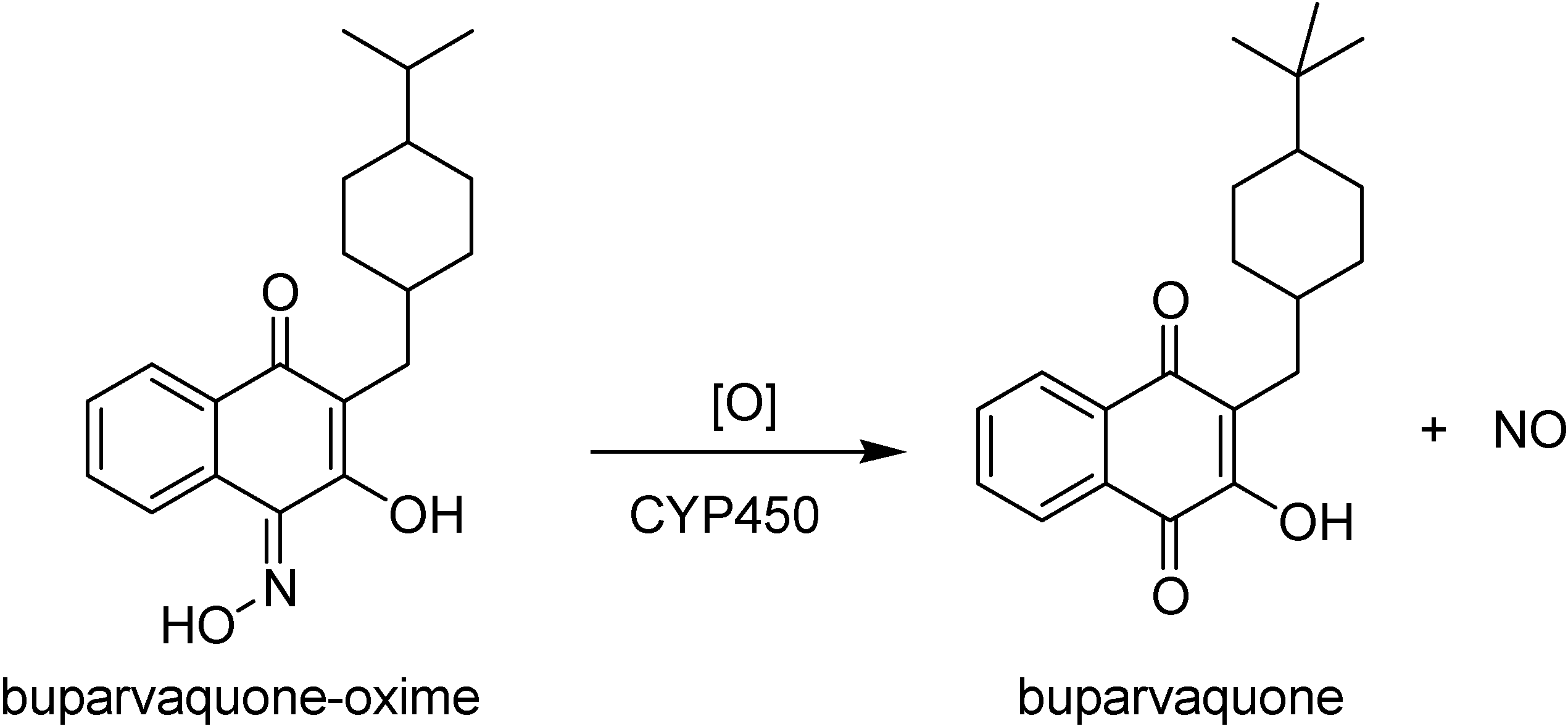
Antimalarial prodrugs
Polymeric antimalarial prodrugs
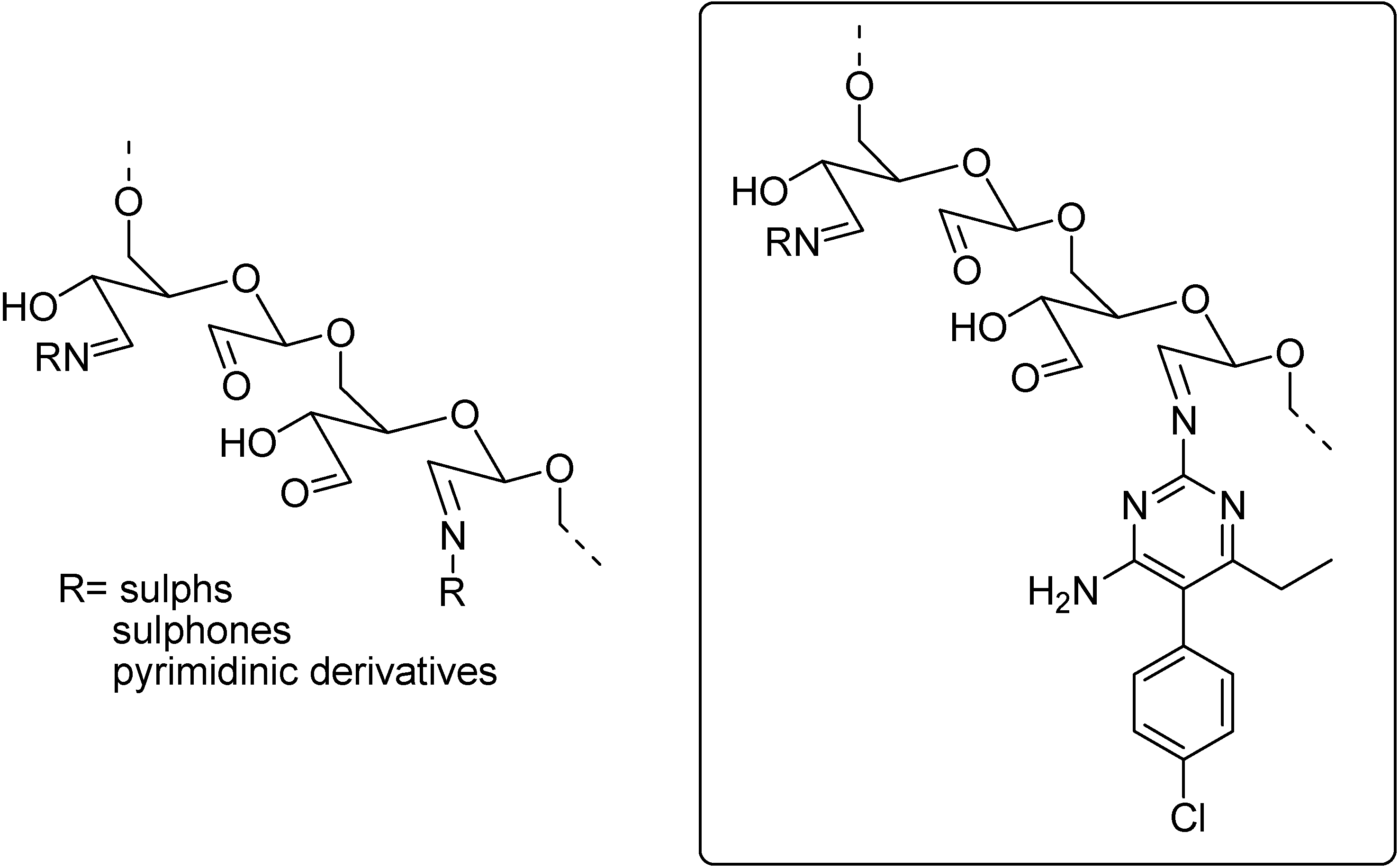
Prodrugs of bisthiazolium salts

Prodrugs of fosmidomycin and FR900098
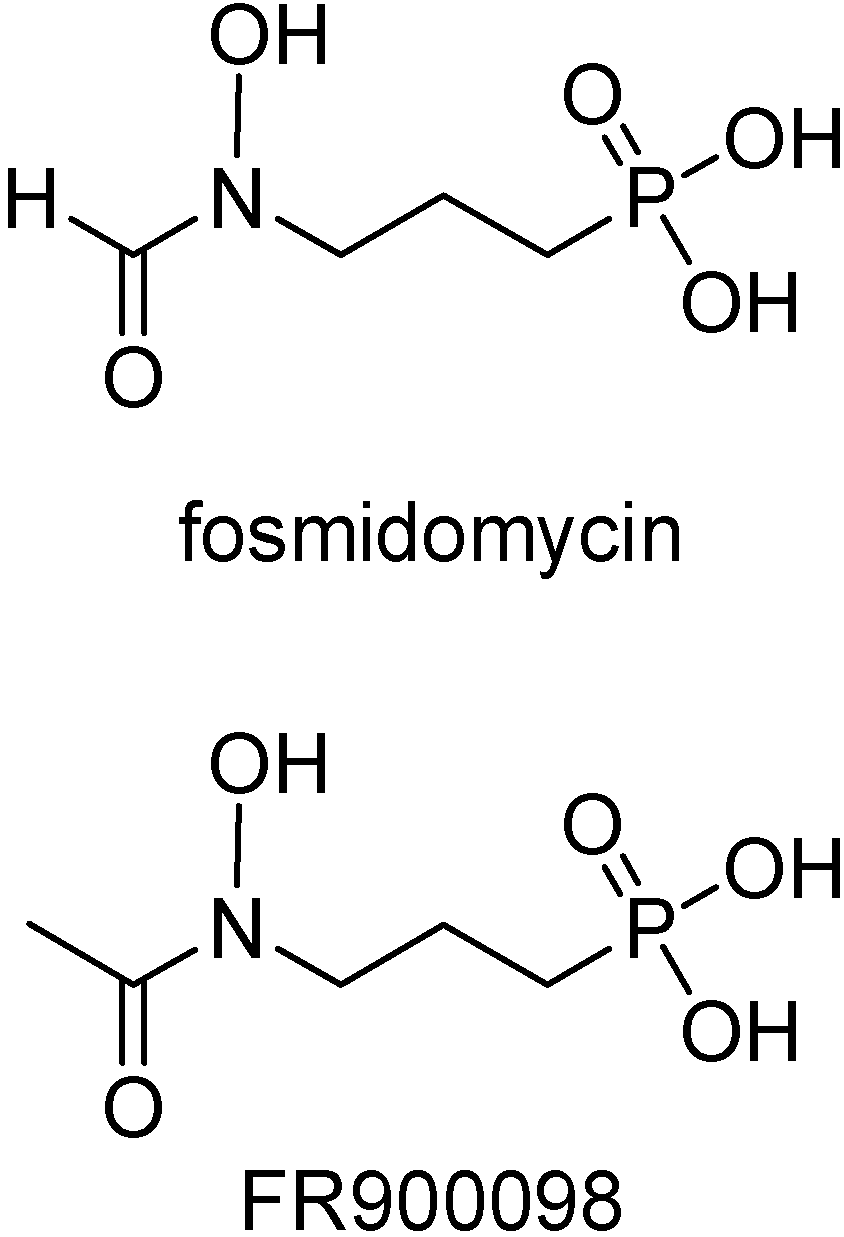
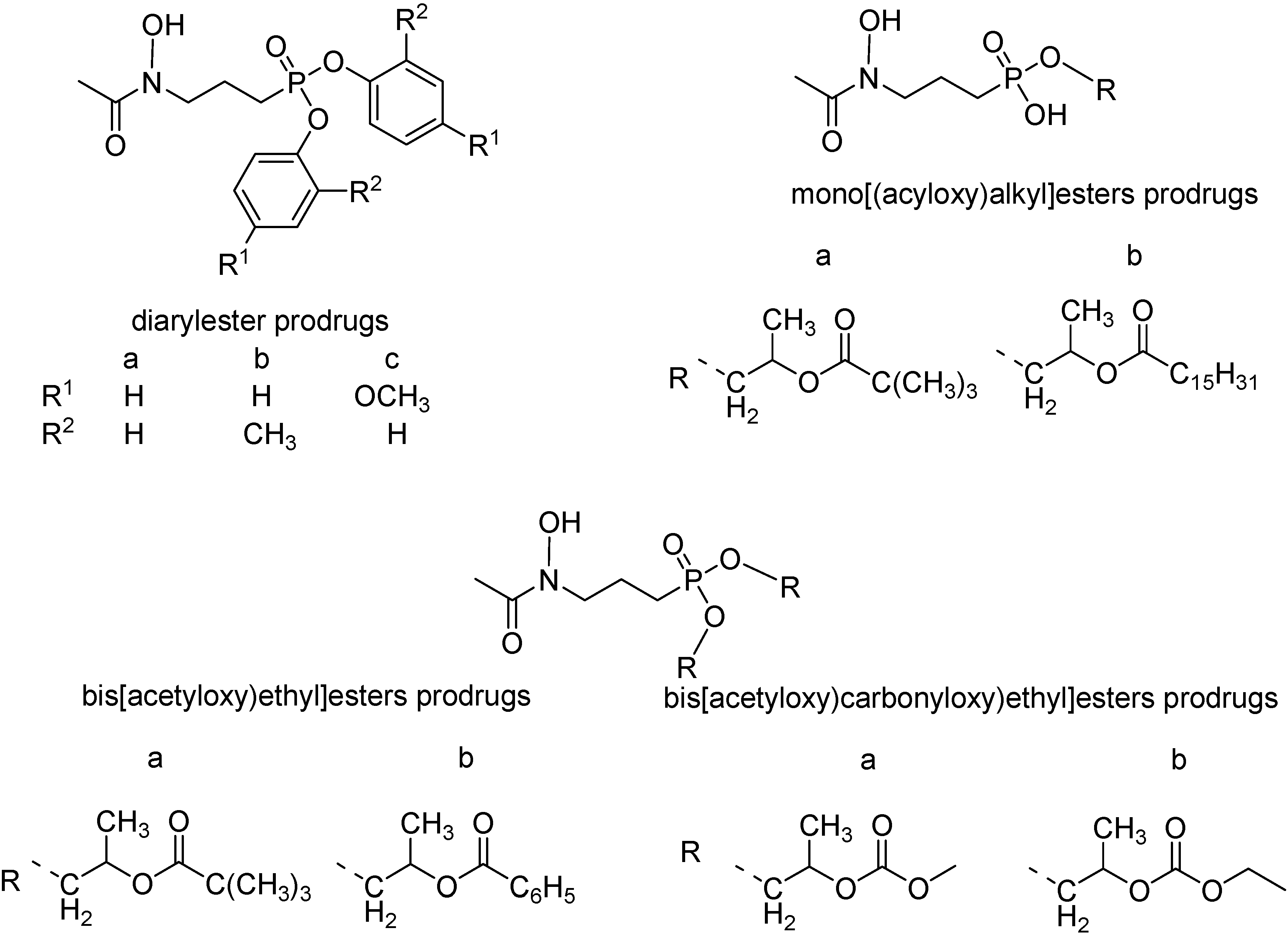
Prodrugs of trioxane and dioxane derivatives (endoperoxidic agents)
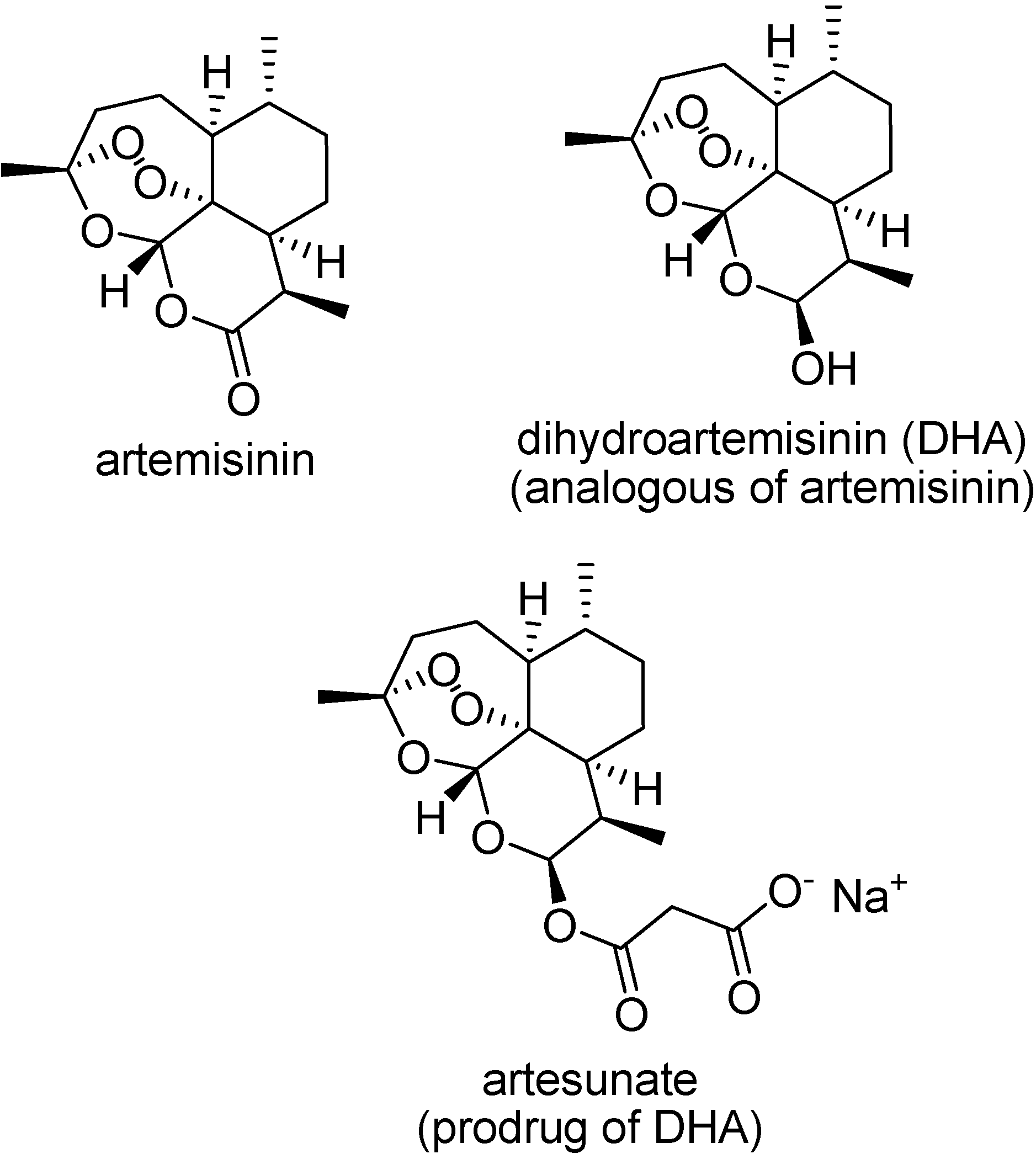
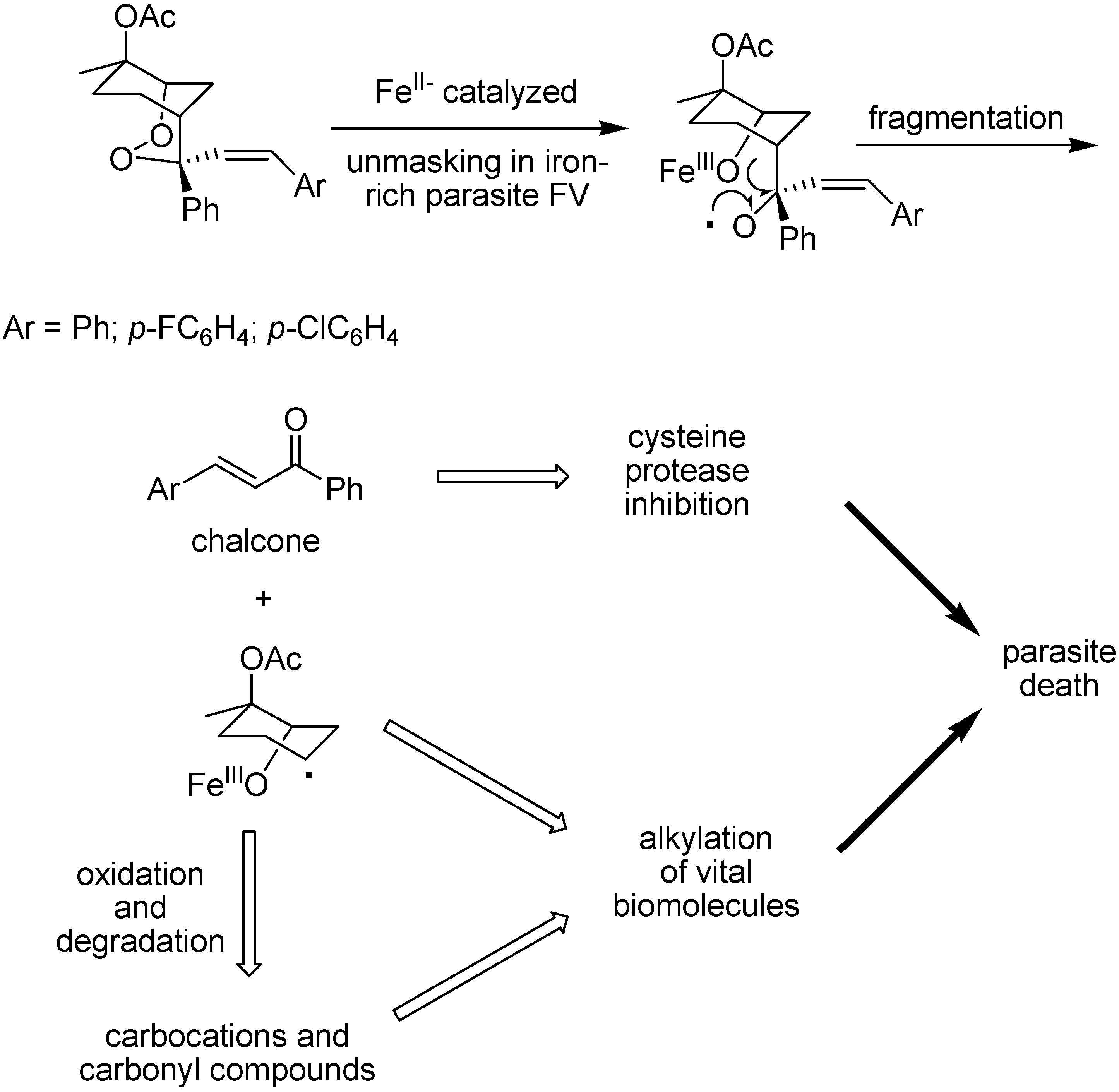
Prodrugs of 4-aminoquinoline
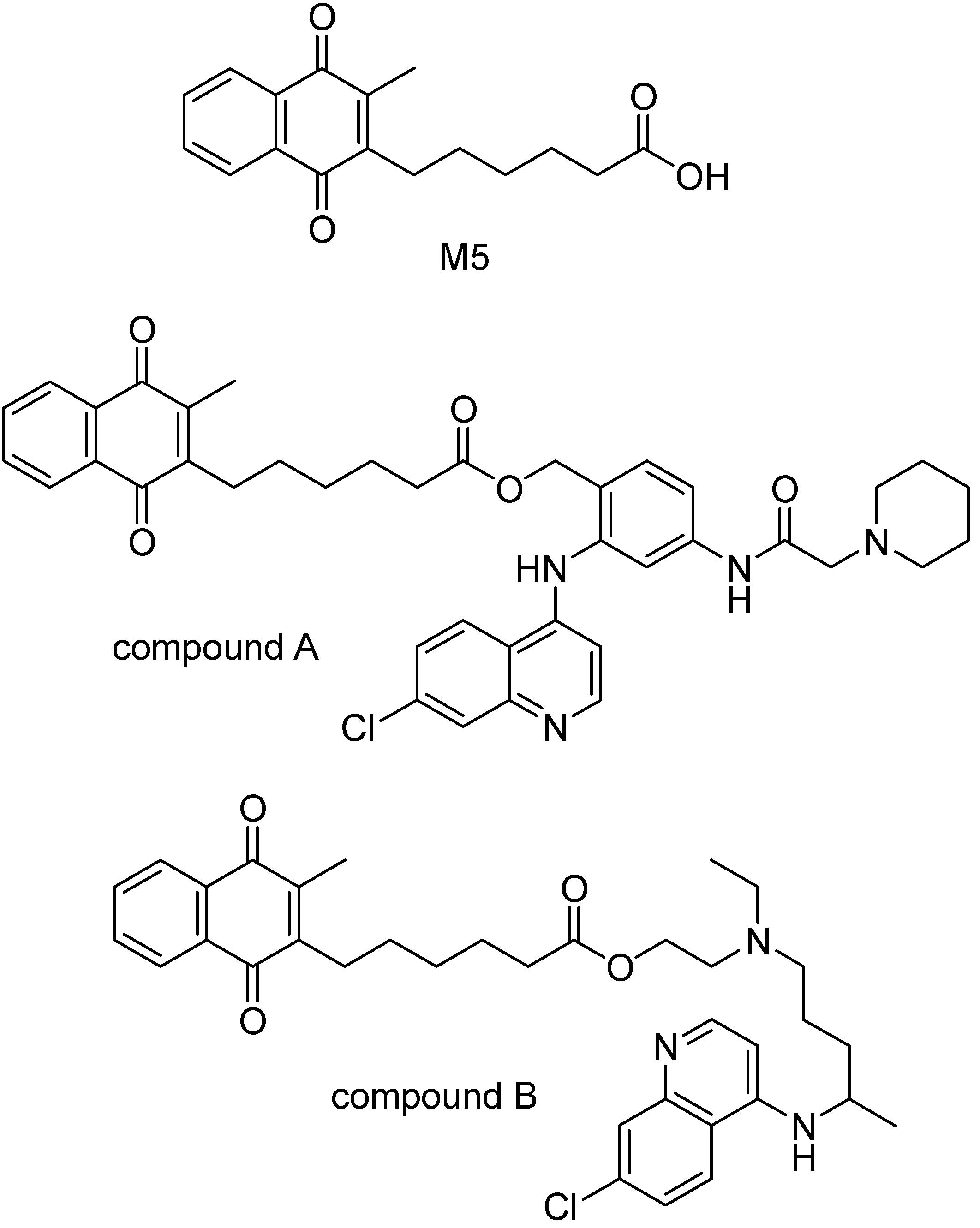
Prodrugs of 8-aminoquinoline

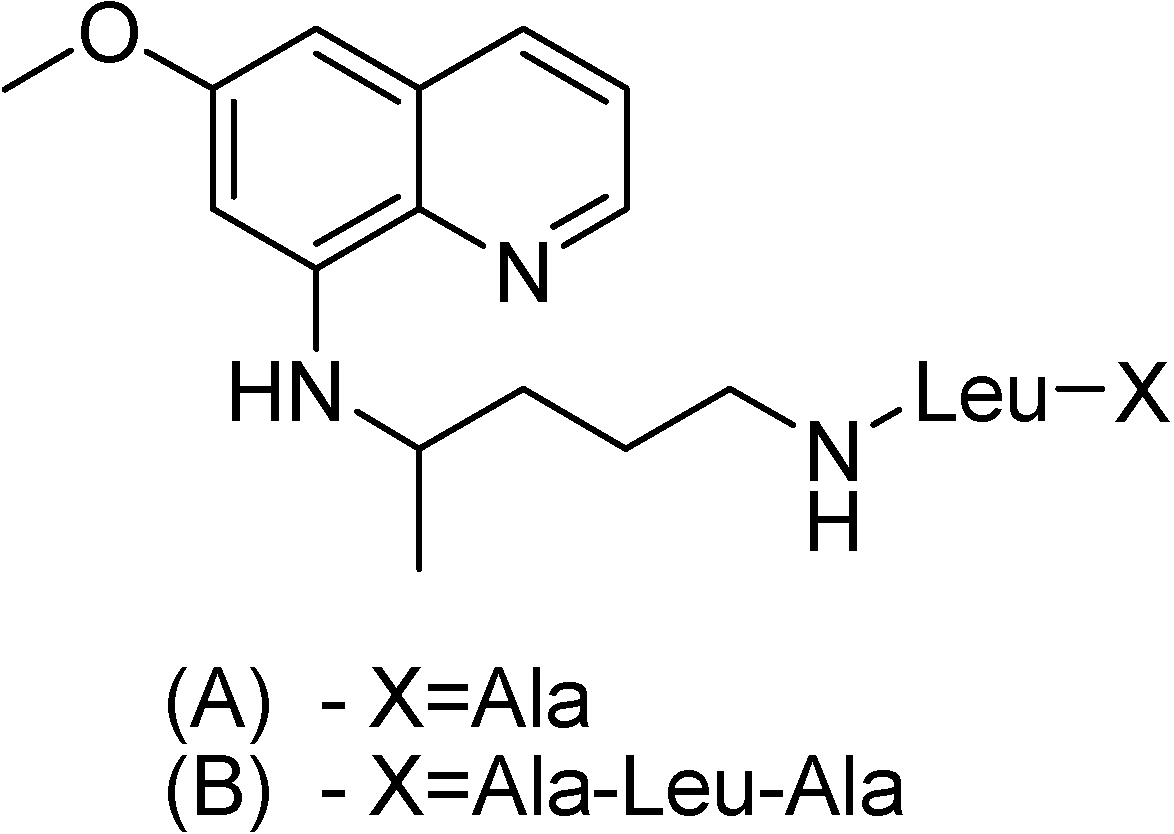
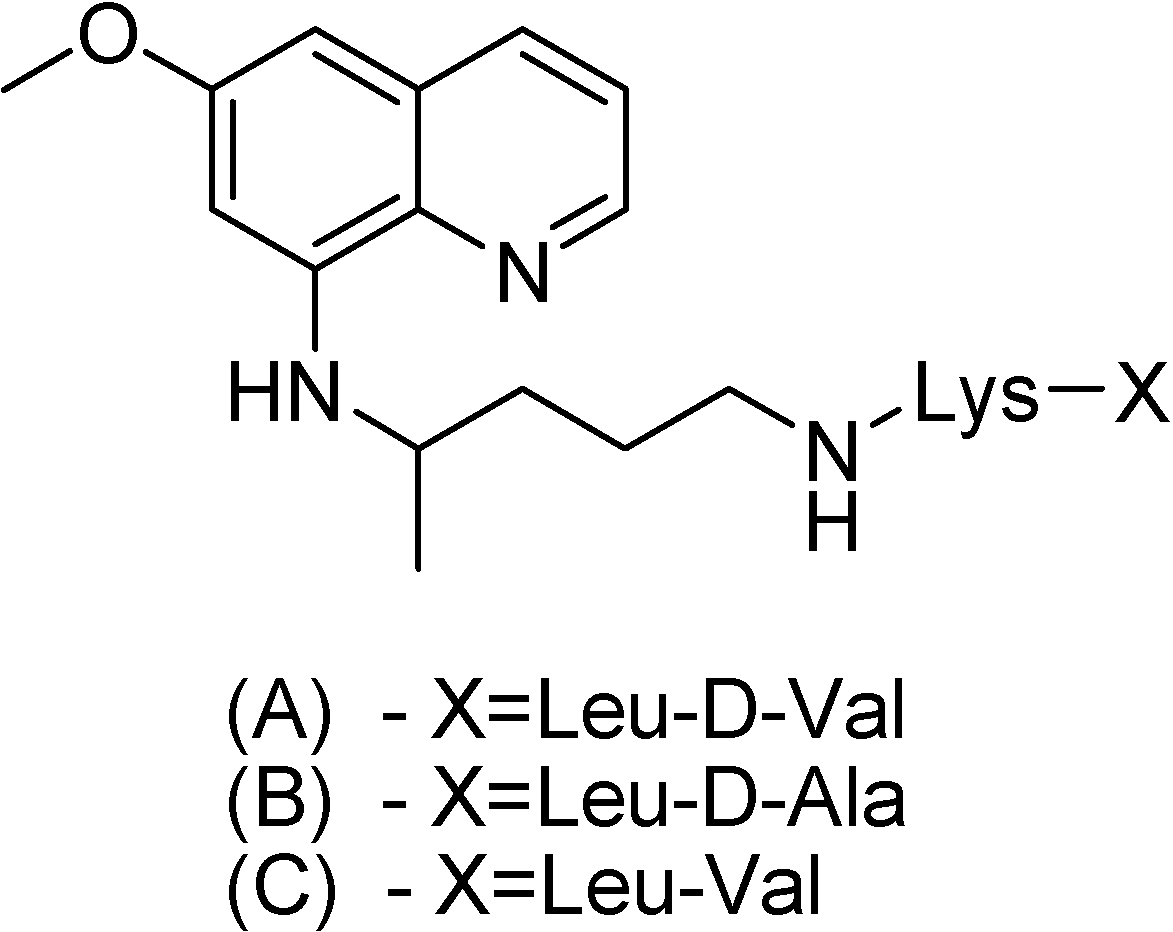
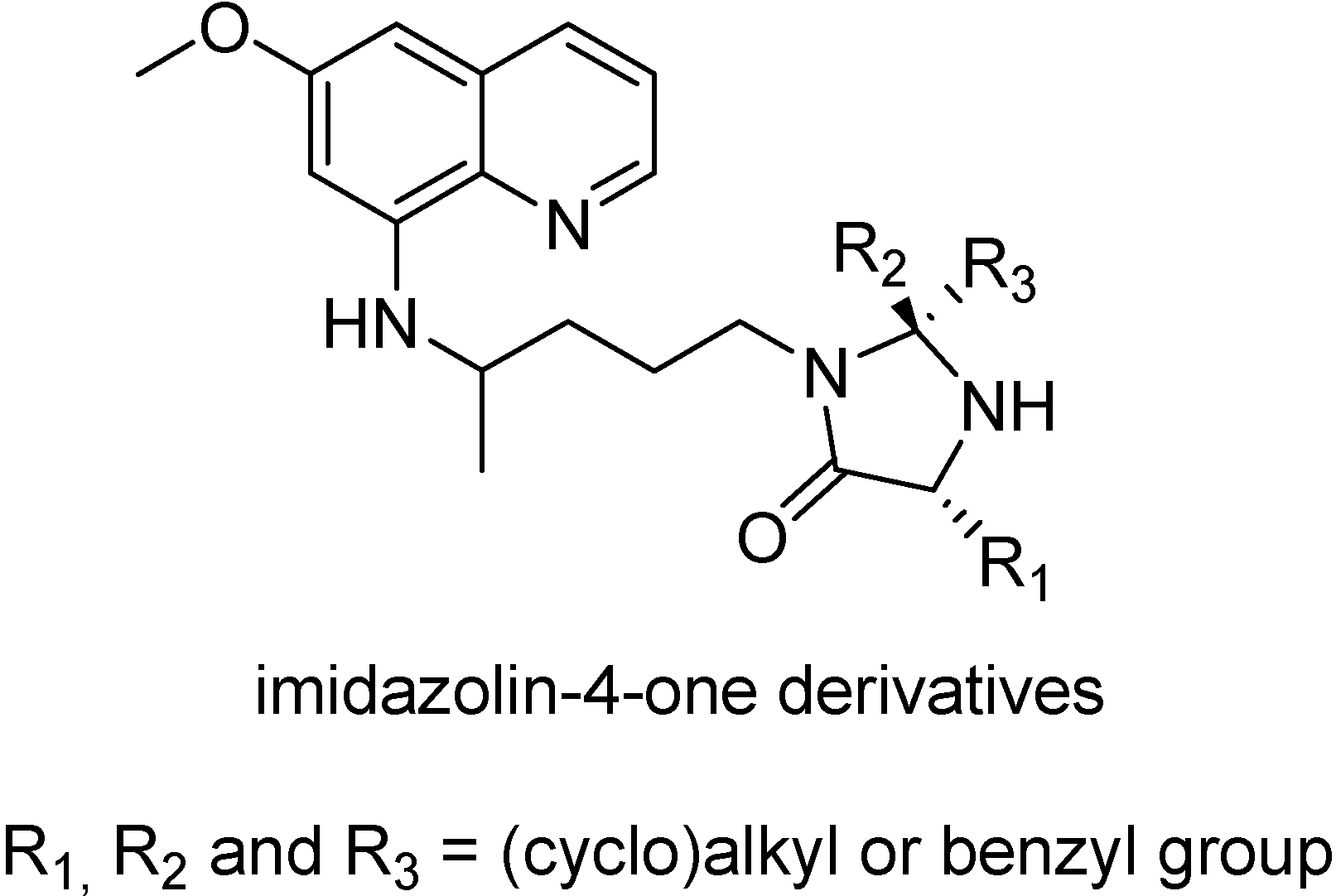
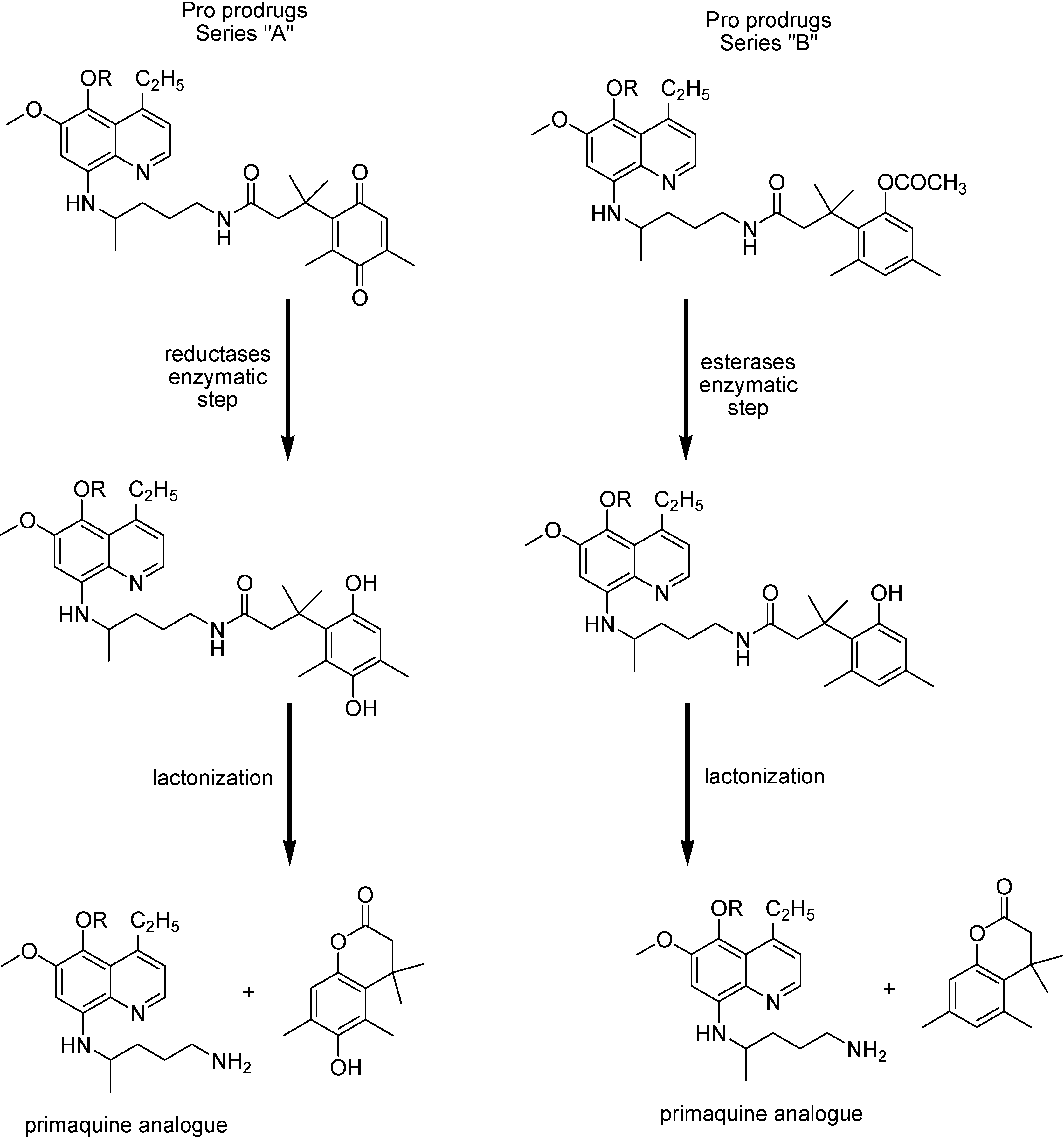
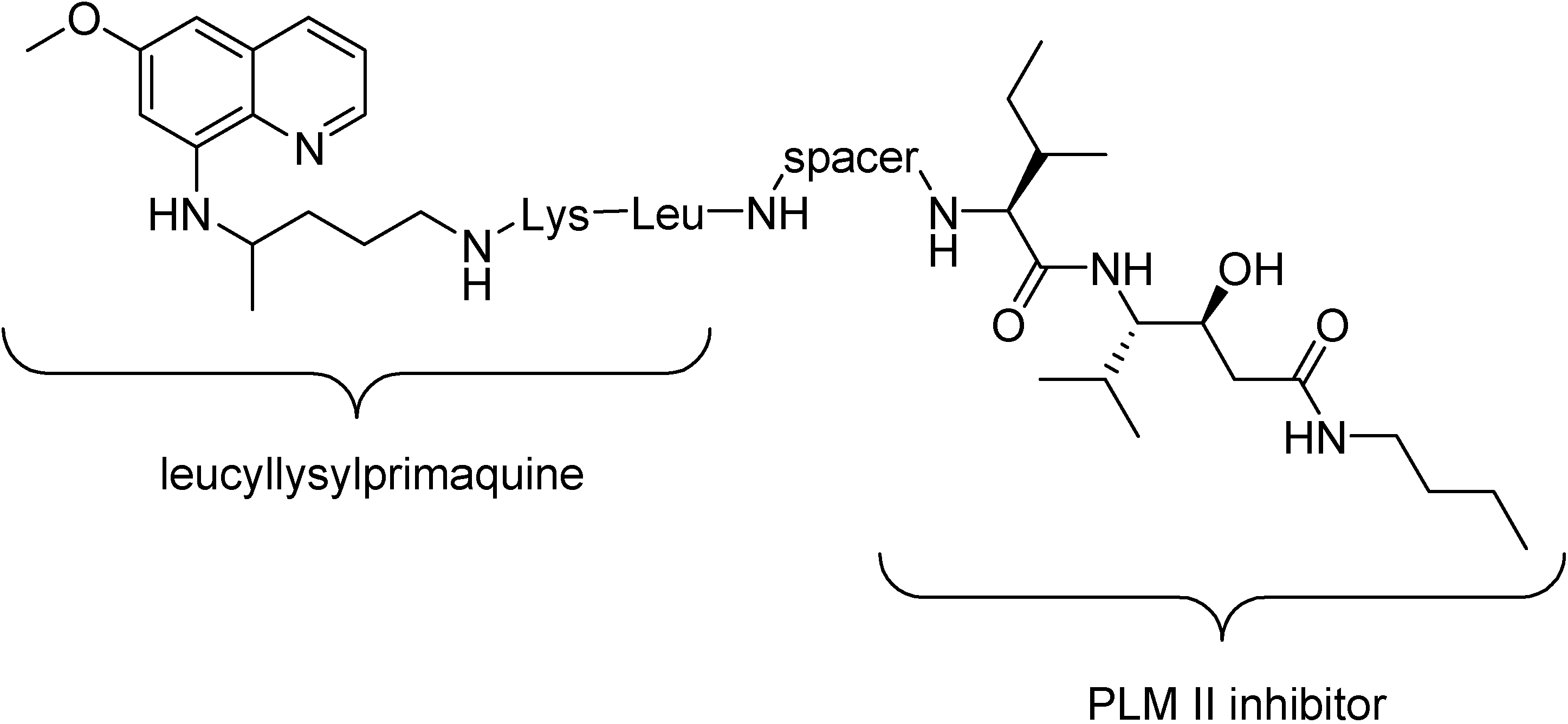
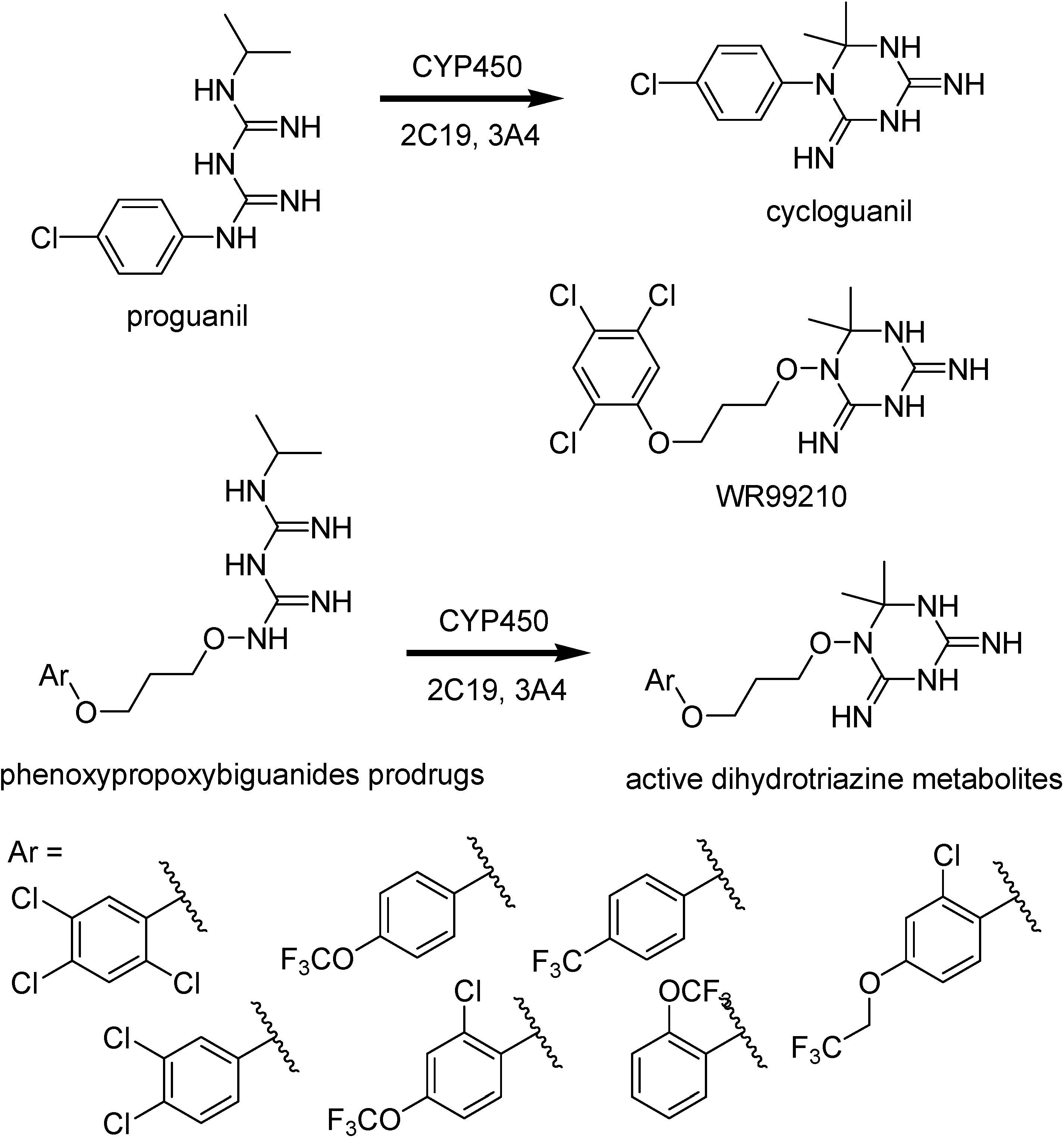
Prodrugs of protein farnesyltransferase inhibitors
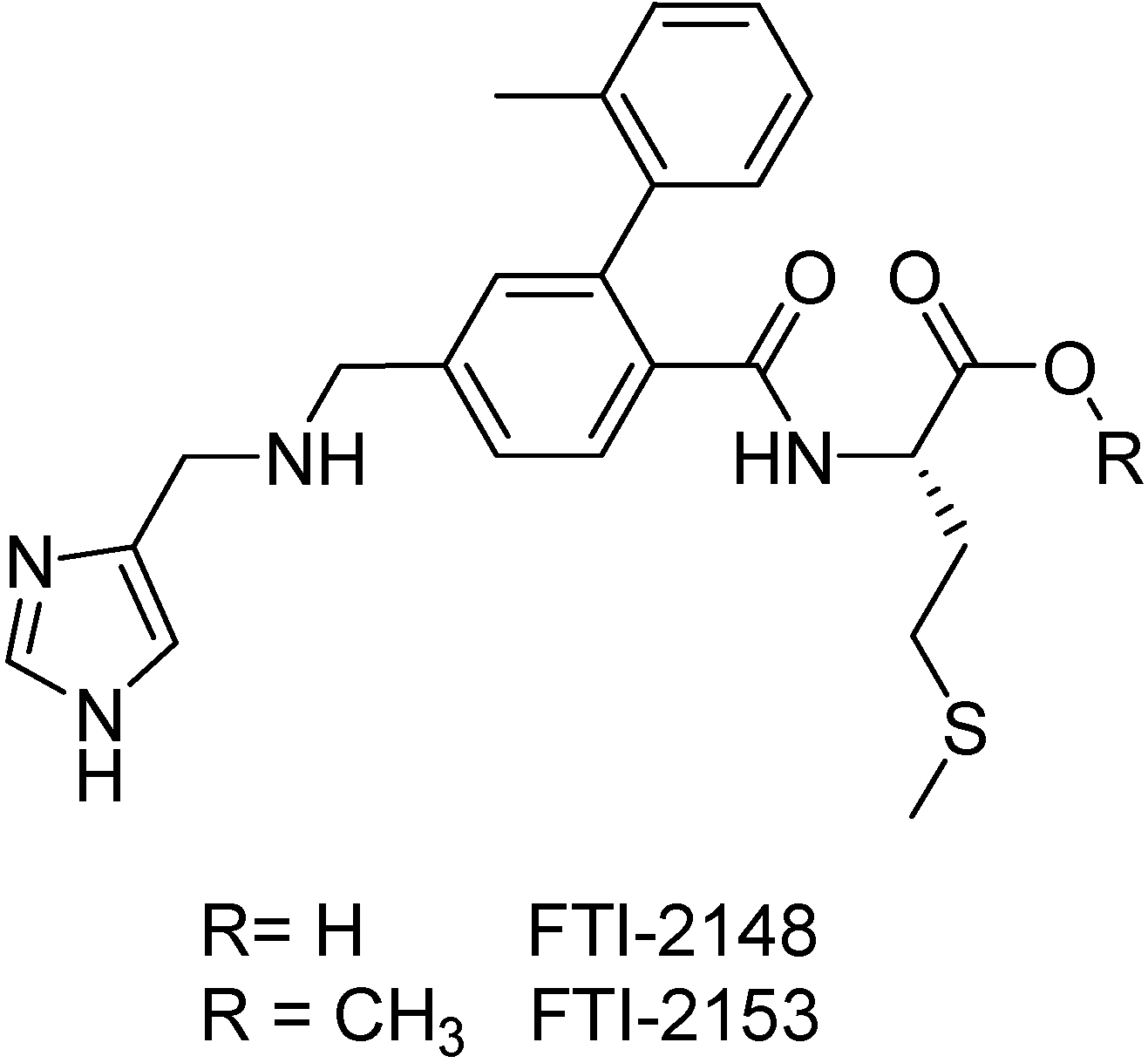
| CH3 (FTI-2153) | 4.44 | >1000 | 3300 |
| C2H5 | 4.88 | 750 | 1900 |
 | 5.19 | >1000 | 1800 |
 | 5.19 | >1000 | 800 |
 | 7.09 | >1000 | 700 |
 | 4.94 | >1000 | 350 |
 | 6.09 | 1000 | 150 |
| H (FTI-2148) | 1.77 | 15 | >66,000 |
Prodrugs of pyrroloquinazolinediamine
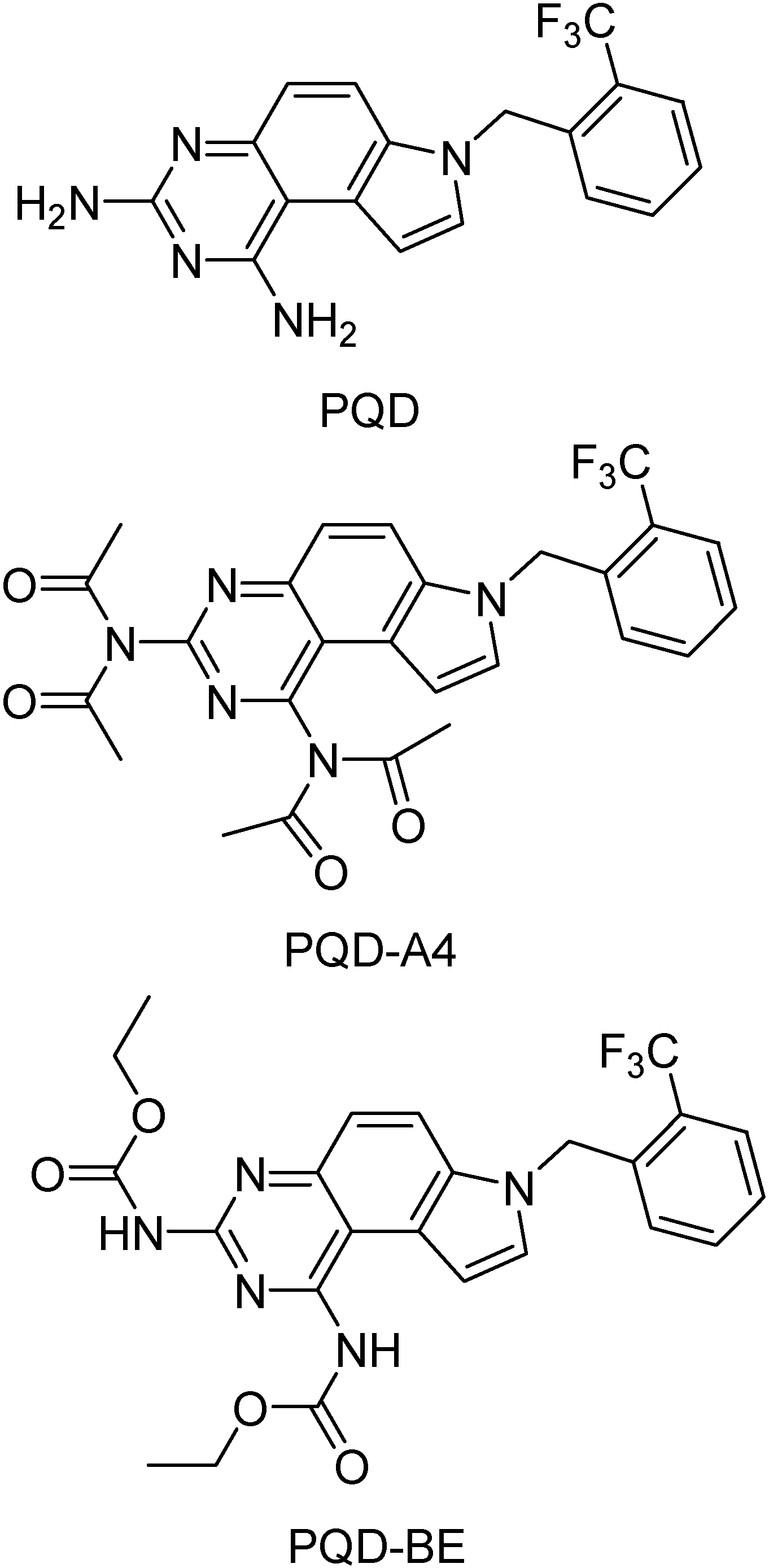
Prodrugs of aromatic amidine
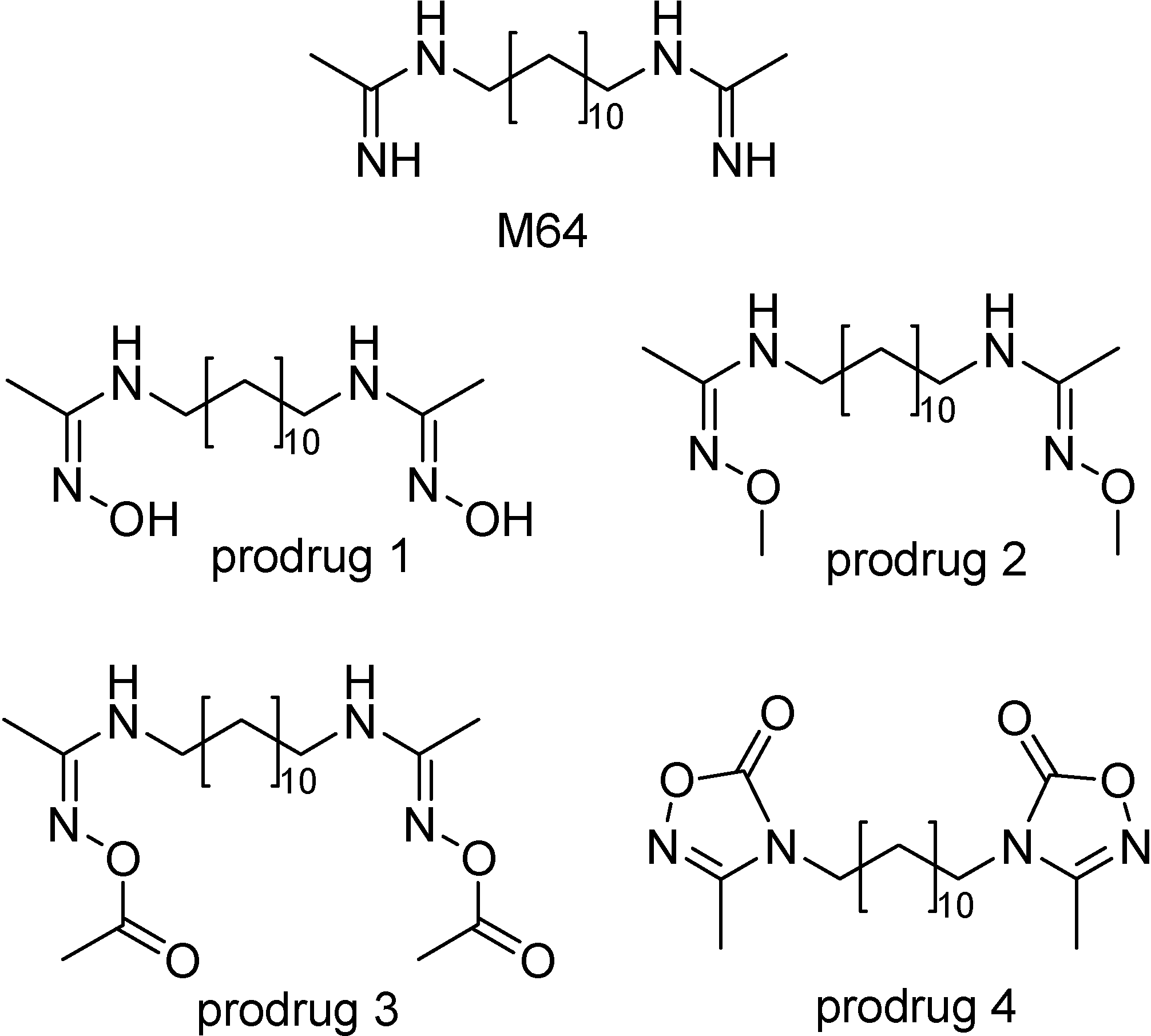
CD-CS approach
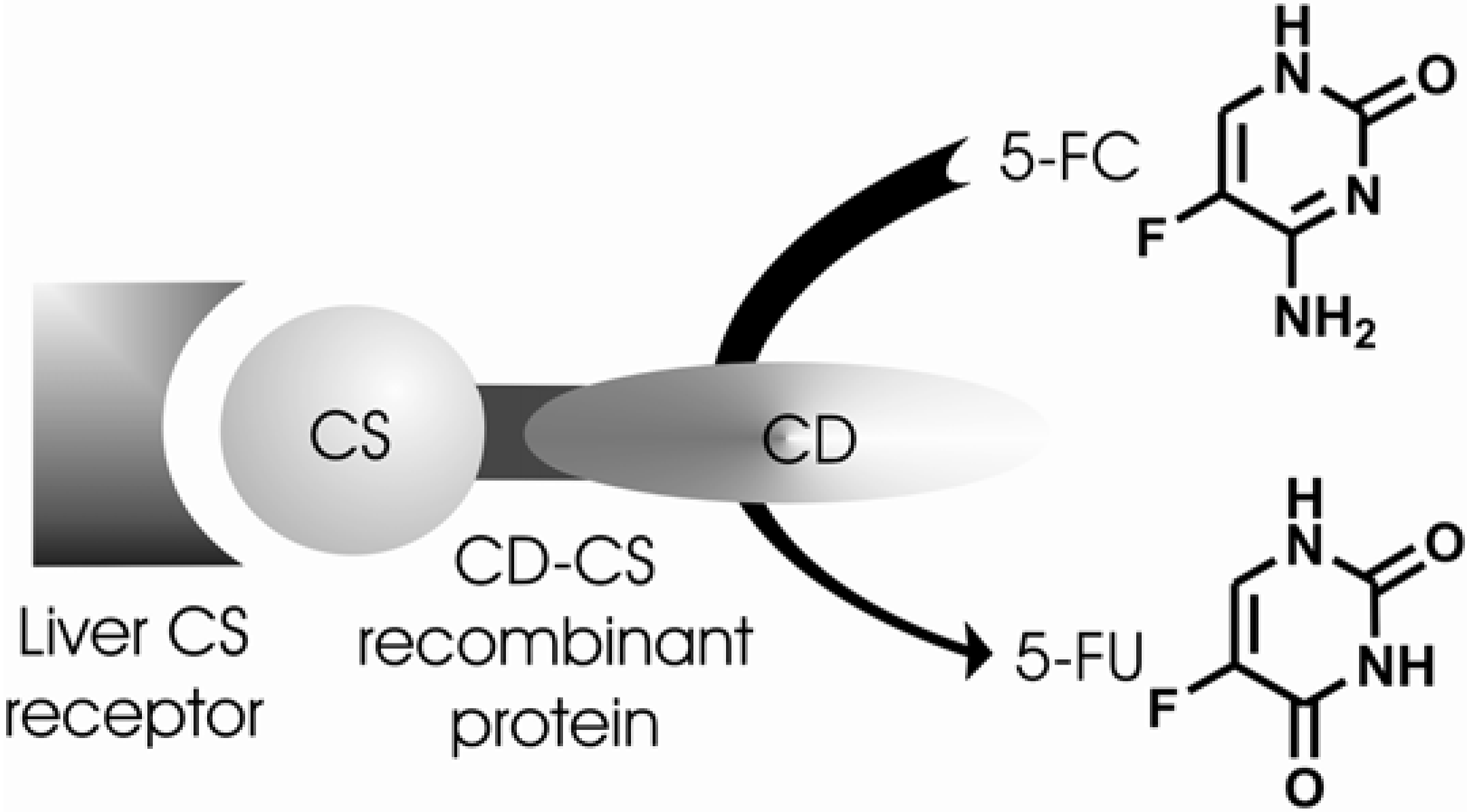
Prodrugs for Schistosomiasis
Prodrugs of oxamniquine
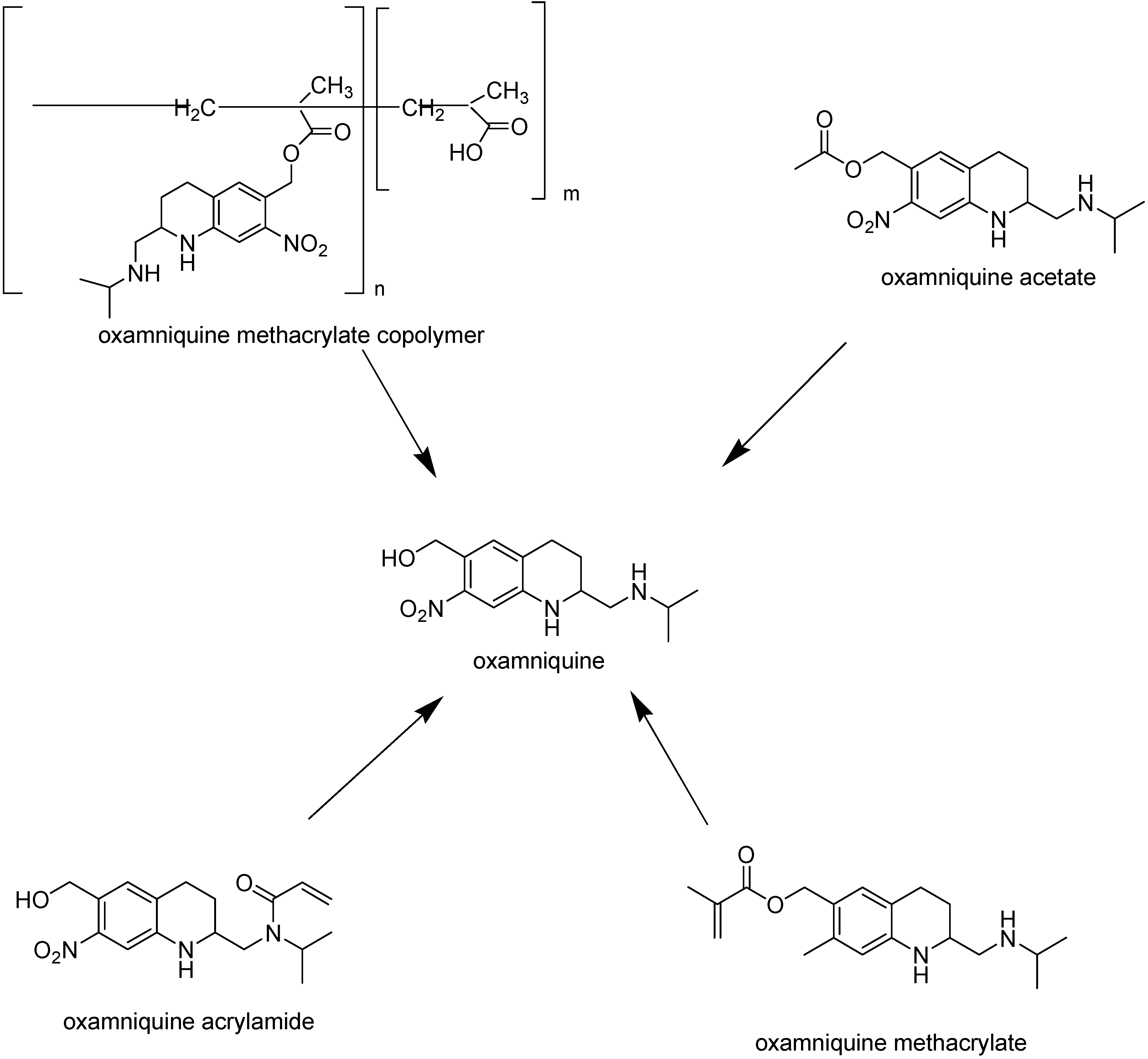
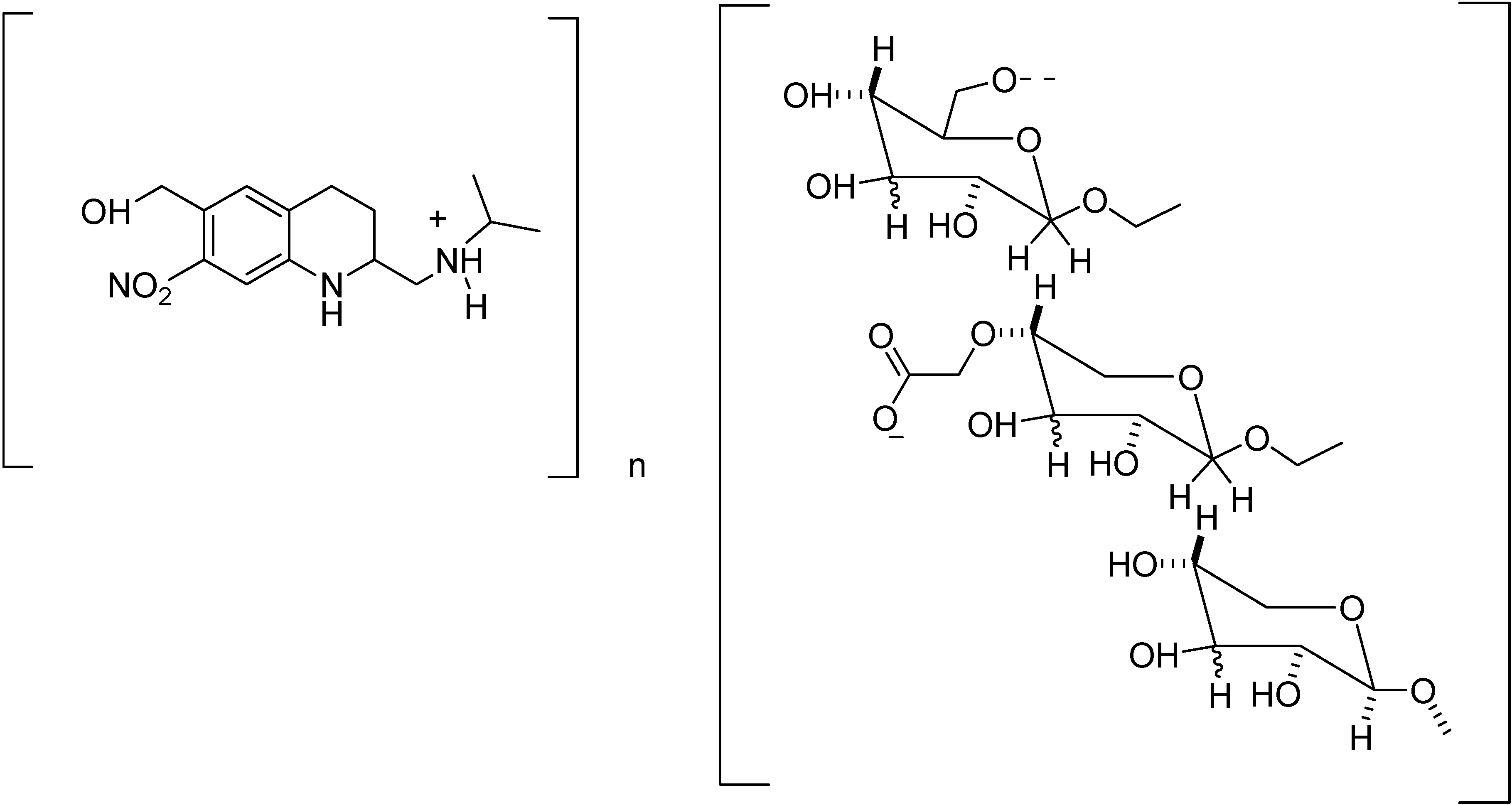
Prodrugs of dihydroartemisinin
Tuberculostatic prodrugs
Bioprecursors for tuberculosis chemotherapy
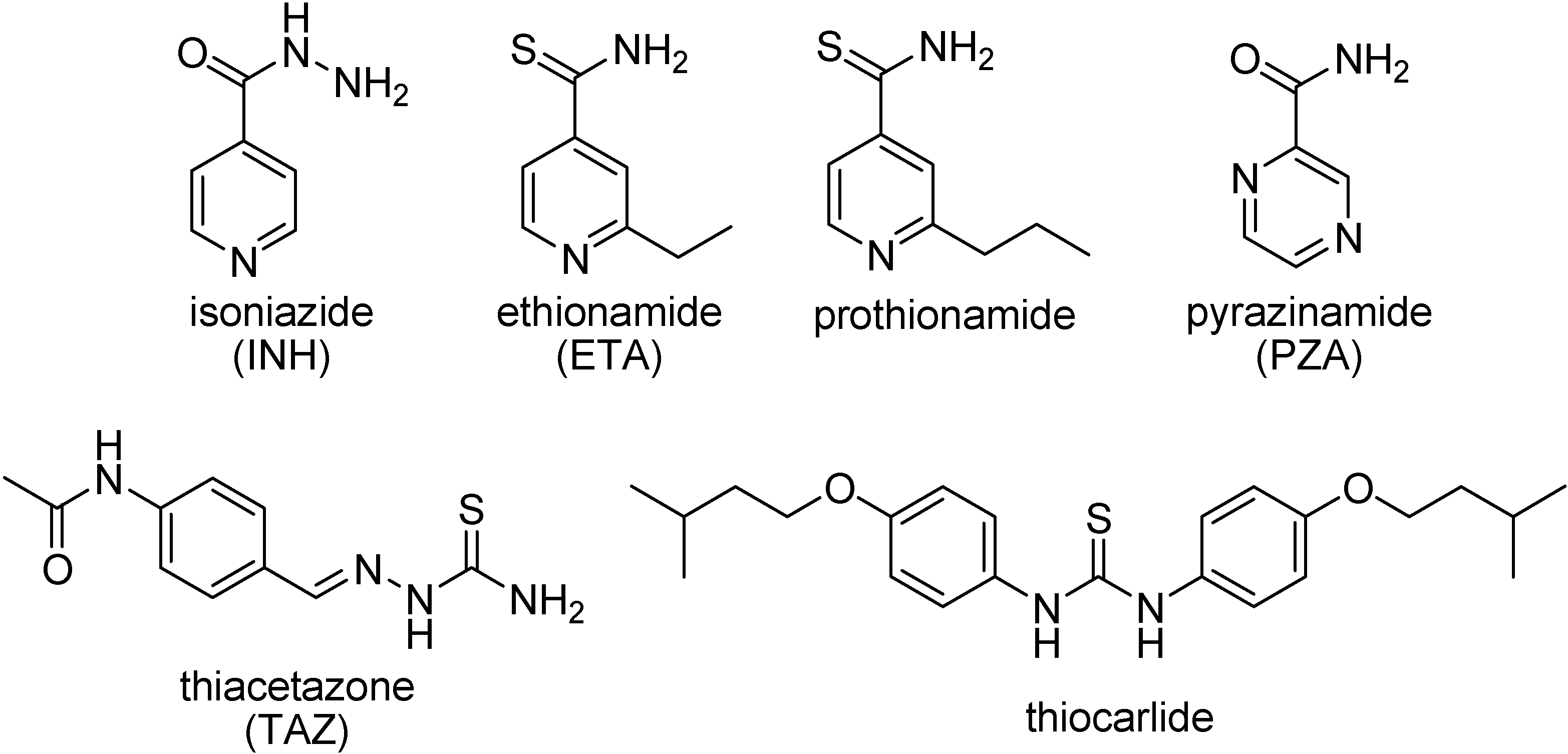
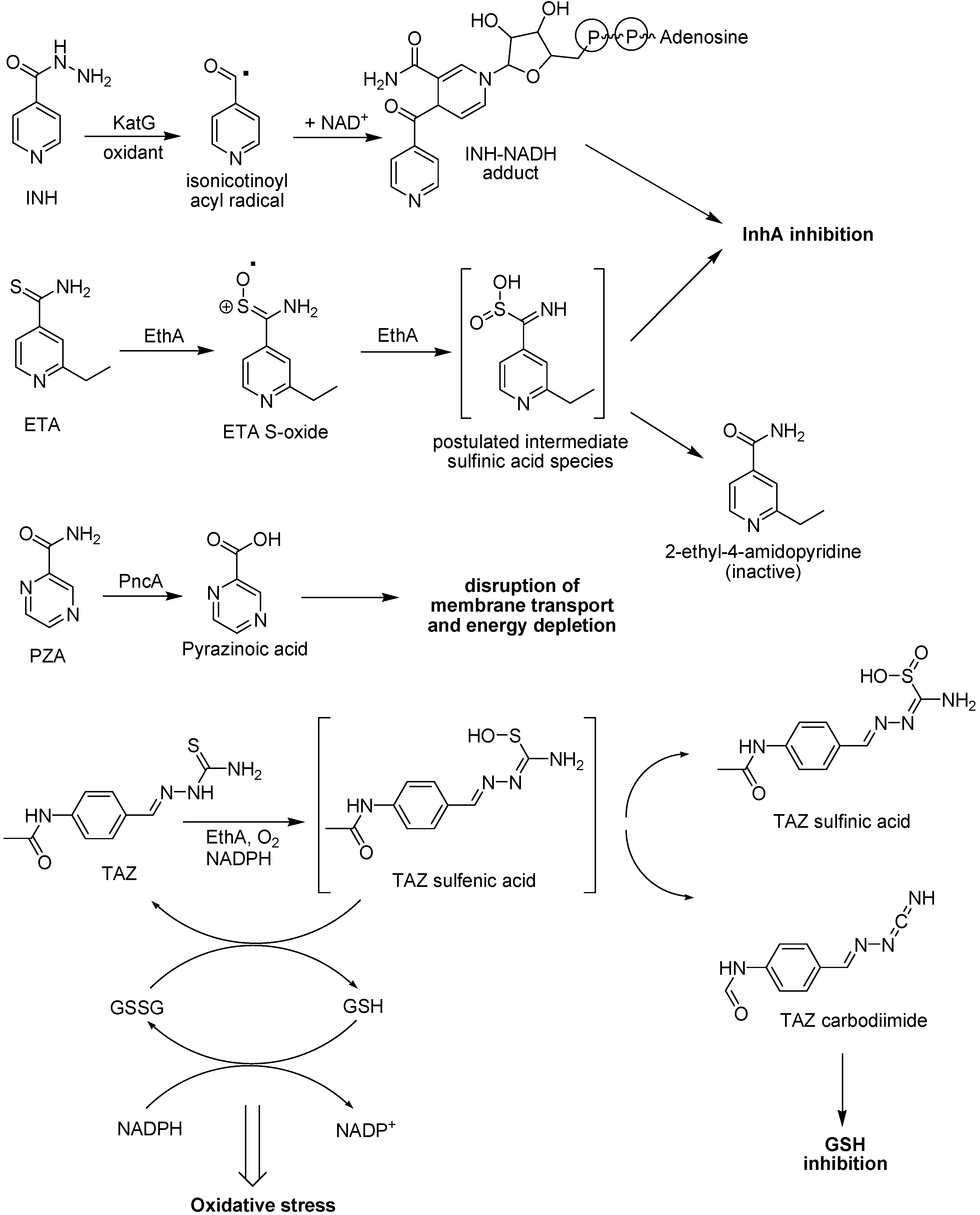
Mutual prodrug of isoniazid, para-aminosalicylic acid, and ethambutol
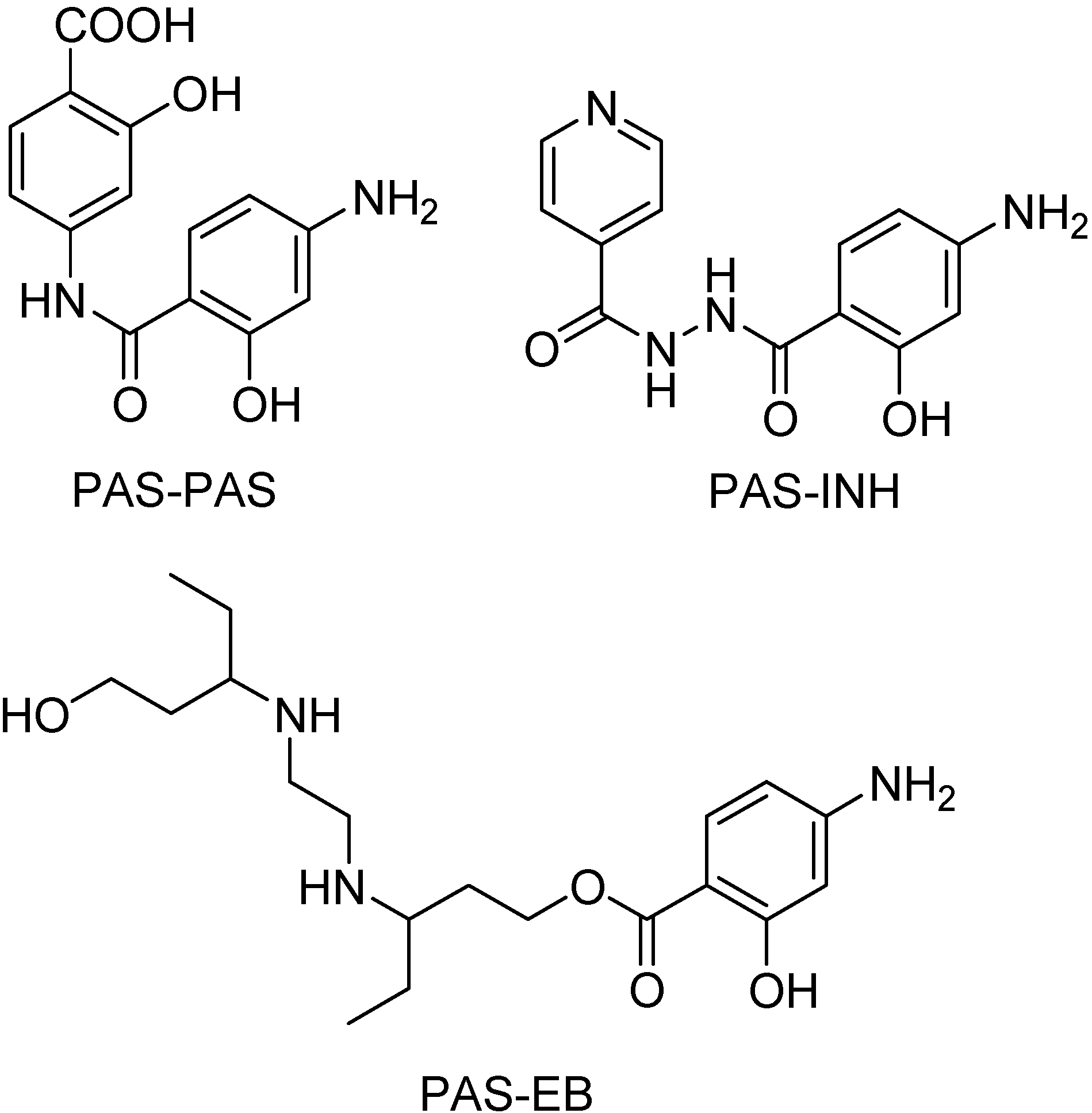
Prodrugs of nitroimidazoles
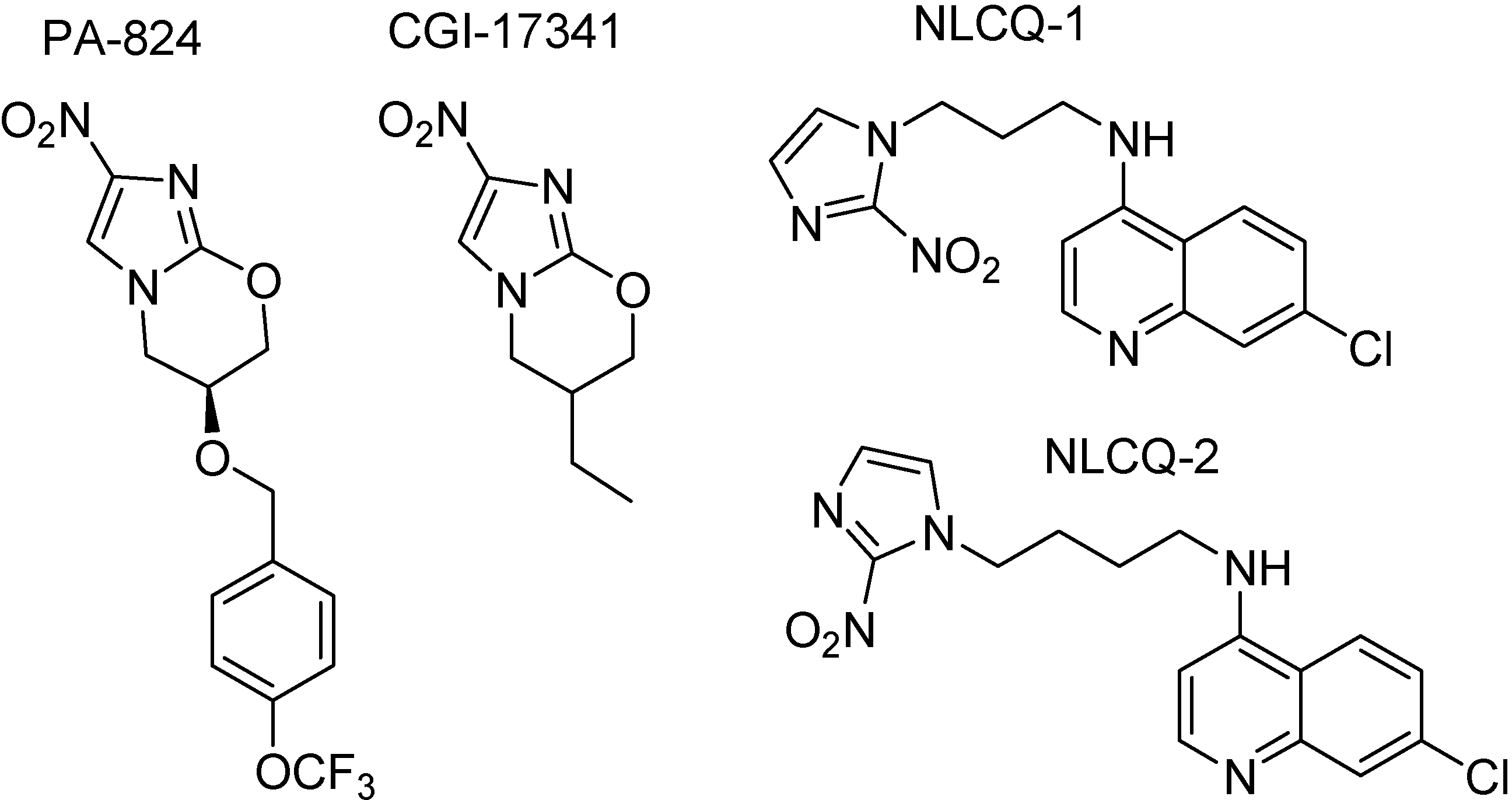
Nucleoside analogues prodrugs
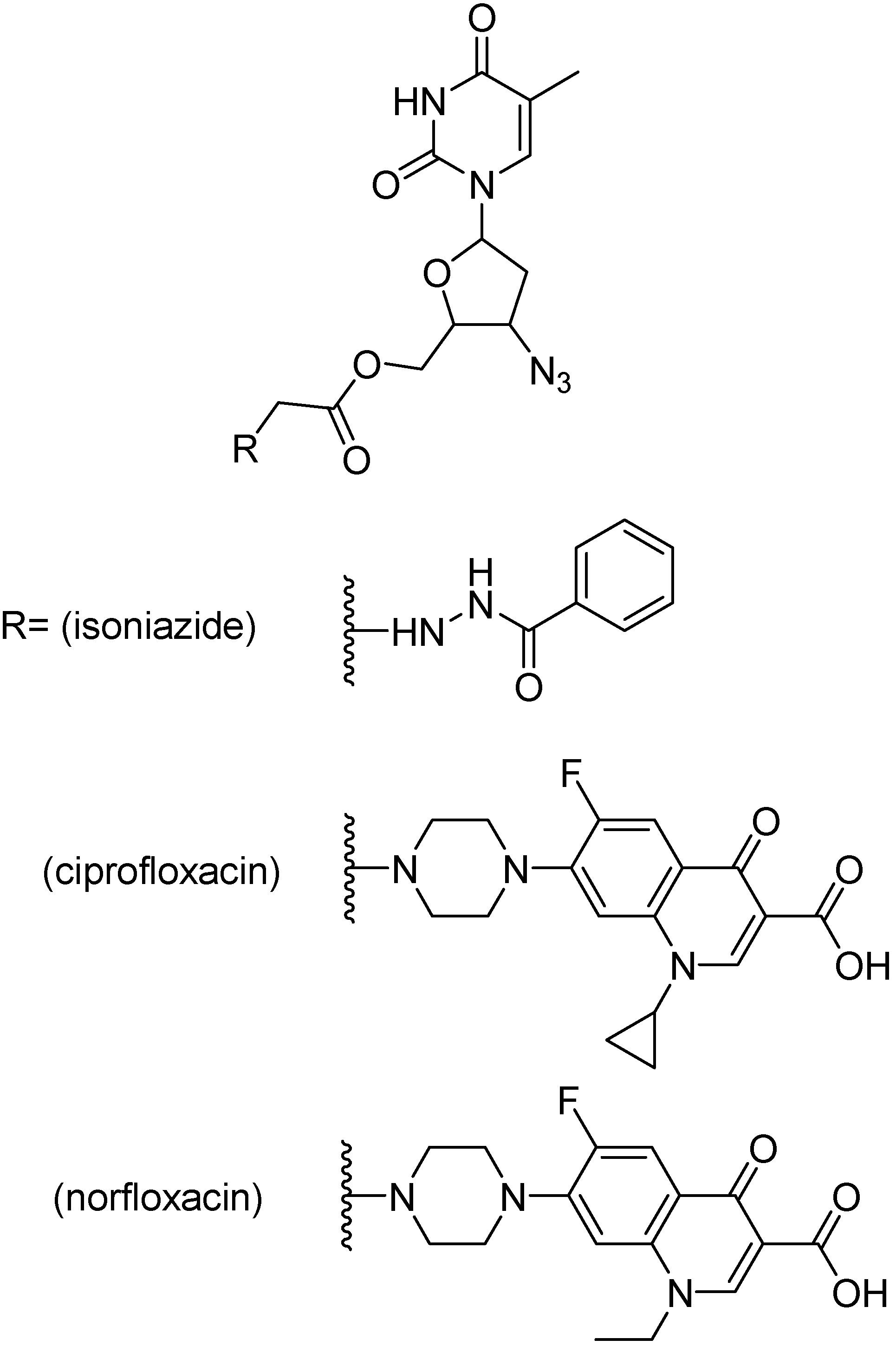
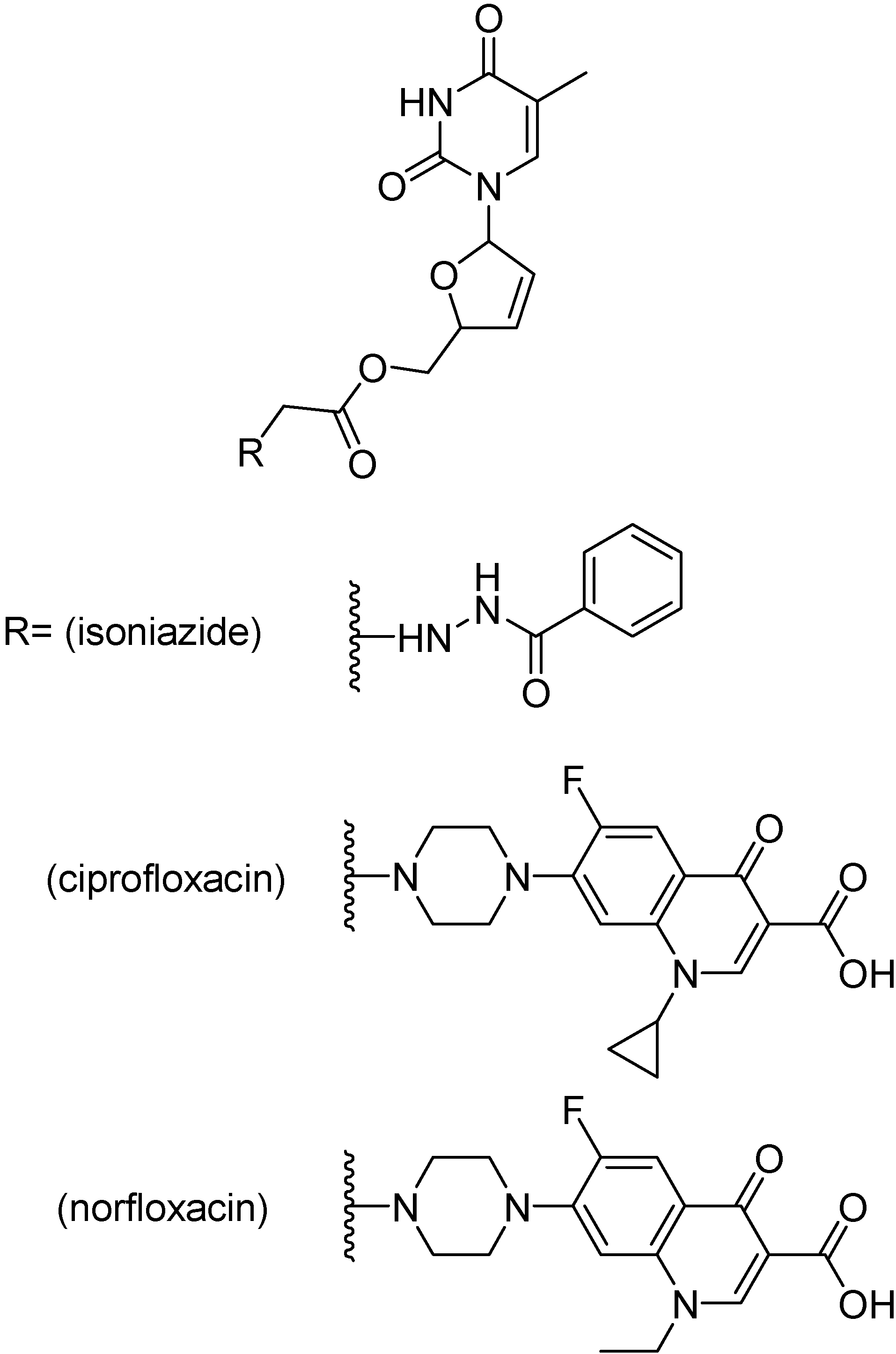
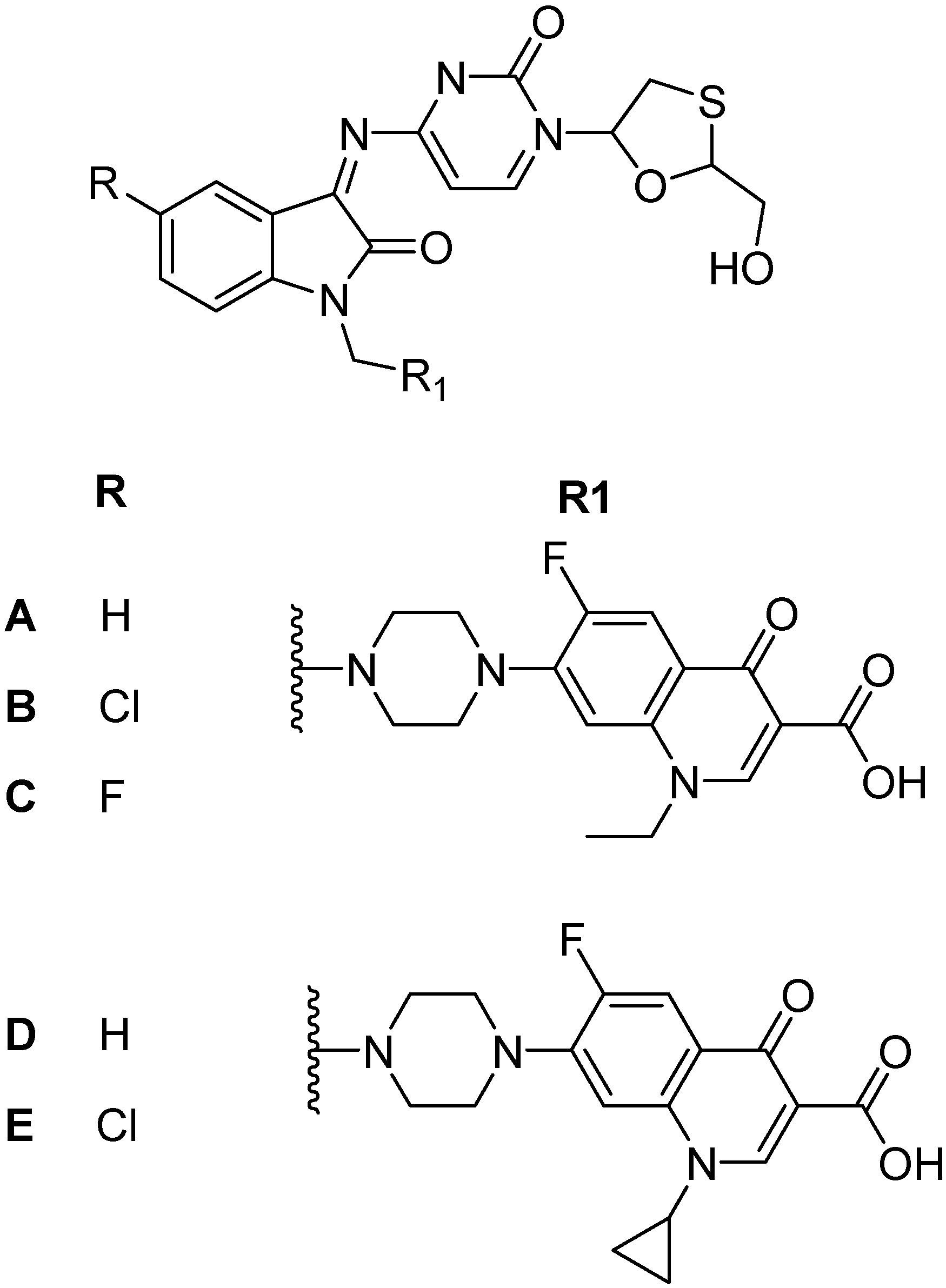
Polymeric prodrugs of norfloxacin
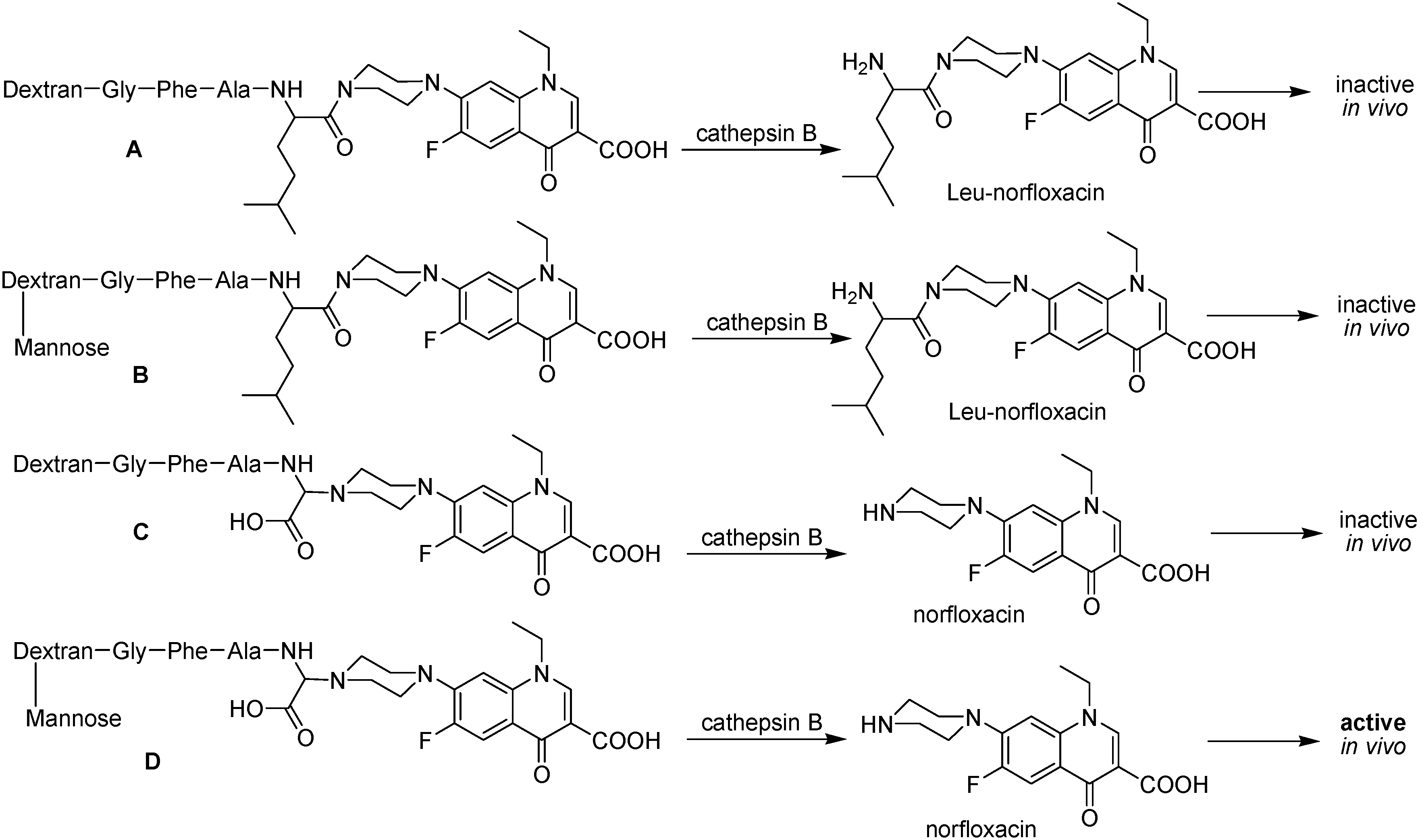
Polymeric prodrug of isoniazid and pyrazinamide
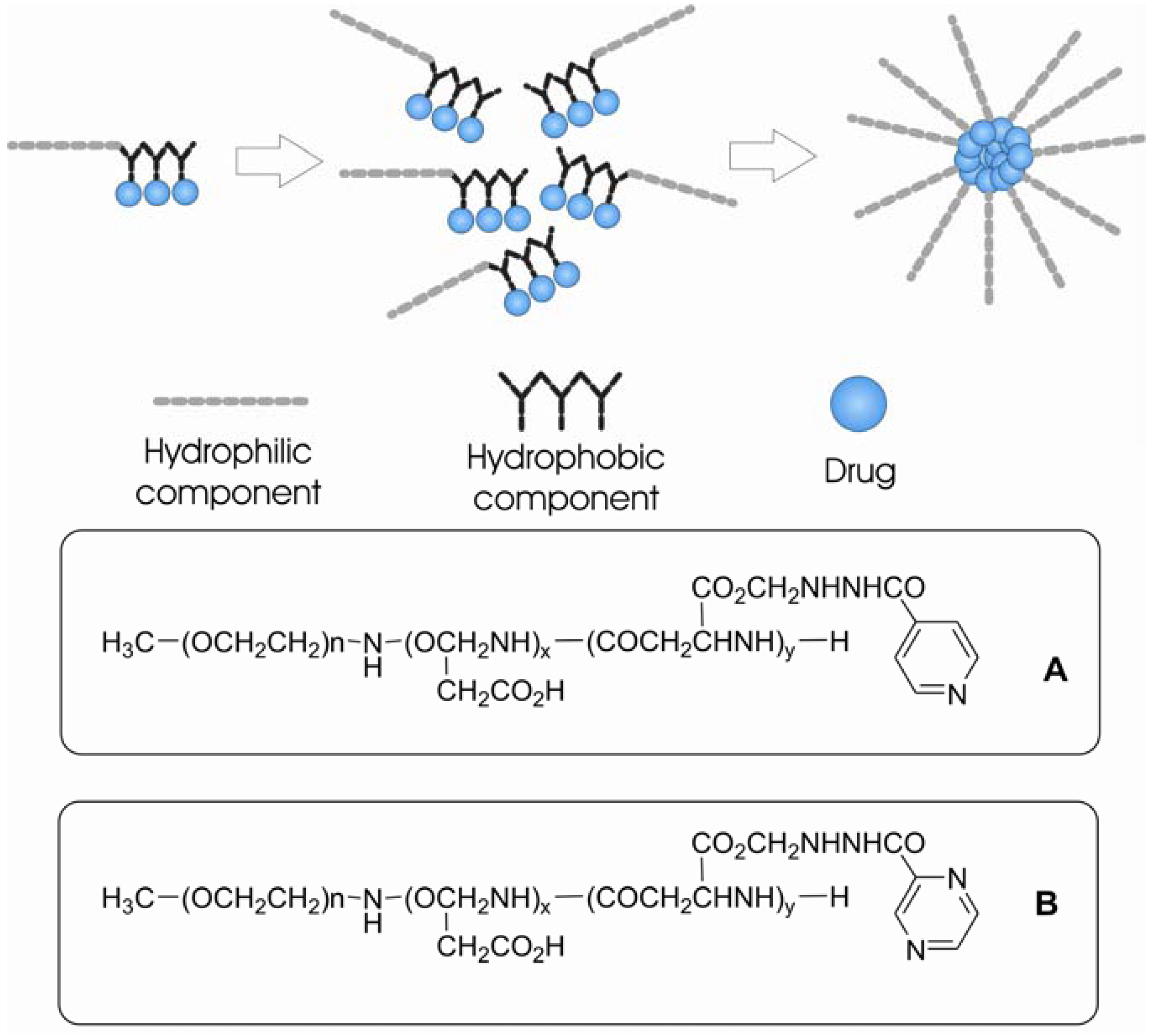

DA-7218 prodrugs
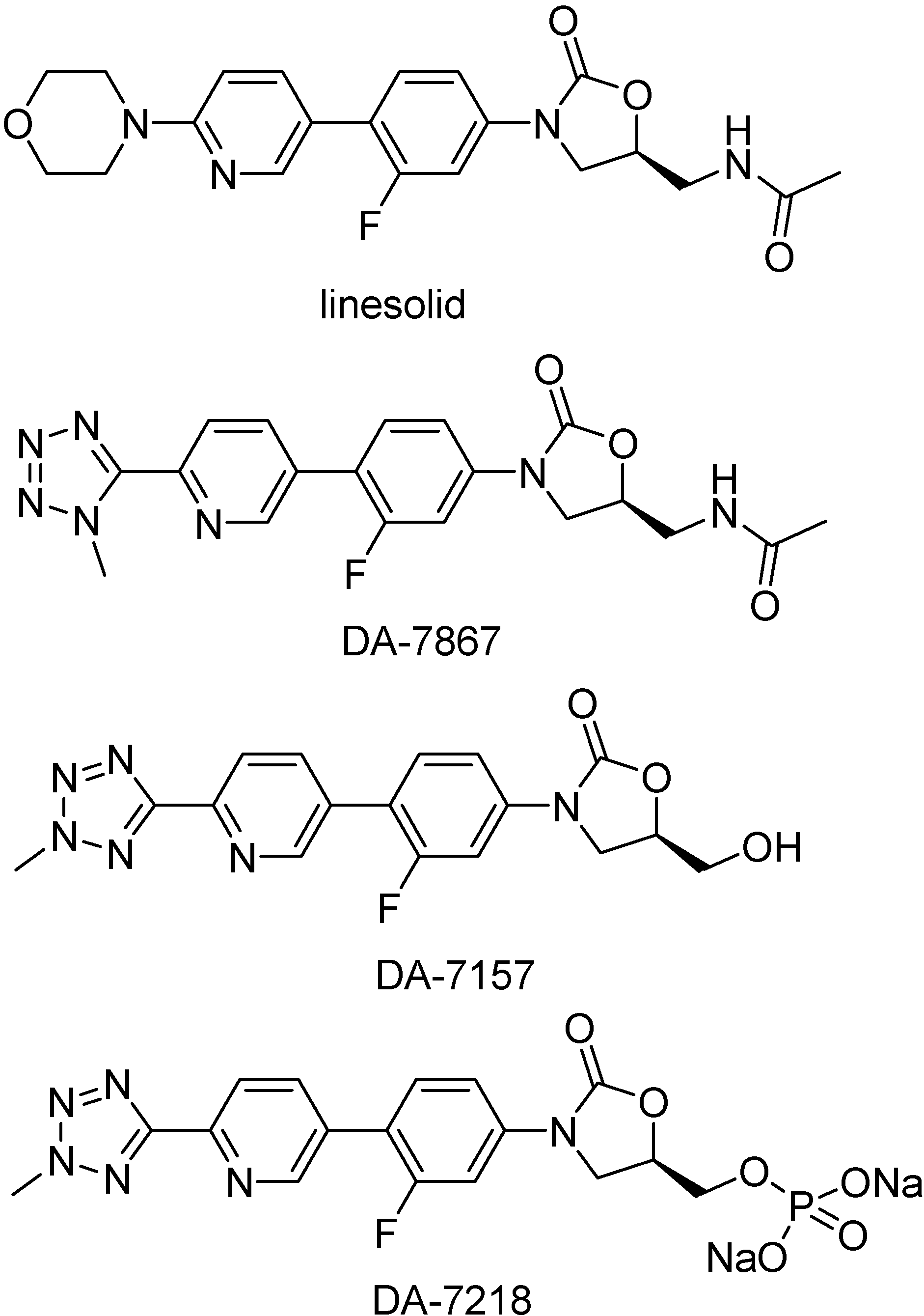
Prodrugs for Sickle Cell Disease
Butyric acid prodrugs



Vanillin prodrugs
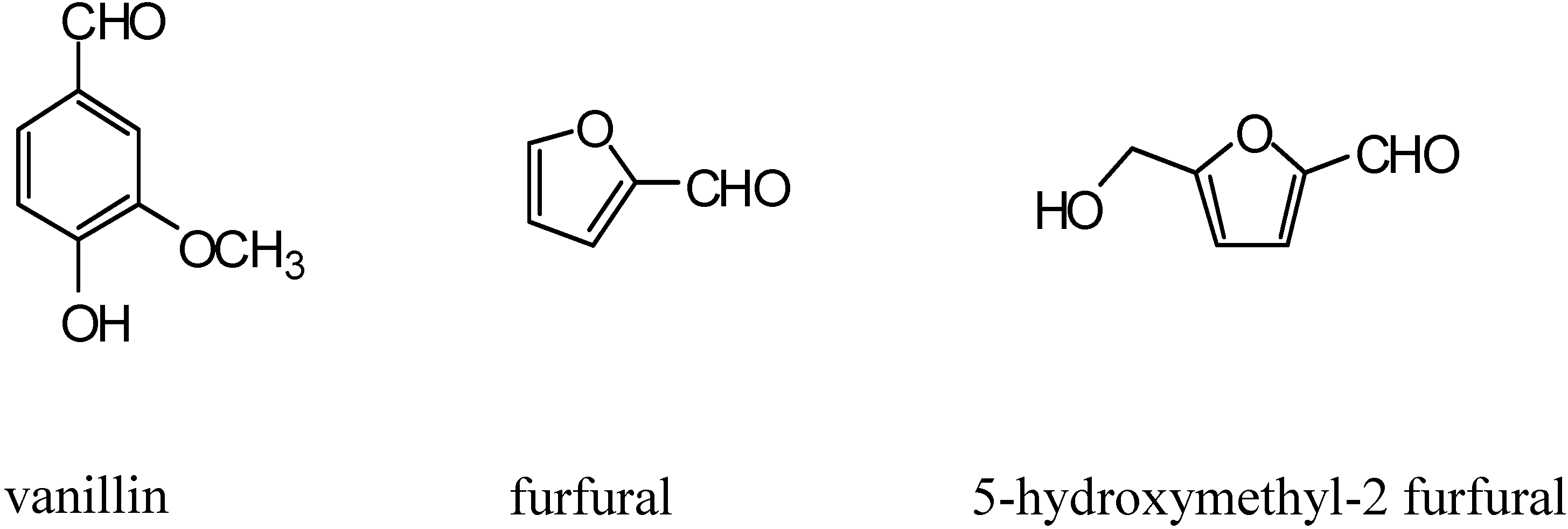
Hydroxyurea and nitrate derivatives

Nitrate derivatives
Conclusions
Acknowledgements
List of abbreviations used
| 5-FC | 5-fluorocytosine |
| 5-FU | 5-fluorouracil |
| ADEPT | antibody-directed enzyme prodrug therapy |
| AN-10 | butylidene dibutyrate |
| apoL-I | apolopoprotein L1 |
| BA | butyric acid |
| CD-CS | recombinant fusion protein consisting of CS protein as a ligand and bacterial CD: cytosine deaminase |
| CL | cutaneous leishmaniasis |
| CMD-P | carboxymethyldextran-thiomannopyranoside-pyrimethamine |
| CpG ODN | CpG oligodeoxynucleotides |
| CpG | a dinucleotide constituted by a cytosine followed by guanine separated by a phosphate |
| CQ | chloroquine |
| CS | malaria circunsporozoite |
| DFMO | eflornithine |
| DHA | dihydroartemisinin |
| DHFR | dihydrofolate reductase |
| DHFR-TS | dihydrofolate reductase thymidilate synthase |
| dNTPs | deoxyribonucleotides |
| DOXP | 1-deoxy-D-xylulose 5-phosphate |
| EB | ethambutol |
| ETA | ethionamide |
| EthA | a flavin monooxygenase found to catalyze the Baeyer-Villiger reaction |
| Et-NIPOx | ethyl ester of N-isopropyl oxamate |
| fma | 2-(N-formyl-N-methyl)aminoethyl |
| GI | gastrointestinal |
| GR | glutathione reductase |
| GSH | glutatione |
| HADH-isozyme | α-hydroxyacid dehydrogenase-isozyme |
| HAT | Human African Trypanosomiasis |
| Hb | hemoglobin |
| Hb F | fetal hemoglobin |
| Hb S | hemoglobin S |
| HU | hydroxyurea |
| INH | isoniazid |
| InhA | enoyl-acyl carrier protein reductase |
| KatG | catalase/peroxidase |
| LDH-C4 | lactate dehydrogenase isozyme-x |
| mAb | monoclonal-antiboby |
| mAb-drug | monoclonal-antiboby drug conjugate |
| MBCs | minimal bactericidal concentrations |
| NbAn33 | a mAB specific for the conserved carbohydrate epitope of VSGs |
| NF | nitrofurazone |
| NFOH | nitrofurazone hydroxymethyl derivative |
| NHS | normal human serum |
| NIPOx | N-isopropyl oxamate |
| NMPC | N-methylene phosphonic chitosan |
| OEC | oxygen equilibrium curve |
| PAS | 4-aminosalicylic acid |
| PEG-PAS | polyethyleneglycol-poly(aspartic acid) |
| PEG-PASP-PZA | poly(ethyleneglycol)-poly(aspartic acid) block copolymer by substituting pyrazinamide on the aspartate free carboxylic groups |
| pfDHFR-TS | P. falciparum dihydrofolate reductase thymidilate synthase |
| PFT | protein farnesyltransferase |
| PLMII | plasmepsinII |
| PncA | mycobacterial pyrazinamidase |
| PQ | primaquine |
| PQD | pyrroloquinazolinediamine |
| PQD-A4 | tetra-acetamido pyrroloquinazolinediamine |
| PQD-BE | bis-ethylcarbamyl pyrroloquinazolinediamine |
| Pro-D ODN | a prodrug form of CpG ODN type D |
| Pro-D35 | D-35 prodrug |
| PTR1 | pteridine reductase enzyme |
| PZA | pyrazinamide |
| SCD | sickle cell disease |
| SD-P | succinyldextran-thiomannopyranoside-pyrimethamine |
| SRA | serum resistance-associated |
| SS cells | sickle erythrocytes |
| TAZ | thiacetazone |
| TB | tuberculosis |
| TLR-9 | Toll-like receptor 9 |
| Tr-apoL-I | truncated apoL-I |
| VL | visceral leishmaniasis |
| VSG | variant surface glycoprotein |
References and Notes
- Hotez, P.J.; Molyneux, D.H.; Fenwick, A.; Ottesen, E.; Ehrlich, S.S.; Sachs, J.D. Incorporating a rapid-impact package for neglected tropical diseases with programs for HIV/AIDS, tuberculosis, and malaria. PLoS M. 2006, 3, e102. [Google Scholar] [CrossRef]
- Beyrer, C.; Villar, J.D.; Suwanvanichkij, V.; Singh, S.; Baral, S.D.; Mills, E.J. Neglected diseases, civil conflicts, and the right to health. Lancet 2007, 370, 619–627. [Google Scholar] [CrossRef]
- Trouiller, P.; Olliaro, P.; Torreele, E.; Orbinski, J.; Laing, R.; Ford, N. Drug development for neglected diseases: a deficient market and a public-health policy failure. Lancet 2002, 359, 2188–2194. [Google Scholar] [CrossRef]
- Ehrenberg, J.P.; Ault, S.K. Neglected diseases of neglected populations: thinking to reshape the determinants of health in Latin America and the Caribbean. BMC Public Health 2005, 5, 119–132. [Google Scholar] [CrossRef]
- Medecins Sans Frontieres. Drugs for Neglected Diseases Initiative: Teaming up to address neglect. 12 March 2003. Accessed from: www.accessmed.msf.org in Nov. 2007.
- Pécoul, B. New drugs for neglected diseases: from pipeline to patients. PloS Med. 2004, 1, 19–22. [Google Scholar] [CrossRef]
- Pink, R.; Hudson, A.; Mouriès, M.A.; Bendig, M. Opportunities and challenges in antiparasitic drug discovery. Nature Rev. Drug Disc. 2005, 4, 727–740. [Google Scholar] [CrossRef]
- Lee, H. J.; Cooperwood, J. S.; You, Z.; Ko, D. H. Prodrug and antedrug: two diametrical approaches in designing safer drugs. Arch. Pharm. Res. 2002, 25, 111–136. [Google Scholar] [CrossRef]
- Silva, A.T.A.; Castro, L.F.; Guido, R.V.C.; Chung, M. C.; Ferreira, E.I. Advances in prodrug design. Mini-Rev. Med. Chem. 2005, 5, 893–914. [Google Scholar] [CrossRef]
- Brener, Z. A descoberta. Mem. Inst. Oswaldo Cruz 1989, 84 (supl II), 1–6. [Google Scholar]
- World Health Organization. Chagas Disease: TDR. Acessed from: http://www.who.int/tdr/diseases/chagas/ in Dec. 2007.
- Urbina, JA. Parasitological cure of Chagas disease: Is it possible? Is it relevant? Mem. Inst. Oswaldo Cruz. 1999, 94, 349–355. [Google Scholar] [CrossRef]
- Rodrigues-Coura, J; de Castro, SL. A critical review on Chagas disease chemotherapy. Mem. Inst. Oswaldo Cruz. 2002, 97, 3–24. [Google Scholar]
- Urbaniak, M.D.; Tabudravu, J.N.; Msaki, A.; Matera, K.M.; Brenk, R.; Jaspars, M.; Ferguson, M.A.J. Identification of novel inhibitors of UDP-Glc 40-epimerase, a validated drug target for african sleeping sickness. Bioorg. Med. Chem. Lett. 2006, 16, 5744–5747. [Google Scholar] [CrossRef]
- Nkemngu, N.J.; Grande, R.; Hansell, E.; McKerrow, J.H.; Caffrey, C.R.; Steverding, D. Improved trypanocidal activities of cathepsin L inhibitors. Int. J. Antimicrob. Agents 2003, 22, 155–159. [Google Scholar] [CrossRef]
- Kuzoe, FAS. Perspectives in research on and control of African trypanosomiasis. Ann. Trop. Med. Parasitol. 1991, 85, 33–41. [Google Scholar]
- Barrett, M.P. The fall and rise of sleeping sickness. Lancet 1999, 353, 1113–1114. [Google Scholar] [CrossRef]
- World Health Organization. Strategic Direction for Research: Leishmaniosis 2002.
- Desjeux, P. Leishmaniasis: current situation and new perspectives. Comp. Immunol. Microbiol. Inf. Dis. 2004, 27, 305–318. [Google Scholar] [CrossRef]
- Szyniarowski, P.; Bettendorff, L.; Schweingruber, M.E. The antitrypanosomal drug melarsoprol competitively inhibits thiamin uptake in mouse neuroblastoma cells. Cell Biol. Toxicol. 2006, 22, 183–187. [Google Scholar] [CrossRef]
- WHO. The world health report 2004. Changing history. WHO: Geneva, 2004. http://www.who.int/whr/2004/en/index.html (accessed June 12, 2007).
- Herwaldt, B. L. Miltefosine: The long-awaited therapy for visceral leishmaniasis? N. Engl. J. Med. 1999, 341, 1840–1842. [Google Scholar] [CrossRef]
- Berman, J. Current treatment approaches to leishmaniasis. Curr. Opin. Infect. Dis. 2003, 16, 397–401. [Google Scholar] [CrossRef]
- Croft, S.L.; Coombs, G.H. Leishmaniasis—current chemotherapy and recent advances in the search for novel drugs. Trends Parasitol. 2003, 19, 502–508. [Google Scholar] [CrossRef]
- Davis, A.J.; Murray, H.W.; Handman, E. Drugs against leishmaniasis: a synergy of technology and partnerships. Trends Parasitol. 2004, 20, 73–76. [Google Scholar] [CrossRef]
- Ouellette, M.; Drummelsmith, J.; Papadopoulou, B. Leishmaniasis: drugs in the clinic, resistance and new developments. Drug Resist. Updat. 2004, 7, 257–266. [Google Scholar] [CrossRef]
- World Health Organization. Global Malaria Programme: Epidemics and Emmergences. http://www.who.int/malaria/epidemicsandemergencies.html Acessed in December 2007.
- Biot, C.; Chibale, K. Novel Approaches to Antimalarial Drug Discovery. Infect. Disord. Drug Targets 2006, 6, 173–204. [Google Scholar] [CrossRef]
- Menezes, C.M.S.; Ferreira, E.I. Modulating agents in resistant malaria. Drug Design Rev. Online 2005, 2, 409–418. [Google Scholar] [CrossRef]
- World Health Organization. Report of the third global meeting of the partners for parasite control Deworming for Health and Development. 2005. http://www.who.int/wormcontrol Acessed in Dec. 2007.
- Ribeiro-dos-Santos, G.; Verjovski-Almeida, S.; Leite, L.C.C. Schistosomiasis--a century searching for chemotherapeutic drugs. Parasitol. Res. 2006, 99, 505–521. [Google Scholar] [CrossRef]
- Murray, J. F. A century of tuberculosis. Am. J. Respir. Crit. Care Med. 2004, 169, 1181–1186. [Google Scholar] [CrossRef]
- World Health Organization. Global tuberculosis control: surveillance, planning, financing; WHO Report; 2007. [Google Scholar]
- Bower, D. L.; Lane, H. C.; Fauci, A. S. Immunopathogenesis of the acquired immunodeficiency syndrome. Ann. Intern. Med. 1985, 103, 704–709. [Google Scholar] [CrossRef]
- Reider, H. L.; Cauthen, G. M.; Comstock, G. W; Snider, D. E., Jr. Epidemiology of tuberculosis in the United States. Epidemiol. Rev. 1989, 11, 79–98. [Google Scholar]
- Cardoso, E. M. Multiple drug resistance: a threat for tuberculosis control. Rev. Panam. Salud Publica 2004, 16, 68–73. [Google Scholar] [CrossRef]
- Elliott, L.; Ashley-Koch, A. E.; De Castro, L.; Jonassaint, J.; Price, J.; Ataga, K. I.; Levesque, M.C.; Weinberg, J.B.; Eckman, J.R.; Orringer, E.P.; Vance, J.M.; Telen, M.J. Genetic polymorphisms associated with priapism in sickle cell disease. Br. J. Haematol. 2007, 137, 262–267. [Google Scholar] [CrossRef]
- Hebbel, R.P. Special issue of microcirculation: Examination of the vascular pathobiology of sickle cell anemia. Microcirculation 2004, 11, 99–100. [Google Scholar] [CrossRef]
- Hiran, S. Multiorgan dysfunction syndrome in sickle cell disease. J. Assoc. Physicians India 2005, 53, 19–22. [Google Scholar]
- Buchanan, G.R.; Debaun, M.R.; Quinn, C.T.; Steinberg, M.H. Sickle cell disease. Hematology 2004, 1, 35–47. [Google Scholar]
- Stuart, M.J.; Nagel, R.L. Sickel-cell disease. Lancet 2004, 364, 1343–1360. [Google Scholar] [CrossRef]
- Perrine, S.P.; Ginder, G.D.; Faller, D.V.; Dover, G.H.; Ikuta, T.; Witkowska, H.E.; Cai, S.P.; Vichinsky, E.; Olivieri, N.F. A short-term trial of butyrate to stimulate fetal-globin-gene expression in the beta-globin disorders. N. Engl. J. Med. 1993, 328, 81–86. [Google Scholar] [CrossRef]
- Platt, O.S.; Brambilla, D.J.; Rosse, W.F.; Milner, P.F.; Castro, O.; Steinberg, M.H.; Klug, P.P. Mortality in sickle cell disease. Life expectancy and risk factors for early death. N. Engl. J. Med. 1994, 330, 1639–1644. [Google Scholar] [CrossRef]
- Powars, D.R.; Weiss, J.N.; Chan, L.S.; Schroeder, W.A. Is there a threshold level of fetal hemoglobin that ameliorates morbidity on sickle cell anaemia? Blood 1983, 63, 921–926. [Google Scholar]
- Chung, M-C.; Silva, A. T de A.; Castro, L. F.; Güido, R. V C.; Nassute, J. C.; Ferreira, E. I. Latenciação e formas avançadas de transporte de fármacos. Rev. Bras. Cienc. Farm/Braz. J. Pharm Sci. 2005, 41, 155–179. [Google Scholar] [CrossRef]
- McKerrow, J.H.; McGrath, M.E.; Engel, J.C. The cysteine protease of Trypanosoma cruzi as a model for antiparasite drug design. Parasitol. Today 1995, 11, 272–82. [Google Scholar] [CrossRef]
- Schirmer, R. H.; Müller, J. G.; Krauth-Siegel, L. Disulfide-reductase inhibitors as chemotherapeutic agents: The design of drugs for trypanosomiasis and malaria. Angew. Chem., Int. Ed. Engl. 1995, 34, 141–154. [Google Scholar] [CrossRef]
- Chung, M-C.; Gonçalves, M. F.; Colli, W.; Ferreira, E. I.; Miranda, M. T. Synthesis and in vitro evaluation of potential antichagasic dipeptide prodrugs of primaquine. J. Pharm. Sci. 1997, 86, 1127–1131. [Google Scholar] [CrossRef]
- Bundgaard, H. (Ed.) Prodrug Design; Elsevier: Amsterdam, 1985.
- Chung, M. C.; Guido, R..V.; Martinelli, T. F.; Goncalves, M. F.; Polli, M. C.; Botelho, K. C.; Varanda, E. A.; Colli, W.; Miranda, M. T.; Ferreira, E. I. Synthesis and in vitro evaluation of potential antichagasic hydroxymethylnitrofurazone (NFOH-121): a new nitrofurazone prodrug. Bioorg. Med. Chem. 2003, 11, 4779–4783. [Google Scholar] [CrossRef]
- Trossini, G. H. G.; Ferreira, E. I. ; Menezes, C. M. S. A substrate-specificity evaluation of cruzain by the AM1 semi-empirical method. In The International Chemical Congress of Pacific Basin Societies - PACIFCHEM 2005, Honolulu, 2005: The International Chemical Congress of Pacific Basin Societies - PACIFCHEM 2005; Abstract Book. 2005. [Google Scholar]
- Menezes, C. M. S.; Trossini, G. H. G.; Chung, Mc ; Ferreira, E. I. A semi-empirical evaluation of mutual dipeptide prodrugs of primaquine and nitrofurazone toward antichagasic leads. In Molecular helminthology & drugs against protozoan parasites. Keystone Symposia - Drugs Against Protozoan Parasites: Target Selection, Structural Biology and Medicinal Chemistry, Silverthone, 2005.
- Scalea, M. A. L.; Juliao, M. S. S.; Chung, M. C.; Serrano, S. H. P.; Ferreira, E. I. Voltammetric behavior of nitrofurazone and its hydroxymethyl prodrug with potential anti-Chagas´ activity. J. Braz. Chem Soc. 2005, 16, 774–782. [Google Scholar] [CrossRef]
- Gerez de Burgos, N.M.; Burgos, C.; Blanco, A.; Paulone, I.; Segura, E.L. Actividad hidroxiácido-dehidrogenasa en Trypanosoma cruzi. Acta. Physiol. Latinoam. 1976, 26, 10–19. [Google Scholar]
- Coronel, C.; Gerez de Burgos, N.M.; Burgos, C.; Blanco, A. Separación y propiedades catalíticas de las izo enzimas de la α-hidroxiácido deshidrogenasa de Trypanosoma cruzi. Medicina (Buenos Aires) 1980, 40, 159–164. [Google Scholar]
- Coronel, C.E.; Rovai, L.E.; Gerez de Burgos, N.M.; Burgos, C.; Blanco, A. Properties of α-hydroxyacid dehydrogenase isozymes from Trypanosoma cruzi. Mol. Biochem. Parasitol. 1981, 4, 29–38. [Google Scholar] [CrossRef]
- Montamat, E.E.; Arauzo, S.S.; Blanco, A. Subcellular localization of leucine aminotransferase and a-hydroxiacid dehydrogenase in Trypanosoma cruzi. Mol. Biochem. Parasitol. 1987, 22, 185–193. [Google Scholar] [CrossRef]
- Elizondo, S.; Chena, M.A,; Rodríguez-Páez, L.; Nogueda, B.; Baeza, I.; Wong, C. Inhibition of Trypanosoma cruzi α-Hydroxyacid Dehydrogenase-isozyme II by N-Isopropyl Oxamate and its Effect on Intact Epimastigotes. J. Enz. Inhib. Med. Chem. 2003, 18, 265–271. [Google Scholar] [CrossRef]
- Aldunate, J.; Repetto, Y.; Letelier, M.E.; Morello, A. The carboxyl esterases of Trypanosoma cruzi epimastigotes. Comp. Biochem. Physiol. 1987, 86, 67–71. [Google Scholar] [CrossRef]
- Chena, M.A,; Elizondo, S.; Rodríguez-Páez, L.; Nogueda, B.; Baeza, I.; Wong, C. Trypanocidal activity of N-isopropyl oxamate on cultured epimastigotes and murine trypanosomiasis using different Trypanosoma cruzi strains. J. Enz. Inhib. Med. Chem. 2005, 2, 189–197. [Google Scholar]
- Brener, Z. Recent advances in the chemotherapy of Chagas’ disease. Mem. Inst. Oswaldo. Cruz. 1984, 79, 149–155. [Google Scholar] [CrossRef]
- Lanteri, C. A.; Trumpower, B. L.; Tidwell, R. R.; Meshnick, S, R. DB75, a novel trypanocidal agent, disrupts mitochondrial function in Saccharomyces cerevisiae. Antimicrob. Agents Chemoter. 2004, 48, 3968–3974. [Google Scholar] [CrossRef]
- Dann, O.; Fick, H.; Pietzner, B.; Walkenhorst, E.; Fernbach, R.; Zeh, D. Trypanocidal diamidine with three isolated ring systems. Justus Liebigs. Ann. Chem. 1975, 160–194. [Google Scholar]
- Das, B. P.; Boykin, D. W. Synthesis and antiprotozoal activity of 2,5-bis(4-guanylphenyl)furans. J. Med. Chem. 1977, 20, 531–536. [Google Scholar] [CrossRef]
- Syrigos, K. N; Epenetos, A. A. Antibody directed enzyme prodrug therapy (ADEPT): a review of the experimental and clinical considerations. Anticancer Res. 1999, 19, 605–614. [Google Scholar]
- Pratt, R. F.; Faraci, W. S. Direct observation by proton NMR of cephalosporoate intermediates in aqueous solution during the hydrazinolysis and .beta.-lactamase-catalyzed hydrolysis of cephalosporins with 3' leaving groups: kinetics and equilibria of the 3' elimination reaction. J. Am. Chem. Soc. 1986, 108, 5328–5333. [Google Scholar] [CrossRef]
- Nguyen, V. K.; Desmyter, A.; Muyldermans, S. Functional heavy-chain antibodies in Camelidae. Adv. Immunol. 2001, 79, 261–296. [Google Scholar] [CrossRef]
- Lauwereys, M.; Arbabi, Ghahroudi, M.; Desmyter, A.; Kinne, J.; Holzer, W.; De Genst, E.; Wyns, L.; Muyldermans, S. Potent enzyme inhibitors derived from dromedary heavy-chain antibodies. EMBO J. 1998, 17, 3512–3520. [Google Scholar] [CrossRef]
- Stijlemans, B.; Conrath, K.; Cortez-Retamozo, V.; Xong, H. V.; Wyns, L.; Senter, P.; Revets, H.; De Baetselier, P.; Muyldermans, S.; Magez, S. Efficient targeting of conserved cryptic epitopes of infectious agents by a single domain antibodies. J. Biol. Chem. 2004, 279, 1256–1261. [Google Scholar] [CrossRef]
- Hamers-Casterman, C.; Atarhouch, T.; Muyldermans, S.; Robison, G.; Hamers, C.; Songa, E. B.; Bendahman, N.; Hamers, R. Naturally occurring antibodies devoid of light chains. Nature. 1993, 363, 446–448. [Google Scholar] [CrossRef]
- Van Meirvenne, N.; Maginus, E.; Janssens, P. G. The effect of normal human serum on trypanosomes of distinct antigenic type (ETat 1 to 12) isolated from a strain of Trypanosoma brucei rhodesiense. Ann. Soc. Belg. Med. Trop. 1976, 56, 55–63. [Google Scholar]
- Vanhamme, L; Pays, E. The trypanosome lytic factor of human serum and the molecular basis of sleeping sickness. Int. J. Parasitol. 2004, 34, 887–898. [Google Scholar] [CrossRef]
- Vanhamme, L.; Paturiaux-Hanocq, F.; Poelvoorde, P.; Nolan, D. P.; Lins, L.; Abbeele, J. V. D.; Pays, A.; Tebabi, P.; Xong, H. V.; Jacquet, A.; Moguilevsky, N.; Dieu, M.; Kane, J. P.; De Baetselier, P.; Brasseur, R.; Pays, E. Apolipoprotein L-I is the trypanosome lytic factor of human serum. Nature 2003, 422, 83–87. [Google Scholar] [CrossRef]
- Xong, H. V.; Vanhamme, L.; Chamekh, M.; Chimfwembe, C. E. A VSG expression site-associated gene confers resistance to human serum in Trypanosoma rhodesiense. Cell 1998, 95, 839–846. [Google Scholar] [CrossRef]
- Baral, T. N.; Magez, S.; Stijlemans, B.; Conrath, K.; Vanhollebeke, B.; Pays, E.; Muyldermans, S.; De Baetselier, P. Experimental therapy of African trypanosomiasis with a nanobody-conjugated Human Trypanolitic Factor. Nat. Med. 2006, 12, 580–584. [Google Scholar] [CrossRef]
- Pays, E.; Vanhamme, L.; Perez-Morga, D. Antigenic variation in Trypanosoma brucei: facts, challenges and mysteries. Curr. Opin. Microbiol. 2004, 7, 369–374. [Google Scholar] [CrossRef]
- Horn, D. The molecular control of antigenic variation in Trypanosoma brucei. Curr. Mol. Med. 2004, 4, 563–576. [Google Scholar] [CrossRef]
- D’Silva, C.; Daunes, S. Structure-Activity Study on the in Vitro Antiprotozoal Activity of Glutathione Derivatives. J. Med. Chem. 2000, 43, 2072–2078. [Google Scholar] [CrossRef]
- Krieg, A. M. Therapeutic potential of Toll-like receptor 9 activation. Nat. Rev. Drug Discov. 2006, 5, 471–484. [Google Scholar] [CrossRef]
- Klinman, D. M.; Verthelyi, D.; Takeshita, F.; Ishii, K. J. Immune recognition of foreign DNA: a cure for bioterrorism? Immunity 1999, 11, 123–129. [Google Scholar] [CrossRef]
- Klinman, D. M. Immunotherapeutic uses of CpG oligodeoxynucleotides. Nat. Rev. Immunol. 2004, 4, 249–258. [Google Scholar] [CrossRef]
- Agrawal, S.; Kandimalla, E. R. Antisense and siRNA as agonists to Toll-like receptors. Nat. Biotechnol. 2004, 22, 1533–1537. [Google Scholar] [CrossRef]
- Grajkowski, A.; Pedras-Vasconcelos, J.; Wang, V.; Ausín, C.; Hess, S.; Verthelvi, D.; Beaucage, S. L. Thermolytic CpG-containing DNA oligonucleotides as potential immunotherapeutic prodrugs. Nucleic Acids Res. 2005, 33, 3550–3560. [Google Scholar] [CrossRef]
- Verthelyi, D.; Ishii, K. J.; Gursel, M.; Takeshita, F.; Klinman, D. M. Human peripheral blood cells differentially recognize and respond to two distinct CpG motifs. J. Immunol. 2001, 166, 2372–2377. [Google Scholar] [CrossRef]
- Verthelyi, D.; Kenney, R. T.; Seder, R. A.; Gam, A. A.; Friedag, B.; Klinman, D. M. CpG oligodeoxynucleotides as vaccine adjuvants in primates. J. Immunol. 2002, 168, 1659–1663. [Google Scholar] [CrossRef]
- Verthelyi, D.; Gursel, M.; Kenney, R. T.; Lifson, J. D.; Shuying, L.; Mican, J.; Klinman, D. M. CpG Oligodeoxynucleotides protect normal and SIV infected macaques from Leishmania infection. J. Immunol. 2003, 170, 4717–4723. [Google Scholar] [CrossRef]
- Guiducci, C.; Ott, G.; Chan, J. H.; Damon, E.; Calacsan, C.; Matray, T.; Lee, K. D.; Coffman, R. L.; Barrat, F. J. Properties regulating the nature of the plasmacytoid dendritic cell response to Toll-like receptor 9 activation. J. Exp. Med. 2006, 203, 1999–2008. [Google Scholar] [CrossRef]
- Wu, C. C. N.; Lee, J.; Raz, E.; Corr, M.; Carson, D. Necessity of oligonucleotide aggregation for Toll-like receptor 9 activation. J. Biol. Chem. 2004, 279, 33071–33078. [Google Scholar] [CrossRef]
- Kerkmann, M.; Costa, L. T.; Richter, C.; Rothenfusser, S.; Battiany, J.; Hornung, V.; Johnson, J.; Englert, S.; Ketterer, T.; Heckl, W.; Thalhammer, S.; Endres, S.; Hartmann, G. Spontaneous formation of nucleic acid-based nanoparticles is responsible for high interferon-{alpha} induction by CpG-A in plasmacytoid dendritic cells. J. Biol. Chem. 2005, 280, 8086–8093. [Google Scholar] [CrossRef]
- Puig, M.; Grajkowski, A.; Bockowska, M.; Ausín, C.; Beaucage, S. L.; Verthelvi, D. Use of thermolytic protective groups to prevent G-tetrad formation in CpG ODN type D: structural studies and immunomodulatory activity in primates. Nucleics Acid Res. 2006, 34, 6488–6495. [Google Scholar] [CrossRef]
- Mansour, N. S.; Mcconnel, E. Leishmaniasis in the Sudan Republic 27. Lack of effect of chloroquine and pyrimethamine on visceral Leishmaniasis in the hamster. Am. J. Trop. Med. Hyg. 1966, 15, 146–148. [Google Scholar]
- Bello, A. R.; Nare, B.; Freedman, D.; Hardy, L.; Beverley, S. M. PTR1: A reductase mediating salvage of oxidized pteridines and methotrexate resistance in the protozoan parasite Leishmania major. Proc. Natl. Acad. Sci. USA. 1994, 9, 11442–11446. [Google Scholar]
- Nare, B.; Hardy, L. W.; Beverley, S. M. The roles of pteridine reductase 1 and dihydrofolate reductasethymidylate synthase in pteridine metabolism in the protozoan parasite Leishmania major. J. Biol. Chem. 1997, 272, 13883–13891. [Google Scholar]
- De Carvalho, P. B.; Ramos, D. C. C.; Cotrim, P. C.; Ferreira, E. I. Synthesis and in vitro evaluation of potential anti-leishmanial targeted drugs of pyrimethamine. J. Pharm. Sci. 2003, 92, 2109–2116. [Google Scholar] [CrossRef]
- Molyneux, D. H.; Ashford, R. W. (Eds.) The biology of Trypanosoma and Leishmania, parasites of man and domestic animals; International Publications: New York, 1983; pp. 211–249.
- Chakraborty, R.; Chakraborty, P.; Basu, M. K. Macrophage mannosyl fucosyl receptor: Its role in invasion of virulent and avirulent L. donovani promastigotes. Biosci. Rep. 1998, 18, 129–142. [Google Scholar] [CrossRef]
- Croft, S. L.; Hogg, J.; Gutteridge, W. E.; Hudson, A. T.; Randall, A. W. The activity of hydroxynaphthoquinones against Leishmania donovani. J. Antimicrob. Chem. 1992, 30, 827–832. [Google Scholar] [CrossRef]
- Mäntylä, A.; Garnier, T.; Rautio, J.; Nevalainen, T.; Vepsälainen, J.; Koskinen, A.; Croft, S. L.; Järvinen, T. Synthesis, in vitro evaluation and antileishmanial activity of water-soluble prodrugs of buparvaquone. J. Med. Chem. 2003, 47, 188–195. [Google Scholar]
- Mäntylä, A.; Rautio, J.; Nevalainen, T.; Vepsälainen, J.; Juvonen, R.; Kendrick, H.; Garnier, T.; Croft, S.L.; Järvinen, T. Synthesis and antileishmanial activity of novel buparvaquone oxime derivatives. Bioorg. Med. Chem. 2004, 12, 3497–3502. [Google Scholar] [CrossRef]
- Mäntylä, A.; Garnier, T.; Rautio, J.; Nevalainen, T.; Vepsälainen, J.; Koskinen, A.; Croft, S. L.; Järvinent, T. Synthesis, in Vitro Evaluation, and Antileishmanial Activity of Water-Soluble Prodrugs of Buparvaquone. J. Med. Chem. 2004, 47, 188–195. [Google Scholar] [CrossRef]
- Fleisher, D.; Bong, R.; Stewart, B. H. Improved oral drug delivery: solubility limitations overcome by the use of prodrugs. Adv. Drug Delivery Rev. 1996, 19, 115–130. [Google Scholar] [CrossRef]
- Varia, S. A.; Schuller, S.; Sloan, K. B.; Stella, V. J. Phenytoin prodrugs III: water-soluble prodrugs for oral and/or parenteral use. J. Pharm. Sci. 1984, 73, 1068–1073. [Google Scholar] [CrossRef]
- Krise, J. P.; Zygmunt, J.; Georg, G. I.; Stella, V. J. Novel prodrug approach for tertiary amines: synthesis and preliminary evaluation of n-phosphonooxymethyl prodrugs. J. Med. Chem. 1999, 42, 3094–3100. [Google Scholar] [CrossRef]
- Garnier, T.; Mäntylä, A.; Järvinen, T.; Lawrence, J.; Brown, M.; Croft, S. In vivo studies on the antileishmanial activity of buparvaquone and its prodrugs. J. Antimicrob. Chemother. 2007, 60, 802–810. [Google Scholar] [CrossRef]
- Mäntylä, A.; Rautio, J.; Nevalainen, T.; Keski-Rahkonen, P.; Vepsälainen, J.; Järvinen, T. Design, synthesis and in vitro evaluation of novel water-soluble prodrugs of buparvaquone. Eur. J. Pharm. Sci. 2004, 23, 151–158. [Google Scholar] [CrossRef]
- Jousserandot, A.; Boucher, J. L.; Henry, Y.; Niklaus, B.; Clement, B.; Mansuy, D. Microsomal cytochrome P450 dependent oxidation of N-hydroxyguanidines, amidoximes, and ketoximes: mechanism of the oxidative cleavage of their C=N(OH) bond with formation of nitrogen oxides. Biochemistry 1998, 37, 17179–17191. [Google Scholar] [CrossRef]
- Chattopadhyay, R.; Mahajan, B.; Kumar, S. Assessment of safety of the major antimalarial drugs. Expert Opin Drug Saf. 2007, 6, 505–21. [Google Scholar] [CrossRef]
- Ferreira, E. I.; Cruz, M. L.; Korolkovas, A. Latentiation of chemotherapeutic agents. Part 1: synthesis of oxidized starch imine derivatives and antimalarials. Starch/starke 1992, 44, 21–24. [Google Scholar] [CrossRef]
- Ohara, M. T.; Sakuda, T. M.; Cruz, M. L.; Ferreira, E. I.; Korolkovas, A. Antimalarial Activity Of Imine Oxidized Starch And Cellulose Derivatives. Boll. Chim. Farm. 1995, 9, 522–527. [Google Scholar]
- Cruz, M. L.; Ferreira, E. I.; Korolkovas, A. Latentiation of chemotherapeutic agents. Part 2: synthesis of oxidized cellulose imine derivatives and antimalarials. Starch/Stärke 1997, 49, 66–70. [Google Scholar] [CrossRef]
- Van Deenen, L. L. M.; De Gier, J. Lipids of the red cell membrane. In The red blood cell; Surgenor, G., Ed.; Academic Press, Inc.: New York, N.Y, 1975; pp. 147–211. [Google Scholar]
- Nicolas, O.; Margout, N. T.; Wein, S.; Calas, M.; Vial, H. J.; Bressollei, F. M. Pharmacological Properties of a New Antimalarial Bisthiazolium Salt, T3, and a Corresponding Prodrug, TE3. Antimicrob. Agents Chemother. 2005, 49, 3631–3639. [Google Scholar] [CrossRef]
- Vial, H.J.; Wein, S.; Farenc, C.; Kocken, C.; Nicolas, O.; Ancelin, M. L.; Bressolles, F.; Thomas, A.; Calas, M. Prodrugs of bisthiazolium salts are orally potent antimalarials. Proc. Natl. Acad. Sci. U.S.A. 2004, 101, 15458–15463. [Google Scholar] [CrossRef]
- Calas, M.; Ancelin, M. L.; Cordina, G.; Portefaix, P.; Piquet, G.; Vidal-Sailhan, V.; Vial, H. Antimalarial Activity of Compounds Interfering with Plasmodium falciparum Phospholipid Metabolism: Comparison between Mono- and Bisquaternary Ammonium Salts. J. Med. Chem. 2000, 43, 505–516. [Google Scholar] [CrossRef]
- Wiesner, J.; Hintz, M.; Altincicek, B.; Sanderbrand, S.; Weidemeyer, C.; Beck, E.; Jomaa, H. Plasmodium falciparum: Detection of the Deoxyxylulose 5-Phosphate Reductoisomerase Activity. Exp. Parasitol. 2000, 96, 182–186. [Google Scholar] [CrossRef]
- Lell, B.; Ruangweerayut, R.; Wiesner, J.; Missinou, M. A.; Schindler, A.; Baranek, T.; Hintz, M.; Hutchinson, D.; Jomaa, H.; Kremsner, P. G. Fosmidomycin, a Novel Chemotherapeutic Agent for Malaria. Antimicrob. Agents Chemother. 2003, 47, 735–738. [Google Scholar] [CrossRef]
- Jomaa, H.; Wiesner, J.; Sanderbrand, S.; Altincicek, B.; Weidemeyer, C.; Hintz, M.; Turbachova, I.; Eberl, M.; Zeidler, J.; Lichtenthaler, H. K.; Soldati, D.; Beck, E. Inhibitors of the Nonmevalonate Pathway of Isoprenoid Biosynthesis as Antimalarial Drugs. Science. 1999, 285, 1573–1576. [Google Scholar] [CrossRef]
- Tsuchiya, T.; Ishibashi, K.; Terakawa, M.; Nishiyama, M.; Itoh, N.; Noguchi, H. Pharmacokinetics and metabolism of fosmidomycin, a new phosphonic acid, in rats and dogs. Eur. J. Drug Metab. Pharmacokinet. 1982, 7, 59–64. [Google Scholar] [CrossRef]
- Reichenberg, A.; Wiesner, J.; Weidemeyer, C.; Dreiseidler, E.; Sanderbrand, S.; Altincicek, B.; Beck, E.; Schlitzer, M.; Jomaa, H. Diaryl Ester Prodrugs of FR900098 with Improved In Vivo Antimalarial Activity. Bioorg. Med. Chem. Lett. 2001, 11, 833–835. [Google Scholar] [CrossRef]
- Ortmann, R.; Wiesner, J.; Reichenberg, A.; Henscker, D.; Beck, E.; Jomaa, H.; Schlitzer, M. Acyloxyalkyl ester prodrugs of fr900098 with improved in vivo anti-malarial activity. Bioorg. Med. Chem. Lett. 2003, 13, 2163–2166. [Google Scholar] [CrossRef]
- Ortmann, R.; Wiesner, J.; Reichenberg, A.; Henschker, E. B.; Jomaa, H.; Schlitzer, M. Alkoxycarbonyloxyethyl Ester Prodrugs of FR900098 with Improved In Vivo Antimalarial Activity. Arch. Pharm. Chem. Life. Sci. 2005, 338, 305–314. [Google Scholar] [CrossRef]
- Hindley, S.; Ward, S. A.; Storr, R. C.; Searle, N. L.; Bray, P. G.; Park, K.; Davies, J.; O’Neil, P. M. Mechanism-Based Design of Parasite-Targeted Artemisinin Derivatives: Synthesis and Antimalarial Activity of New Diamine Containing Analogues. J. Med. Chem. 2002, 45, 1052–1063. [Google Scholar] [CrossRef]
- O’Neil, P.; Posner, G. H. A Medicinal Chemistry Perspective on Artemisinin and Related Endoperoxides. J. Med. Chem. 2004, 47, 2945–2964. [Google Scholar] [CrossRef]
- Borstnik, K.; Paik, I-H.; Posner, G. H. Malaria: New Chemotherapeutic Peroxide Drugs. Mini Rev. Med. Chem. 2002, 2, 573–583. [Google Scholar] [CrossRef]
- Cumming, J. N.; Ploypradith, P.; Posner, G. H. Antimalarial activity of artemisinin (qinghaosu) and related trioxanes: mechanism(s) of action. Adv. Pharmacol. 1997, 37, 253–297. [Google Scholar]
- O’Neil, P.; Stocks, P. A.; Pugh, M. D.; Araujo, N. C.; Korshin, E.; Bickley, J. F.; Ward, S. A.; Bray, P. G.; Pasini, E.; Davies, J.; Verissimo, E.; Bach, M. D. Design and Synthesis of Endoperoxide Antimalarial Prodrug Models. Angew. Chem. 2004, 43, 4193–4197. [Google Scholar] [CrossRef]
- Jefford, A. W. Why Artemisinin and Certain Synthetic Peroxides are Potent Antimalarials. Implications for the Mode of Action. Curr. Med. Chem. 2001, 8, 1803–1826. [Google Scholar] [CrossRef]
- Eckstein-Ludwig, U.; Webb, R. J.; van Goethem, I. D. A.; East, J. M.; Lee, A. G.; Kimura, M.; O’Neil, P. M.; Bray, P. G.; Ward, s. A.; Krishna, S. Artemisinins target the SERCA of Plasmodium falciparum. Nature 2003, 424, 957–961. [Google Scholar] [CrossRef]
- Li, R.; Kenyon, G. L.; Cohen, F. E.; Chen, X.; Gong, B.; Dominguez, J. N.; Davidson, E.; Kurzban, G.; Miller, R. E.; Nuzum, E. O.; Rosenthal, P. J.; McKerrol, J. H. In Vitro Antimalarial Activity of Chalcones and Their Derivatives. J. Med. Chem. 1995, 38, 5031–5037. [Google Scholar] [CrossRef]
- Atamna, H.; Ginsburg, H. A proposed mechanism to account for the high levels of non-heme iron found in the membranes of hemoglobinopathic red blood cells. J. Biol. Chem. 1995, 270, 24876–24883. [Google Scholar] [CrossRef]
- Schirmer, R. H.; Müller, J. G.; Krauth-Siegel, R. L. Disulfide reductase inhibitors as chemotherapeutic agents: the design of drugs for trypanosomiasis and malaria. Angew. Chem. Int. Edn. 1995, 34, 141–154. [Google Scholar]
- Davioud-Charvet, E.; Delarue, S.; Biot, C.; Schwobel, B.; Boehme, C. C.; Mussigbrodt, A.; Maes, L.; Sergheraert, C.; Grellier, P.; Schirmer, R. H.; Becker, K. A prodrug for of a Plasmodium falciparum glutathione reductase inhibitor conjugated with a 4-anilinoquinoline. J. Med. Chem. 2001, 44, 4268–4276. [Google Scholar] [CrossRef]
- Meierjohann, S.; Walter, R. D.; Muller, S. Regulation of intracellular glutathione levels in erythrocytes infected with chloroquine-sensitive and chloroquine-resistant Plasmodium falciparum. Biochem. J. 2002, 368, 761–768. [Google Scholar] [CrossRef]
- Biot, C.; Dessolin, J.; Grellier, P.; Davioud-Charvet, E. Double-drug development against antioxidant enzymes from Plasmodium falciprurn. Redox Rep. 2003, 8, 280–283. [Google Scholar]
- Gomes, P.; Araujo, M. J.; Rodriguez, M.; Vale, N.; Azevedo, Z.; Iley, J.; Chambel, P.; Morais, J.; Moreira, R. Synthesis of imidazolidin-4-one and 1H-imidazo[2,1-a]isoindole-2,5(3H,9bH)-dione derivatives of primaquine: scope and limitations. Tetrahedron. 2004, 60, 5551–5562. [Google Scholar] [CrossRef]
- Brueckner, R. P.; Ohrt, C.; Baird, J. K.; Milhous, W. K. Antimalarial Chemotherapy; Rosenthal, P. J., Ed.; Humana: Totowa, 2001; pp. 123–151. [Google Scholar]
- Trouet, A.; Pirson, P.; Steiger, R.; Masquelier, M.; Baurain, R.; Gillet, J. Development of new derivatives of primaquine by association with lysosomotropyc carriers. Bull. World Health Org. 1981, 59, 449–458. [Google Scholar]
- Philip, A.; Kepler, J A.; Johnson, B. H.; Carroll, F. I. Peptide Derivatives of Primaquine as Potential Antimalarial Agents. J. Med. Chem. 1988, 31, 870–874. [Google Scholar] [CrossRef]
- Pauletti, G. M.; Gangwar, S.; Siahaan, T. J.; Aube, J.; Borchardt, R. T. Improvement of oral peptide bioavailability: Peptidomimetics and prodrug strategies. Adv. Drug. Del. Rev. 1997, 27, 235–256. [Google Scholar] [CrossRef]
- Bundgaard, H. (C) Means to enhance penetration: (1) Prodrugs as a means to improve the delivery of peptide drugs. Adv. Drug. Del. Rev. 1992, 8, 1–38. [Google Scholar]
- Borissova, R.; Stjarnkvist, P.; Karlsson, M. O.; Sjoholm, I. Biodegradable microspheres. 17. Lysosomal degradation of primaquine-peptide spacer arms. J. Pharm. Sci. 1995, 84, 256–262. [Google Scholar] [CrossRef]
- Portela, M. J.; Moreira, R.; Valente, E.; Constantino, L.; Iley, J.; Pinto, J.; Rosa, R.; Cravo, P.; do Rosario, V. E. Dipeptide Derivatives of Primaquine as Transmission-Blocking Antimalarials: Effect of Aliphatic Side-Chain Acylation on the Gametocytocidal Activity and on the Formation of Carboxyprimaquine in Rat Liver Homogenates. Pharm. Res. 1999, 16, 949–955. [Google Scholar]
- Bak, A.; Fich, M.; Larsen, B. D.; Frokjaer, S.; Friis, G. J. N-terminal 4-imidazolidinone prodrugs of Leu-enkephalin: synthesis, chemical and enzymatic stability studies. Eur. J. Pharm. Sci. 1999, 7, 317–323. [Google Scholar] [CrossRef]
- Araujo, M.. J.; Bom, J.; Capela, R.; Casimiro, C.; Chambel, P.; Gomes, P.; Iley, J.; Lopes, F.; Morais, J.; Moreira, R.; de Oliveira, E.; do Rosario, V.; Vale, N. Imidazolidin-4-one Derivatives of Primaquine as Novel Transmission-Blocking Antimalarials. J. Med. Chem. 2005, 48, 888–892. [Google Scholar] [CrossRef]
- Vagapandu, S.; Sachdeva, S.; Jain, M.; Singh, S.; Singh, P. P.; Kaul, C. L.; Jain, R. 8-Quinolinamines and Their Pro Prodrug Conjugates as Potent Blood-Schizontocidal Antimalarial Agents. Bioorg. Med. Chem. 2003, 11, 4557–4568. [Google Scholar] [CrossRef]
- Goldberg, D. E.; Slater, A. F.; Beavis, R.; Chait, B.; Cerami, A.; Henderson, G. Hemoglobin degradation in the human malaria pathogen Plasmodium falciparum: a catabolic pathway initiated by a specific aspartic protease. J. Exp. Med. 1991, 173, 961–969. [Google Scholar] [CrossRef]
- Romeo, S.; Dell'Agli, M.; Parapini, S.; Rizzi, L.; Galli, G.; Mondani, M.; Sparatore, A.; Taramelli, D.; Bosisio, E. Plasmepsin II inhibition and antiplasmodial activity of Primaquine–Statine ‘double-drugs’. Bioorg. Med. Chem. Lett. 2004, 14, 2931–2934. [Google Scholar] [CrossRef]
- Yuthavong, Y. Basis for antifolate action and resistance in malaria. Microbes Infect. 2002, 4, 175–182. [Google Scholar] [CrossRef]
- Rieckmann, K. H. The in vitro activity of experimental antimalarial compounds against strains of Plasmodium falciparum with varying degrees of sensitivity to pyrimethamine and chloroquine. In Chemotherapy of malaria and resistance to antimalarials; (World Health Organization Technical Report Series); World Health Organization: Geneva, Switzerland, 1973; p. 58. [Google Scholar]
- Yuvaniyama, J.; Chitnumsub, P.; Kamchonwongpaisan, S.; Vanichtanankul, J.; Sirawaraporn, W.; Taylor, P.; Walkinshaw, M. D.; Yuthavong, Y. Insights into antifolate resistance from malarial DHFR-TS structures. Nat. Struct. Biol. 2003, 10, 357–365. [Google Scholar] [CrossRef]
- Rieckmann, K. H.; Yeo, A. E.; Edstein, M. D. Activity of PS-15 and its metabolite, WR99210, against Plasmodium falciparum in an in vivo-in vitro model. Trans. R. Soc. Trop. Med. Hyg. 1996, 90, 568–571. [Google Scholar] [CrossRef]
- Canfield, C. J.; Milhous, W. K.; Ager, A. L.; Rossan, R. N.; Sweeney, T. R.; Lewis, N. J.; Jacobus, D. P. PS-15: a potent, orally active antimalarial from a new class of folic acid antagonists. Am. J. Trop. Med. Hyg. 1993, 49, 121–126. [Google Scholar]
- Shearer, T. W.; Kozar, M. P.; O’Neil, M. T.; Smith, P. L.; Schiehser, G. A.; Jacobus, D. P.; Diaz, D. S.; Yang, Y-S.; Milhous, W. k.; Skillman, D. R. In Vitro Metabolism of Phenoxypropoxybiguanide Analogues in Human Liver Microsomes to Potent Antimalarial Dihydrotriazines. J. Med. Chem. 2005, 48, 2805–2813. [Google Scholar] [CrossRef]
- Wiesner, J.; Kettler, K.; Sakowski, J.; Ortmann, R.; Katzin, A. M.; Kimura, E. A.; Silber, K.; Klebe, G.; Jomaa, H.; Schlitzer, M. Farnesyltransferase inhibitors inhibit the growth of malaria parasites in vitro and in vivo. Angew. Chem., Int. Ed. 2004, 43, 251–254. [Google Scholar] [CrossRef]
- Casey, P. J.; Seabra, M. C. Protein Prenyltransferases. J. Biol. Chem. 1996, 271, 5289–5292. [Google Scholar] [CrossRef]
- Ohkanda, J.; Lockman, J. W.; Yokoyama, K.; Gelb, M. H.; Croft, S. L.; Kendrick, H.; Harrell, M. I.; Feagin, J. E.; Blaskovich, M. A.; Sebti, S. M.; Hamilton, A. D. Peptidomimetic inhibitors of protein farnesyltransferase show potent antimalarial activity. Bioorg. Med. Chem. Lett. 2001, 11, 761–764. [Google Scholar] [CrossRef]
- Carrico, D.; Ohkanda, J.; Kendrick, H.; Yokoyama, K.; Blasklovich, M. A.; Bucher, C. J.; Buckner, F. S.; van Voorhis, W. C.; Chakrabarti, D.; Croft, S.; Gelb, M. H.; Sebti, S. M.; Hamilton, A. D. In vitro and in vivo antimalarial activity of peptidomimetic protein farnesyltransferase inhibitors with improved membrane permeability. Bioorg. Med. Chem. 2004, 12, 6517–6526. [Google Scholar] [CrossRef]
- Ledig, K. W. 7-(Substituted)-7H-pyrrolo[3,2,-f]quinazoline-1,3-diamines. U.S. Patent 4,118,561, 1978. [Google Scholar]
- Davoll, J.; Johnson, A. M.; Davies, H. J.; Bird, O. D.; Clarke, J.; Elslager, E. F. Folate antagonists. 2. 2,4-Diamino-6-((aralkyl and (heterocyclic) methyl)amino)quinazolines, a novel class of antimetabolites of interest in drug-resistant malaria and Chagas’ disease. J. Med. Chem. 1972, 15, 812–826. [Google Scholar] [CrossRef]
- Elslager, E. F.; Bird, O. D.; Clarke, J.; Perricone, S. C.; Worth, D. F. Folate antagonists. 9. 2,4-Diamino-6-((aralkyl)alkylamino)quinazolines, a potent class of antimetabolites with prodigious antimalarial effects. J. Med. Chem. 1972, 15, 1138–1146. [Google Scholar] [CrossRef]
- Hua, H.; Cheng, M.; Li, X.; Pei, Y. A new pyrroloquinazoline alkaloid from Linaria vulgaris. Chem. Pharm. Bull. 2002, 50, 1393–1394. [Google Scholar] [CrossRef]
- Guan, J.; Zhang, Q.; O’Neil, M.; Obaldia III, N.; Ager, A.; Gerena, L.; Lin, A. J. Antimalarial activity of new pyrrolo[3,2-f]Quinazoline-1,3-Diamine derivatives. Antimicrob. Agents Chemother. 2005, 49, 4928–4933. [Google Scholar] [CrossRef]
- Xie, L. H.; Li, Q.; Lin, A. J.; Smith, K.; Zhang, J.; Skillman, D. New Potential Antimalarial Agents: Therapeutic-Index Evaluation of Pyrroloquinazolinediamine and Its Prodrugs in a Rat Model of Severe Malaria. Antimicrob. Agents Chemother. 2006, 50, 1649–1655. [Google Scholar] [CrossRef]
- Weller, T.; Alig, L.; Beresini, M.; Blackburn, B.; Bunting, S.; Hadvary, P.; Muller, M. H.; Knopp, D.; Levet-Trafit, B.; Lipari, M. T.; Modi, N. B.; Muller, M.; Refino, C. J.; Schmitt, M.; Schonholzer, P.; Weiss, S.; Steiner, B. Orally Active Fibrinogen Receptor Antagonists. 2. Amidoximes as Prodrugs of Amidines. J. Med. Chem. 1996, 39, 3139–3147. [Google Scholar] [CrossRef]
- Zhou, L.; Lee, K.; Thakker, D. R.; Boykin, D. W.; Tiwell, R. R.; Hall, J. E. Enhanced Permeability of the Antimicrobial Agent 2,5-Bis(4-Amidinophenyl)Furan Across Caco-2 Cell Monolayers Via Its Methylamidoxime Prodrug. Pharm. Res. 2002, 19, 1689–1685. [Google Scholar]
- Kitamura, S. F. H.; Miyawaki, T.; Kawamura, M.; Terashita, Z-I.; Naka, T. Orally Active GPIIb/IIIa Antagonists: Synthesis and Biological Activities of Masked Amidines as Prodrugs of 2-[(3S)-4-[(2S)-2-(4-Amidinobenzoylamino)-3-(4-methoxyphenyl)propanoyl]-3-(2-methoxy-2-oxoethyl)-2-oxopiperazinyl]acetic Acid. Chem. Pharm. Bull. 2001, 49, 268–277. [Google Scholar] [CrossRef]
- Rehse, K.; Bade, S.; Harsdorf, A.; Clement, B. New NO-Donors with Antithrombotic and Vasodilating Activities, Part 17. Arylazoamidoximes and 3-Arylazo-1,2,4-oxadiazol-5-ones. Arch. Pharm. 1997, 330, 392–398. [Google Scholar] [CrossRef]
- Boykin, D. W.; Kumar, A.; Hall, J. E.; Bender, B. C.; Tidwell, R. R. Anti-pneumocystis activity of bis-amidoximes and bis-o-alkylamidoximes prodrugs. Bioorg Med. Chem. Lett. 1996, 6, 3017–3020. [Google Scholar] [CrossRef]
- Berger, B. J.; Lombardy, R. J.; Marbury, G. D.; Bell, C. A.; Dykstra, C. C.; Hall, J. E.; Tidwell, R. R. Metabolic N-hydroxylation of pentamidine in vitro. Antimicrob. Agents Chemother. 1990, 34, 1678–1684. [Google Scholar] [CrossRef]
- Clement, B.; Lomb, R.; Moller, W. Isolation and Characterization of the Protein Components of the Liver Microsomal O2-insensitive NADH-Benzamidoxime Reductase. J. Biol. Chem. 1997, 272, 19615–19620. [Google Scholar] [CrossRef]
- Outtara, M.; Wein, S.; Calas, M.; Hoang, Y. V.; Vial, H.; Escale, R. Synthesis and antimalarial activity of new 1,12-bis- (N,N)-acetamidinyl)dodecane derivatives. Bioorg. Med. Chem. Lett. 2007, 17, 593–596. [Google Scholar] [CrossRef]
- Cerami, C.; Frevert, U.; Sinnis, P.; Takacs, B.; Clavijo, P.; Santos, M. J.; Nussenzweig, V. The basolateral domain of the hepatocyte plasma membrane bears receptors for the circumsporozoite protein of Plasmodium falciparum sporozoites. Cell. 1992, 70, 1021–1033. [Google Scholar] [CrossRef]
- Ding, Z. M.; Cristiano, R. J.; Roth, J. A.; Takacs, B.; Kuo, M. T. Malarial circumsporozoite protein is a novel gene delivery vehicle to primary hepatocyte cultures and cultured. J. Biol. Chem. 1995, 270, 3667–3676. [Google Scholar] [CrossRef]
- Lin-Lee, Y-C.; Nakamura, S.; Gandhi, V.; Curley, S. A.; Stüber, D.; Burkot, T. R.; Kuo, M. T. Prolonged stability and sustained prodrug cell killing activity using receptor-mediated delivery of malarial circumsporozoite-cytosine deaminase fusion protein into liver cancer cells. Mol. Cancer Ther. 2002, 1, 461–467. [Google Scholar] [CrossRef]
- Nussenzweig, V. Malaria sporozoites and chylomicron remnants compete for binding sites in the liver. Behring Inst. Mitt. 1997, 99, 85–89. [Google Scholar]
- Parise Filho, R.; Menezes, C.M.S.; Pinto, P.L.S.; Paula, G.A.; Brandt, C.A.; Siveira, M.A.B. Design, synthesis, and in vivo evaluation of oxamniquine methacrylate and acrylamide prodrugs. Bioorg. Med. Chem. 2007, 15, 1229–1236. [Google Scholar] [CrossRef]
- Almeida, A.E.; Ferreira, A.G.; Crespi, M.S.; Andrade, Z.A.; Man-Chin, C. Synthesis and thermal study of prodrug of oxamniquine. J. Therm. Anal. Cal. 2006, 83, 277–281. [Google Scholar] [CrossRef]
- El-Hamouly, W.; Pica-Mattocia, L.; Cioli, D.; Schwartz, H.M.; Archer, S. Studies on some derivatives of oxamniquine. J. Med. Chem. 1988, 31, 1629–1631. [Google Scholar] [CrossRef]
- Shaohong, L.; Kumagai, T.; Qinghua, A.; Xiaolan, Y.; Ohmae, H.; Yabu, Y.; Siwen, L.; Liyong, W.; Maruyama, H.; Ohta, N. Evaluation of the anthelmintic effects of artesunate against experimental Schistosoma mansoni infection in mice using different treatment protocols. Parasitol. Int. 2006, 55, 63–68. [Google Scholar] [CrossRef]
- Utzinger, J.; Chollet, J.; Tu, Z.; Shuhua, X.; Tanner, M. Comparative study of the effects of artemether and artesunate on juvenile and adult Schistosoma mansoni in experimentally infected mice. Trans. R. Soc. Trop. Med. Hy. 2002, 96, 318–323. [Google Scholar] [CrossRef]
- Jiraungkoorskul, W.; Sahaphong, S.; Sobhon, P.; Riengrojpitak, S.; Kangwanrangsan, N. Effects of praziquantel and artesunate on the tegument of adult Schistosoma mekongi harboured in mice. Parasitol. Int. 2005, 54, 177–183. [Google Scholar] [CrossRef]
- Zhang, Y.; Scorpio, A.; Nikaido, H. Role of acid pH and deficient efflux of pyrazinoic acid in unique susceptibility of Mycobacterium tuberculosis to pyrazinamide. J. Bacteriol. 1999, 181, 2044–9. [Google Scholar]
- Zhang, Y. The magic bullets and tuberculosis drug targets. Annu. Rev. Pharmacol. Toxicol. 2005, 45, 529–64. [Google Scholar] [CrossRef]
- Scorpio, A.; Zhang, Y. Mutations in pncA, a gene encoding pyrazinamidase/nicotinamidase, cause resistance to the antituberculous drug pyrazinamide in tubercle bacillus. Nat. Med. 1996, 2, 662–667. [Google Scholar] [CrossRef]
- Hanoulle, X.; Wieruszeski, J-M.; Rousselot-Pailley, P.; Landrieu, I.; Locht, C.; Lippens, G.; Baulard, A. R. Selective intracellular accumulation of the major metabolite issued from the activation of the prodrug ethionamide in mycobacteria. J. Antimicrob. Chemother. 2006, 58, 768–772. [Google Scholar] [CrossRef]
- DeBarber, A. E.; Mdluli, K.; Bosman, M.; Bekker, L. G.; Barry III, C. E. Ethionamide activation and sensitivity in multidrug-resistant Mycobacterium tuberculosis. Proc. Natl. Acad. Sci. U. S. A. 2000, 97, 9677–9682. [Google Scholar]
- Zhang, Y.; Heym, B.; Allen, B.; Young, D.; Cole, S. The catalase peroxidase gene and isoniazid resistance of Mycobacterium tuberculosis. Nature 1992, 358, 591–593. [Google Scholar] [CrossRef]
- Heym, B.; Zhang, Y.; Poulet, S.; Young, D.; Cole, S. T. Characterization of the katG gene encoding a catalase-peroxidase required for the isoniazid susceptibility of Mycobacterium tuberculosis. J. Bacteriol. 1993, 175, 4255–4259. [Google Scholar]
- Ghiladi, R. A.; Medzihardsky, K. F.; Rusnak, F. M.; de Montellano, P. R. O. Correlation between isoniazid resistance and superoxide reactivity in mycobacterium tuberculosis katg. J. Am. Chem. Soc. 2005, 127, 13428–13442. [Google Scholar]
- Vannelli, T. A.; Dykman, A.; de Montellano, P. R. O. The antituberculosis drug ethionamide is activated by a flavoprotein monooxygenase. J. Biol. Chem. 2002, 277, 12824–12829. [Google Scholar]
- Fraaije, M. W.; Kamerbeek, N. M.; Heidekamp, A. J.; Fortin, R.; Janssen, D. B. The prodrug activator etaa from Mycobacterium tuberculosis is a baeyer-villiger monooxygenase. J. Biol. Chem. 2004, 279, 3354–3360. [Google Scholar]
- Baulard, A. R.; Betts, J. C.; Engohang-Ndong, J.; Quan, S.; McAdam, R. A.; Brennan, P. J.; Locht, C.; Besra, G. S. Activation of the pro-drug ethionamide is regulated in mycobacteria. J. Biol. Chem. 2000, 275, 28326–28331. [Google Scholar]
- Phetsuksiri, B.; Baulard, A. R.; Cooper, A. M.; Minnikin, D. E.; Douglas, J. D.; Besra, G. S.; Brennan, P. J. Antimycobacterial Activities of Isoxyl and New Derivatives through the Inhibition of Mycolic Acid Synthesis. Antimicrob. Agents Chemother. 1999, 43, 1042–1051. [Google Scholar]
- Qian, L; de Montellano, P. R. O. Oxidative activation of thiacetazone by the mycobacterium tuberculosis flavin monooxygenase etaa and human fmo1 and fmo3. Chem. Res. Toxicol. 2006, 19, 443–449. [Google Scholar] [CrossRef]
- Kathleen, P. Martindale: The Complete Drug Reference, 32nd Edn. ed; Pharmaceutical Press: Chicago, USA, 1999; p. 151. [Google Scholar]
- Byrd, R. B.; Horn, B. R.; Solomon, D. A.; Griggs, G. W. Toxic effects of isoniazid in tuberculosis chemoprophylaxis. Role of biochemical monitoring in 1,000 patients. JAMA. 1979, 241, 1239–1241. [Google Scholar] [CrossRef]
- Miller, R. R.; Porter, J.; Greenblatt, D. J. Clinical importance of the interaction of phenytoin and isoniazid: a report from the Boston Collaborative Drug Surveillance Program. Chest. 1979, 75, 356–8. [Google Scholar] [CrossRef]
- Prateek, J. R.; Jaim, K.; Ravichandran, V.; Agrawal, R. K. Synthesis and evaluation of mutual prodrugs of isoniazid, p-amino salicylic acid and ethambutol. Arkivoc 2007, 1, 105–118. [Google Scholar]
- Wayne, L. G. Dormancy of Mycobacterium tuberculosis and latency of disease. Eur. J. Clin. Microbiol. Infect. Dis. 1994, 13, 908–914. [Google Scholar] [CrossRef]
- Wayne, L. G.; Hayes, L. G. An in vitro model for sequential study of shiftdown of Mycobacterium tuberculosis through two stages of nonreplicating persistence. Infect. Immun. 1996, 64, 2062–2069. [Google Scholar]
- Samuelson, J. Why metronidazole is active against both bacteria and parasites. Antimicrob. Agents Chemother. 1999, 43, 1533–1541. [Google Scholar]
- Brooks, J. V.; Furney, S. K.; Orme, I. M. Metronidazole therapy in mice infected with tuberculosis. Antimicrob. Agents Chemother. 1999, 43, 1285–1288. [Google Scholar]
- Lenaerts, A. J.; Gruppo, V.; Marietta, K. S.; Johnson, C. M.; Driscoll, D. K.; Tompkins, N. M.; Rose, J. D.; Reynolds, R. C.; Orme, I. M. Preclinical testing of the nitroimidazopyran PA-824 for activity against Mycobacterium tuberculosis in a series of in vitro and in vivo models. Antimicrob. Agents Chemother. 2005, 49, 2294–2301. [Google Scholar] [CrossRef]
- Manjunatha, U. H.; Boshoff, H.; Dowd, C. S.; Zhang, L.; Albert, T. J.; Norton, J. E.; Daniels, L.; Dick, T.; Pang, S. S.; Barry, C. E. Identification of a nitroimidazo-oxazine-specific protein involved in PA-824 resistance in Mycobacterium tuberculosis. Proc. Natl. Acad. Sci. USA. 2006, 103, 431–436. [Google Scholar] [CrossRef]
- Stover, C. K.; Warrener, P.; Vandevanter, D. R.; Sherman, D. R.; Arain, T. M.; Langhorne, M. H.; Anderson, S. W.; Towell, J. A.; Yuan, Y.; McMurray, D. N.; Kreiswirth, B. N.; Barry, C. E.; Baker, W. R. A small-molecule nitroimidazopyran drug candidate for the treatment of tuberculosis. Nature 2000, 405, 962–966. [Google Scholar] [CrossRef]
- Papadopoulou, M. V.; Bloomer, W. D.; McNeil, M. R. NLCQ-1 and NLCQ-2, two new agents with activity against dormant Mycobacterium tuberculosis. Int. J. Antimicrob. Agents. 2007, 29, 724–727. [Google Scholar] [CrossRef]
- Papadopoulou, M. V.; Ji, M.; Rao, M. K.; Bloomer, W. D. 4-[3-(2-Nitro-1-imidazolyl)-propylamino]-7-chloroquinoline hydrochloride (NLCQ-1), a novel bioreductive compound as a hypoxia-selective cytotoxin. Oncol. Res. 2000, 12, 185–192. [Google Scholar]
- Papadopoulou, M. V.; Ji, M.; Rao, M. K.; Bloomer, W. D. Reductive metabolism of the nitroimidazole-based hypoxia-selective cytotoxin NLCQ-1 (NSC 709257). Oncol. Res. 2003, 14, 21–29. [Google Scholar]
- Sriram, D.; Yogeeswari, P. Towards the design and development of agents with broad spectrum chemotherapeutic properties for the effective treatment of HIV / AIDS. Curr. Med. Chem. 2003, 10, 1909–1915. [Google Scholar]
- Sriram, D.; Yogeeswari, P.; Narasimharaghavan, S.; Bai, T. R. Synthesis of stavudine amino acid ester prodrugs with broad-spectrum chemotherapeutic properties for the effective treatment of HIV/AIDS. Bioorg. Med. Chem. Lett. 2004, 14, 1085–1087. [Google Scholar] [CrossRef]
- Sriram, D.; Bal, T. R.; Yogeeswari, P. Design, synthesis and biological evaluation of novel non-nucleoside HIV-1 reverse transcriptase inhibitors with broad-spectrum chemotherapeutic properties. Bioorg. Med. Chem. 2004, 12, 5865–5873. [Google Scholar] [CrossRef]
- Sriram, D.; Srichakravarthy, N.; Bal, T. R.; Yogeeswari, P. Dossier: HIV/AIDS: New approaches in chemotherapy and Immunotherapy. Synthesis of zidovudine prodrugs with broad-spectrum chemotherapeutic properties for the effective treatment of HIV/AIDS. Biomed. Pharmacother. 2005, 59, 452–455. [Google Scholar]
- Sriram, D.; Yogeeswari, P.; Gopal, G. Synthesis, anti-HIV and antitubercular activities of lamivudine prodrugs. Eur. J. Med. Chem. 2005, 40, 1373–1376. [Google Scholar] [CrossRef]
- Steinberg, T. H. Cellular transport of drugs. Clin. Infect. Dis. 1994, 19, 916–921. [Google Scholar] [CrossRef]
- Donowitz, G. R. Tissue-directed antibiotics and intracellular parasites: complex interaction of phagocytes, pathogens, and drugs. Clin. Infect. Dis. 1994, 19, 926–930. [Google Scholar] [CrossRef]
- Gordon, S.; Rabinowitz, S. Macrophages as targets for drug delivery. Adv. Drug Deliv. Rev. 1989, 4, 27–47. [Google Scholar] [CrossRef]
- Roseeuw, E.; Coessens, V.; Balazuc, A-M.; Lagranderie, M.; Chavarot, P.; Pessina, A.; Néri, M. G.; Schacht, E.; Marchal, G.; Domurado, D. Synthesis, Degradation, and Antimicrobial Properties of Targeted Macromolecular Prodrugs of Norfloxacin. Antimicrob. Agents Chemother. 2003, 47, 3435–3441. [Google Scholar] [CrossRef]
- Roseeuw, E.; Coessens, V.; Schat, E.; Vrooman, B.; Domurado, D.; Marchal, G. Polymeric prodrugs of antibiotics with improved efficiency. J. Mater. Sci. Mater. Med. 1999, 10, 743–746. [Google Scholar] [CrossRef]
- Aubrée-Lecat, A.; Duban, M-C.; Demignot, S.; Domurado, M.; Fournié, P.; Domurado, D. Influence of barrier-crossing limitations on the amount of macromolecular drug taken up by its target. J. Pharmacokinet. Biopharm. 1993, 21, 75–98. [Google Scholar] [CrossRef]
- Balazuc, A. M.; Lagranderie, M.; Chavarot, P.; Pescher, P.; Roseeuw, E.; Schacht, E.; Domurado, D.; Marchal, G. In vivo efficiency of targeted norfloxacin against persistent, isoniazid-insensitive, Mycobacterium bovis BCG present in the physiologically hypoxic mouse liver. Microbes Infect. 2005, 7, 969–975. [Google Scholar] [CrossRef]
- Silva, M.; Lara, A. S.; Leite, C. Q. F.; Ferreira, E. I. Potential tuberculostatic agents: micelle-forming copolymer poly(ethyleneglycol)-poly(aspartic acid) prodrug with isoniazid. Arch. Pharm. Pharm. Med. Chem. 2001, 334, 189–193. [Google Scholar] [CrossRef]
- Silva, M.; Ricelli, N. L.; Seoud, O. E.; Valentim, C. S.; Ferreira, A.; Sato, D. N.; Leite, C. Q. F.; Ferreira, E. I. Potential Tuberculostatic Agent: Micelle-forming Pyrazinamide Prodrug. Arch. Pharm. Chem. Life Sci. 2006, 339, 283–290. [Google Scholar] [CrossRef]
- Yokoyama, M.; Miyauchi, M.; Yamada, N.; Okano, T.; Sakurai, Y.; Kataoka, K.; Inoue, S. Polymer micelles as novel drug carriers: adriamycin-conjugated poly(ethylene glycol)-poly(aspartic acid) block copolymer. In Advances in Drug Delivery Systems; Anderson, J. M., Kim, S. W., Knutson, K., Eds.; Elsevier: Amsterdam, 1990; Vol. 4, pp. 269–278. [Google Scholar]
- Nakanishi, T.; Fukushima, S.; Okamoto, K.; Suzuki, M.; Matsumura, Y.; Yokoyama, M.; Okano, T.; Sakurai, Y.; Kataoka, K. Development of the polymer micelle carrier system for doxorubicin. J. Control Release. 2001, 74, 295–302. [Google Scholar] [CrossRef]
- Rando, D. G.; Brandt, C. A.; Ferreira, E. I. Use of N-methylene phosphonic chitosan to obtain an isoniazid prodrug. Rev. Bras. Ciên. Farm. 2004, 40, 335–344. [Google Scholar]
- Shibata, Y.; Metzger, W. J.; Myrvik, Q. N. Chitin particle-induced cell- mediated immunity is inhibited by soluble mannan: mannose receptor-mediated phagocytosis initiates IL-12 production. J. Immunol. 1997, 159, 2462–2467. [Google Scholar]
- Heras, A,; Rodríguez, N.M.; Ramos, V.M.; Agulló, E. N-methylene phosphonic chitosan: a novel soluble derivative. Carbohydr. Polym. 2001, 44, 1–8. [Google Scholar] [CrossRef]
- Jones, R. N.; Ross, J. E.; Fritsche, T. R.; Sader, H. S. J. Oxazolidinone susceptibility patterns in 2004: report from the Zyvox Annual Appraisal of Potency and Spectrum (ZAAPS) program assessing isolates from 16 nations. Antimicrob. Chemother. 2006, 57, 279–287. [Google Scholar] [CrossRef]
- Vera-Cabrera, L.; Ochoa-Felix, E. Y.; Gonzalez, G.; Tijerina, R.; Choi, S. H.; Welsh, O. In vitro activities of new quinolones and oxazolidinones against Actinomadura madurae. Antimicrob. Agents Chemother. 2004, 48, 1037–1039. [Google Scholar] [CrossRef]
- Vera-Cabrera, L.; Castro-Garza, J.; Rendon, A.; Ocampo-Candiani, J.; Welsh, O.; Choi, S. H.; Blackwood, K.; Molina-Torres, C. In vitro susceptibility of Mycobacterium tuberculosis clinical isolates to garenoxacin and DA-7867. Antimicrob. Agents Chemother. 2005, 49, 4351–4353. [Google Scholar] [CrossRef]
- Vera-Cabrera, L.; Gonzalez, E.; Choi, S. H.; Welsh, O. In vitro activities of new antimicrobials against Nocardia brasiliensis. Antimicrob. Agents Chemother. 2004, 48, 602–604. [Google Scholar] [CrossRef]
- Gomez-Flores, A.; Welsh, O.; Said-Fernandez, S.; Lozano-Garza, G.; Tavarez-Alejandro, R. E.; Vera-Cabrera, L. In vitro and in vivo activities of antimicrobials against Nocardia brasiliensis. Antimicrob. Agents Chemother. 2004, 48, 832–837. [Google Scholar] [CrossRef]
- Fortun, J.; Martin-Davila, P.; Navas, E.; Perez-Elias, M. J.; Cobo, J.; Tato, M.; De la Pedrosa, E. G.; Gomez-Mampaso, E.; Moreno, S. Linezolid for the treatment of multidrug-resistant tuberculosis. J. Antimicrob. Chemother. 2005, 56, 180–185. [Google Scholar] [CrossRef]
- Shinabarger, D. Mechanism of action of the oxazolidinone antibacterial agents. Expert Opin. Investig. Drugs. 1999, 8, 1195–1202. [Google Scholar] [CrossRef]
- Vera-Cabrera, L.; Gonzalez, E.; Rendon, A.; Ocampo-Candiani, J.; Welsh, O.; Velazquez-Moreno, V. M.; Choi, S. H.; Molina-Torres, C. In Vitro Activities of DA-7157 and DA-7218 against Mycobacterium tuberculosis and Nocardia brasiliensis. Antimicrob. Agents Chemother. 2006, 50, 3170–3172. [Google Scholar] [CrossRef]
- Cummings, J.H. Short chain fatty acids in the human colon. Gut 1981, 22, 763–779. [Google Scholar] [CrossRef]
- Kruh, J. Effects of sodium butyrate, a new pharmacological agent, on cells in culture. Mol. Cell Biochem. 1982, 42, 65–82. [Google Scholar]
- Nudelman, A.; Gnizi, E.; Katz, Y.; Azulai, R.; Cohen-Ohana, M.; Zhuk, R.; Sampson, S.R.; Langzam, L.; Fibach, E.; Prus, E.; Pugach, V.; Rephaeli, A. Prodrugs of butyric acid. Novel derivatives possessing increased aqueous solubility and potential for treating cancer and blood diseases. Eur. J. Med. Chem. 2001, 36, 63–74. [Google Scholar] [CrossRef]
- Dover, G.J.; Brusilow, S.; Samid, D. Increased fetal hemoglobin in patients receiving sodium 4-Phenylbutyrate. New Engl. J. Med. 1992, 327, 569–570. [Google Scholar]
- Charache, S.; Terrin, M.L.; Moore, R.D.; Dover, G.J.; Barton, F.B.; Eckert, S.V.; McMahon, R.P.; Bonds, D.R. Effect of hydroxyurea on the frequency of painful crises in sickle cell anemia. Investigators of the Multicenter Study of Hydroxyurea in Sickle Cell Anemia. N. Engl. J. Med. 1995, 332, 1317–1322. [Google Scholar] [CrossRef]
- Atweh, G.F.; Sutton, M.; Nassif, I.; Boosalis, V.; Dover, G.J.; Wallenstei, S.; Wright, E.; McMahon, L.; Stamatoyannopoulos, G.; Faller, D.V.; Perrine, S.P. Sustained induction of fetal hemoglobin by pulse butyrate therapy in sickle cell disease. Blood 1999, 93, 1790–1797. [Google Scholar]
- Safo, M.K.; Abdulmalik, O.; Danso-Danquat, R.; Burnett, J.C.; Nokuri, S.; Joshi, G.S.; Musayev, F.N.; Asakura, T.; Abraham, D.J. Structural basis for the potent antisickiling effects of a novel class of five membered heterocyclic aldehydic compounds. J. Med. Chem. 2004, 47, 4665–4676. [Google Scholar] [CrossRef]
- Zaugg, R.H.; Walder, J.A.; Klotz, I.M. Schiff base adducts of hemoglobin. Modifications that inhibit erythrocyte sickling. J. Biol. Chem. 1977, 252, 8542–8548. [Google Scholar]
- Abraham, D.J.; Mehanna, A.S.; Wireko, F.C.; Whitney, J.; Thomas, R.P.; Orringer, E.P. Vanillin, a potential agent for the treatment of sickle cell anemia. Blood. 1991, 77, 1334–1341. [Google Scholar] [Green Version]
- Safo, M,K.; Danso-Danquat, R.; Joshi, G.S.; Abraham, D.J. Antisickling agents. US2005/ 0209199 A1, 2005. [Google Scholar]
- Zhang, C.; Li, X.; Lian, L.; Chen, Q.; Abdulmalik, O.; Vassilev, V.; Lai, C.S.; Asakura, T. Anti-sickling effect of MX-1520, a prodrug of vanillin: an in vivo study using rodents. Br. J. Haematol. 2004, 125, 788–795. [Google Scholar] [CrossRef]
- Yarbro, J.M. Mechanism of action oh hydroxyurea. Semin. Oncol. 1992, 19, 1–10. [Google Scholar]
- Hanft, V.N.; Fruchtman, S.R.; Pickens, C.V.; Rosse, W.F.; Howard, T.A.; Ware, R.E. Acquired DNA mutations associated with in vivo hydroxyurea exposure. Blood 2000, 95, 3589–3593. [Google Scholar]
- Steinberg, M.H.; Barton, F.; Castro, O.; Pegelow, C.H.; Balas, S.K.; Kutlar, A.; Orringer, E.; Bellevie, R.; Olivieri, N.; Eckman, J.; Varma, M.; Ramirez, G.; Adler, B.; Smith, W.; Carlos, T.; Ataga, K.; Decastro, L.; Bjelow, C.; Sauntharajah, Y.; Telfer, M.; Bonds, D.; Terrin, M. Effect Of Hydroxyurea On Mortality And Morbidity In Adult Sickle Cell anemia: risks and benefits up to nine years of treatment. JAMA 2003, 289, 1645–1651. [Google Scholar] [CrossRef]
- Charache, S.; Barton, F.B.; Moore, R.D.; Terrin, M.L.; Steinberg, M.H.; Dover, G.J.; Ballas, S.K.; Mcmahon, R.P.; Castro, O.; Orringer, E.P. Hydroxyurea and sickle cell anemia. Clinical utility of a myelosuppressive "switching" agent. The Multicenter Study of Hydroxyurea in Sickle Cell Anemia. Medicine 1996, 75, 300–326. [Google Scholar] [CrossRef]
- Space, S.L.; Lane, P.A.; Pickett, C.K.; Weil, J.L. nitric oxide attenuates normal and sickle red blood cell adherence to pulmonary endothelium. Am. J. Hematol. 2000, 63, 200–204. [Google Scholar] [CrossRef]
- Conran, N.; Oresco-Santos, C.; Acosta, H.C.; Fattori, A.; Saad, S.T.; Costa, F.F. Increased soluble guanylate cyclase activity in the red blood cells of sickle cell patients. Br. J. Haematol. 2004, 124, 547–554. [Google Scholar] [CrossRef]
- Minamiyama, Y.; Takemura, S.; Hai, S.; Suehiro, S.; Okada, S.; Funae, Y. Nicorandil Elevates Tissue cGMP Levels in a Nitric-Oxide-Independent Manner. J. Pharmacol. Sci. 2007, 103, 33–39. [Google Scholar] [CrossRef]
- Cokic, V.P.; Smith, R.D.; beleslin-cokic, B.B.; Njoroge, J.M.; Miller, J.L.; Gladwin, M.T.; Schechter, A.N. Hydroxyurea induces fetal hemoglobin by the nitric oxide–dependent activation of soluble guanylyl cyclase. J. Clin. Invest. 2003, 111, 231–239. [Google Scholar] [CrossRef]
- Unpublished results
© 2008 by MDPI (http://www.mdpi.org). Reproduction is permitted for noncommercial purposes.
Share and Cite
Chung, M.C.; Ferreira, E.I.; Santos, J.L.; Giarolla, J.; Rando, D.G.; Almeida, A.E.; Bosquesi, P.L.; Menegon, R.F.; Blau, L. Prodrugs for the Treatment of Neglected Diseases. Molecules 2008, 13, 616-677. https://doi.org/10.3390/molecules13030616
Chung MC, Ferreira EI, Santos JL, Giarolla J, Rando DG, Almeida AE, Bosquesi PL, Menegon RF, Blau L. Prodrugs for the Treatment of Neglected Diseases. Molecules. 2008; 13(3):616-677. https://doi.org/10.3390/molecules13030616
Chicago/Turabian StyleChung, Man Chin, Elizabeth Igne Ferreira, Jean Leandro Santos, Jeanine Giarolla, Daniela Gonçales Rando, Adélia Emília Almeida, Priscila Longhin Bosquesi, Renato Farina Menegon, and Lorena Blau. 2008. "Prodrugs for the Treatment of Neglected Diseases" Molecules 13, no. 3: 616-677. https://doi.org/10.3390/molecules13030616
APA StyleChung, M. C., Ferreira, E. I., Santos, J. L., Giarolla, J., Rando, D. G., Almeida, A. E., Bosquesi, P. L., Menegon, R. F., & Blau, L. (2008). Prodrugs for the Treatment of Neglected Diseases. Molecules, 13(3), 616-677. https://doi.org/10.3390/molecules13030616




